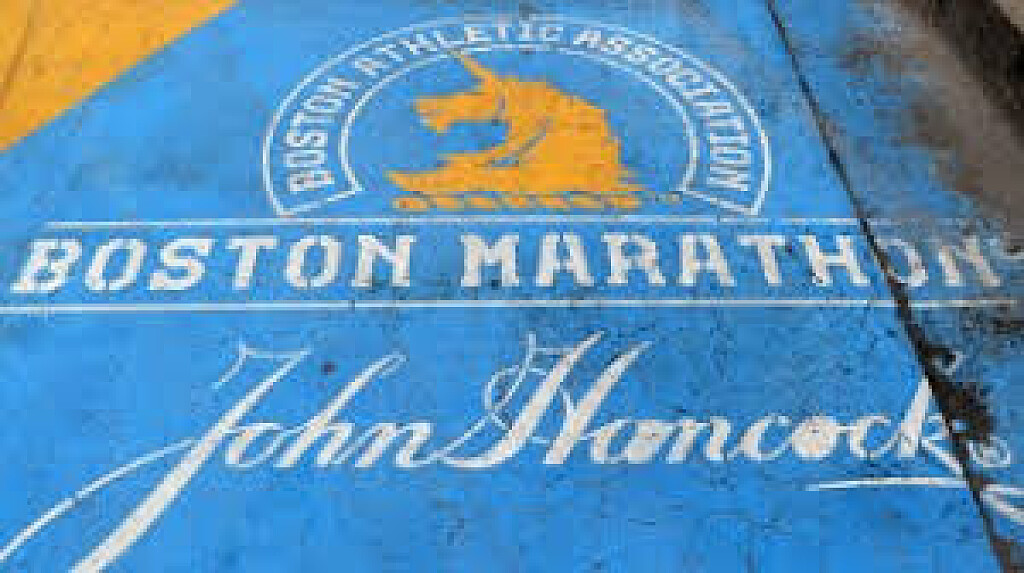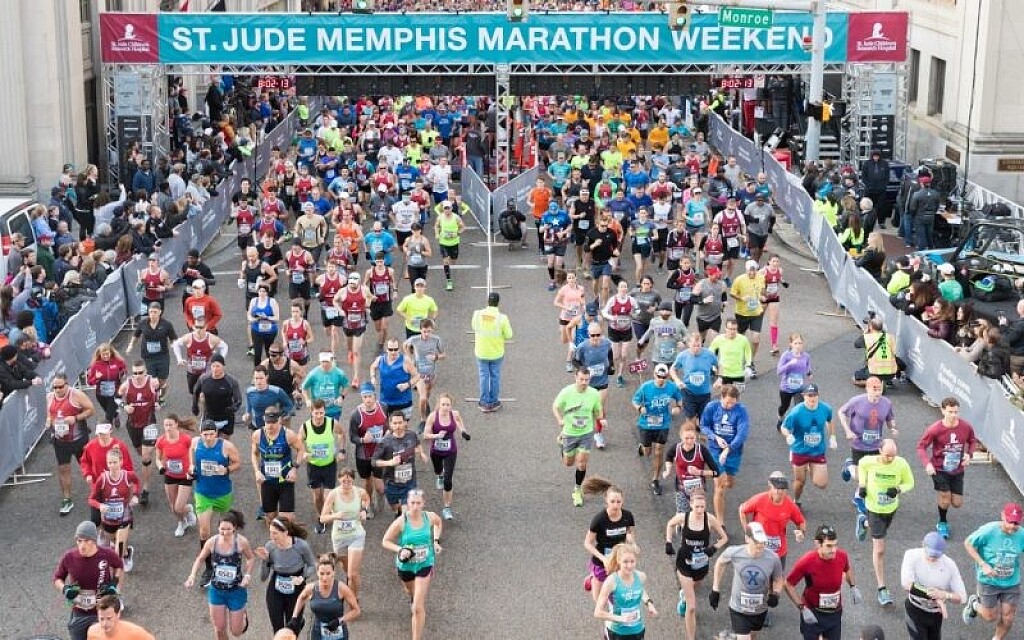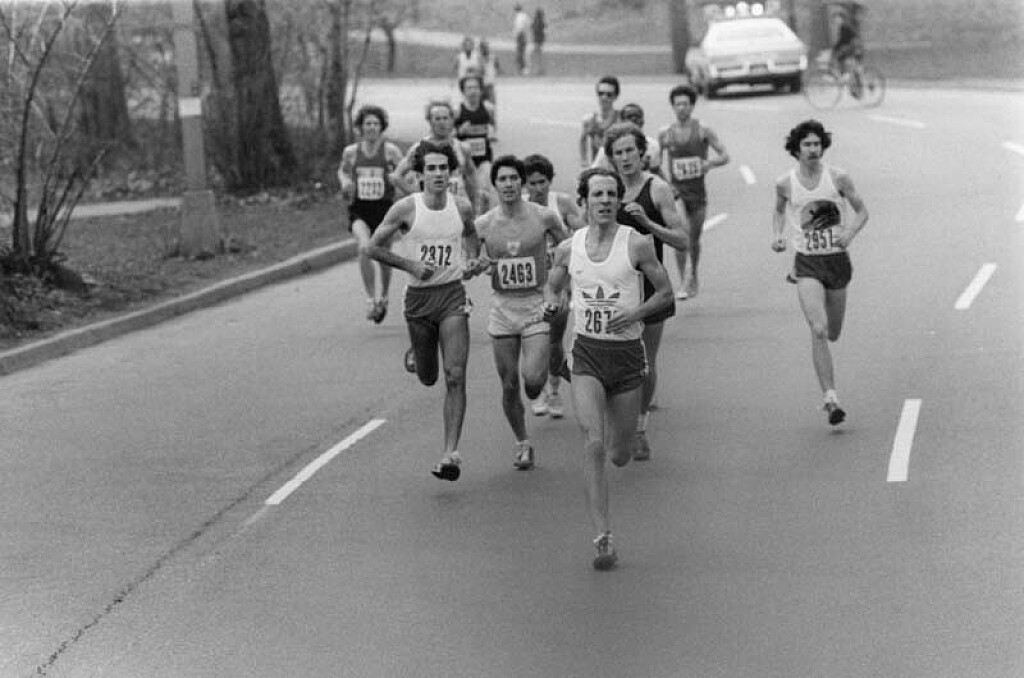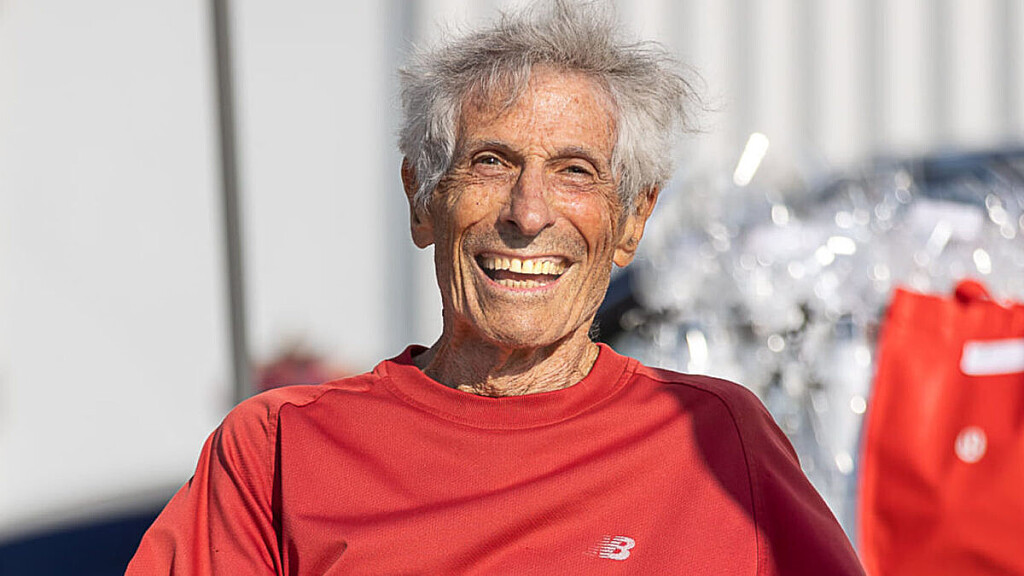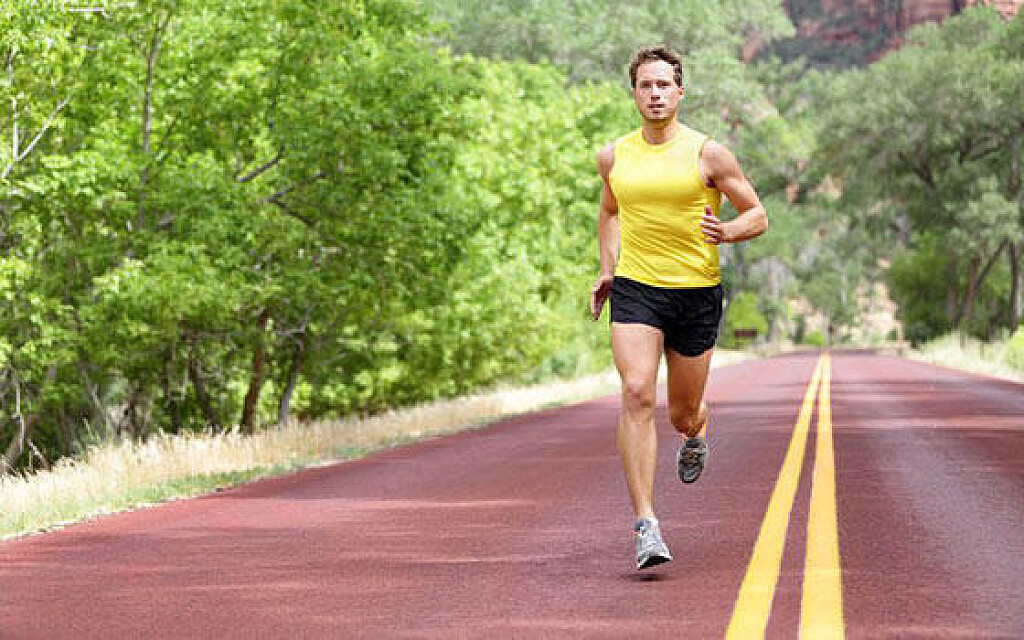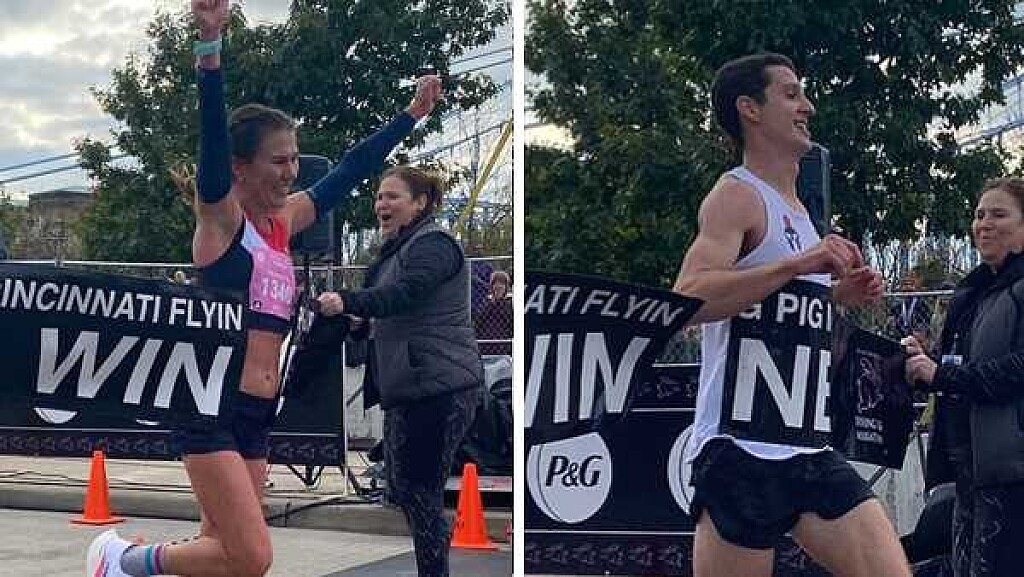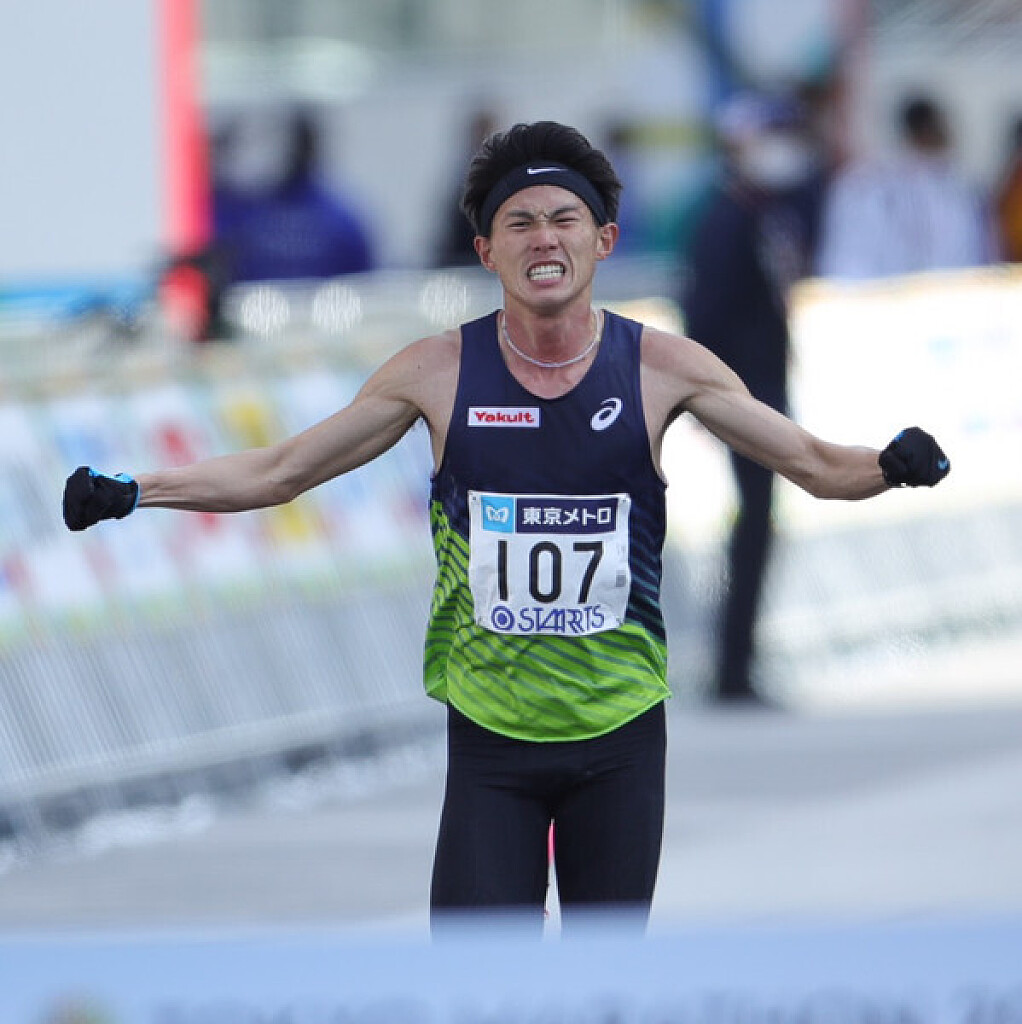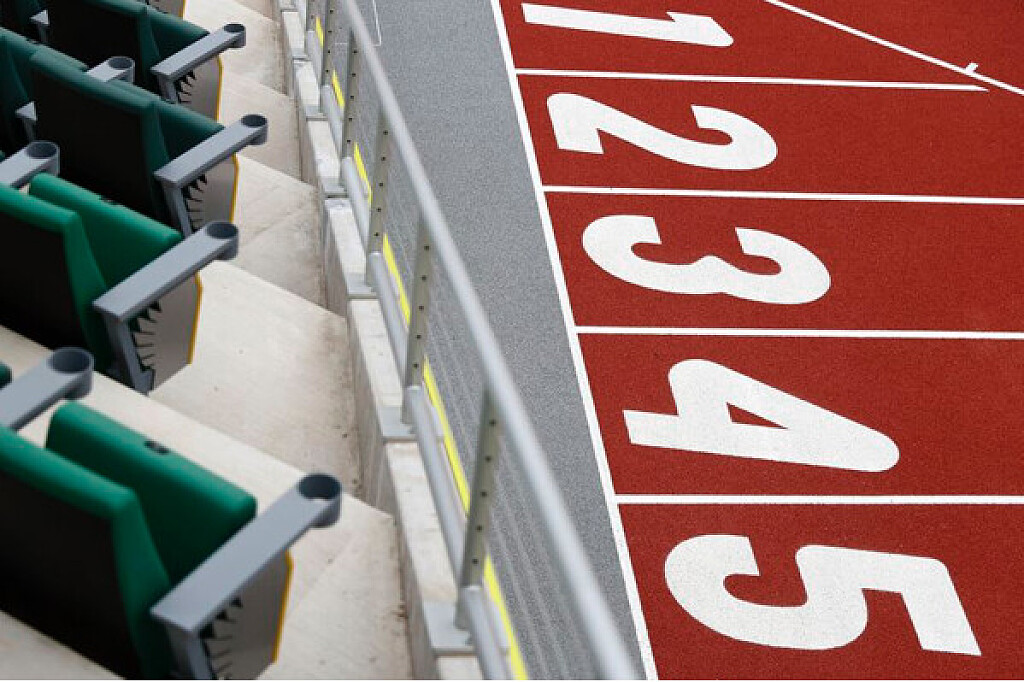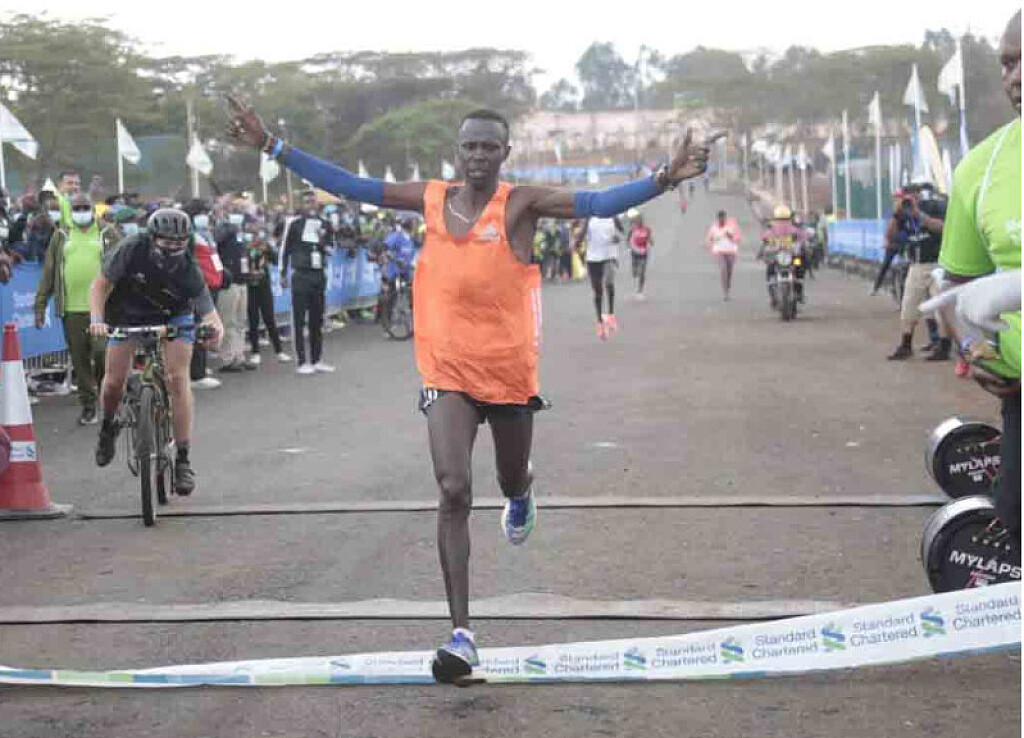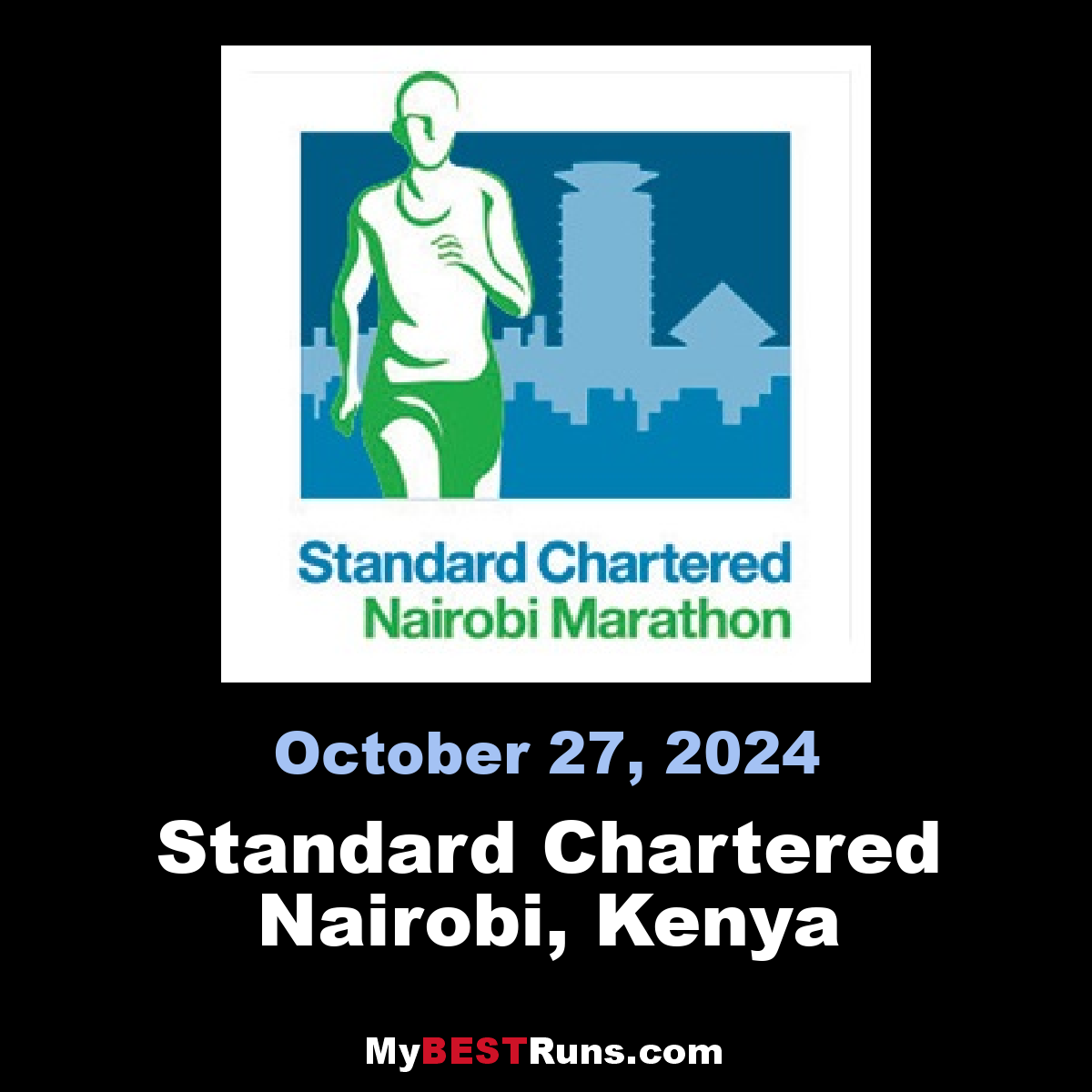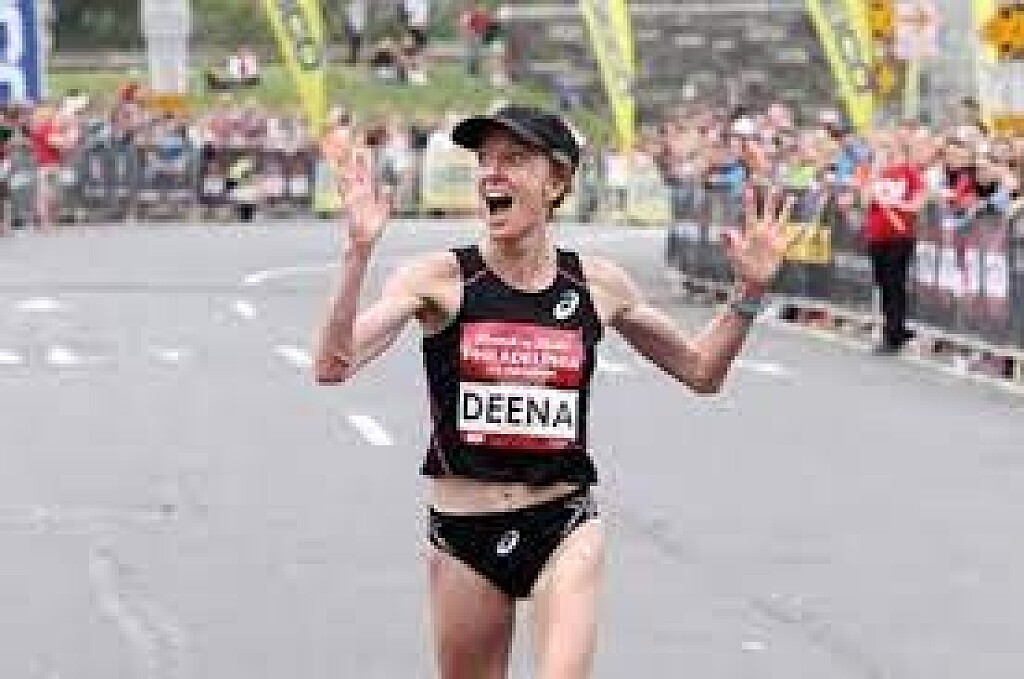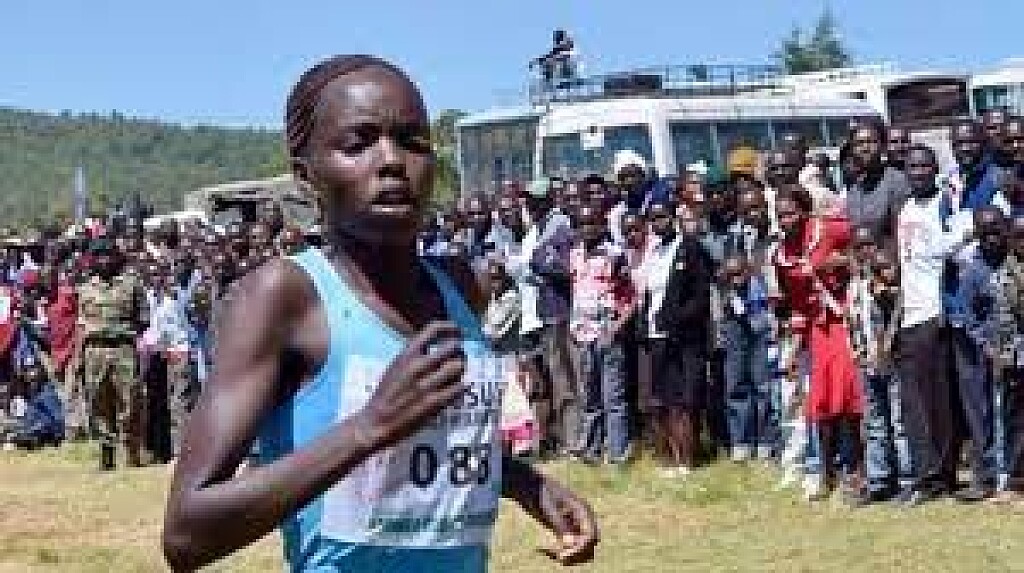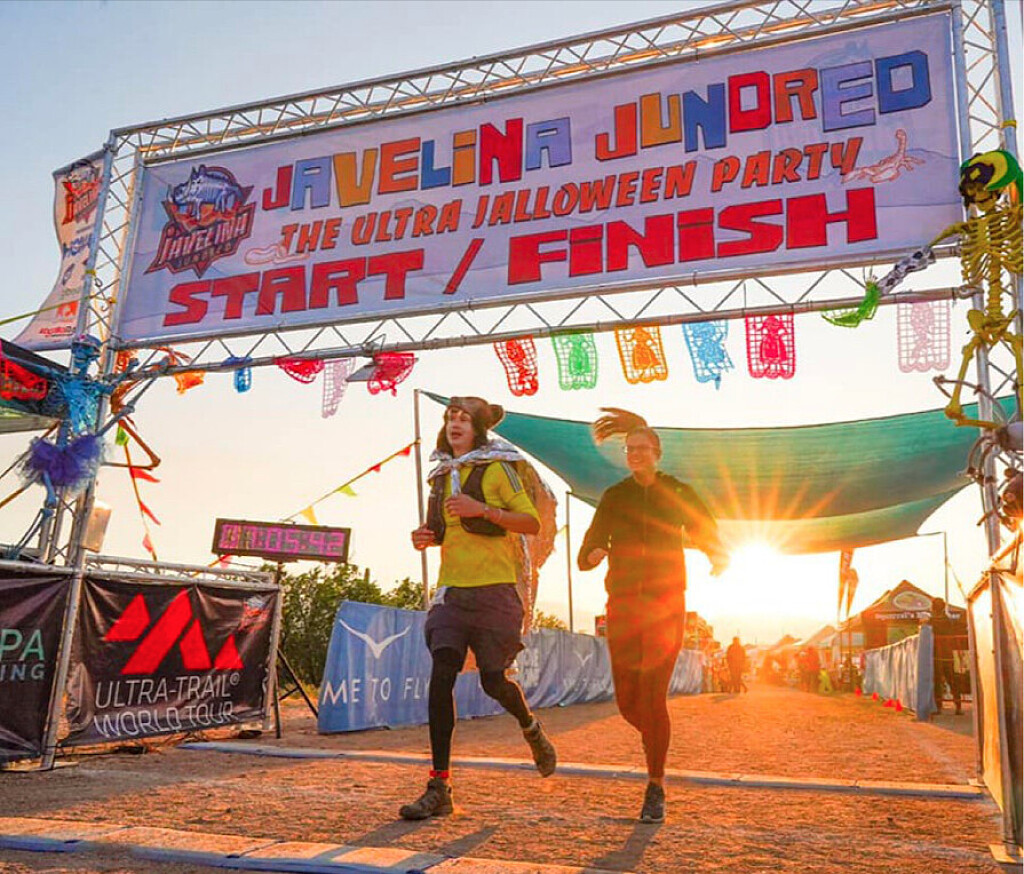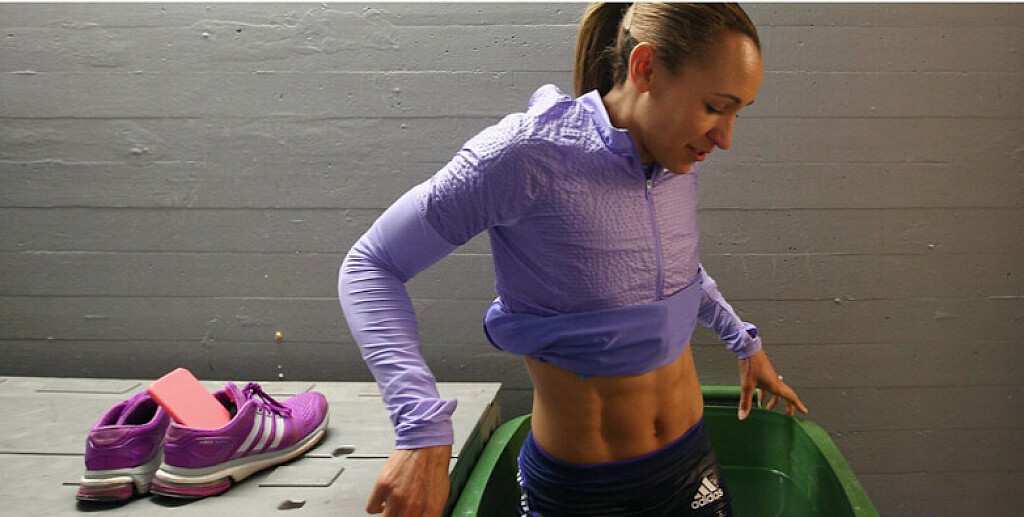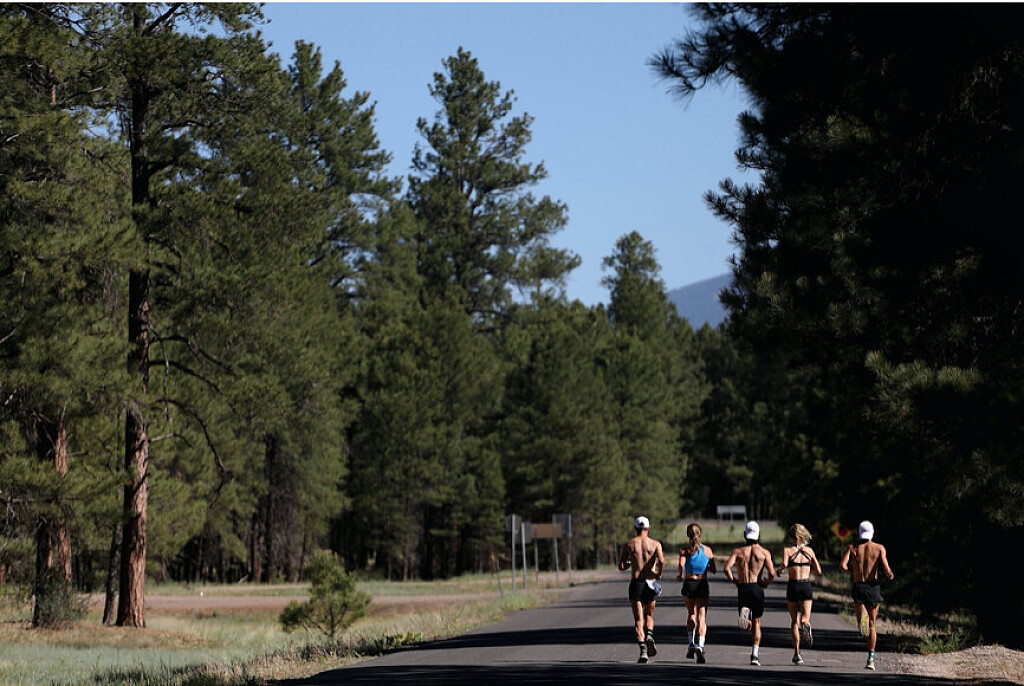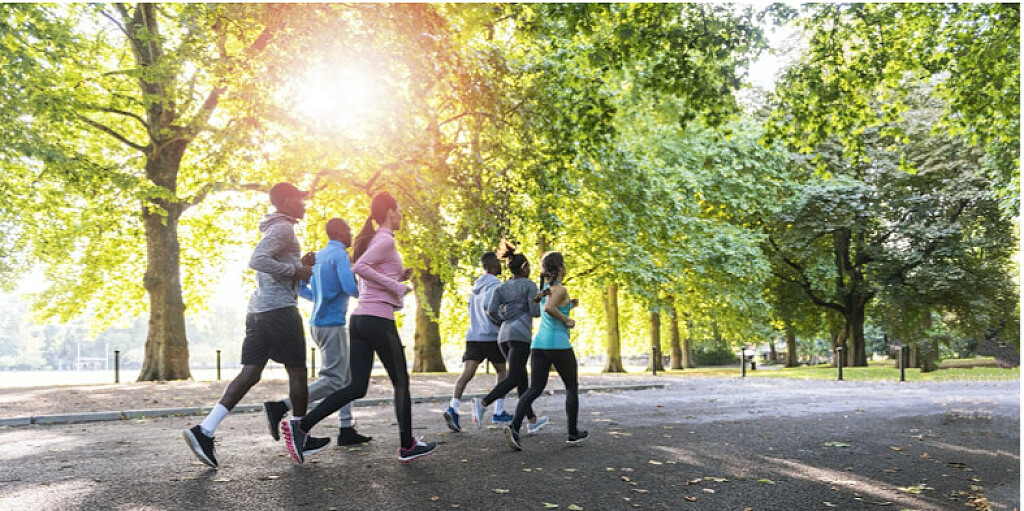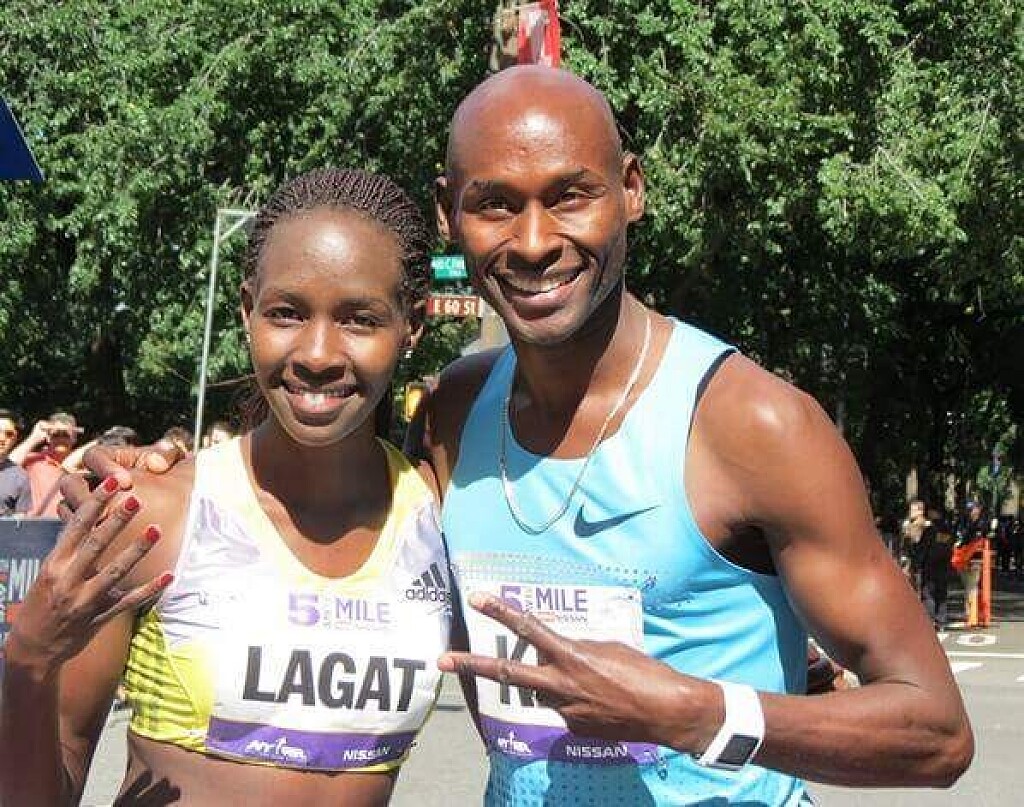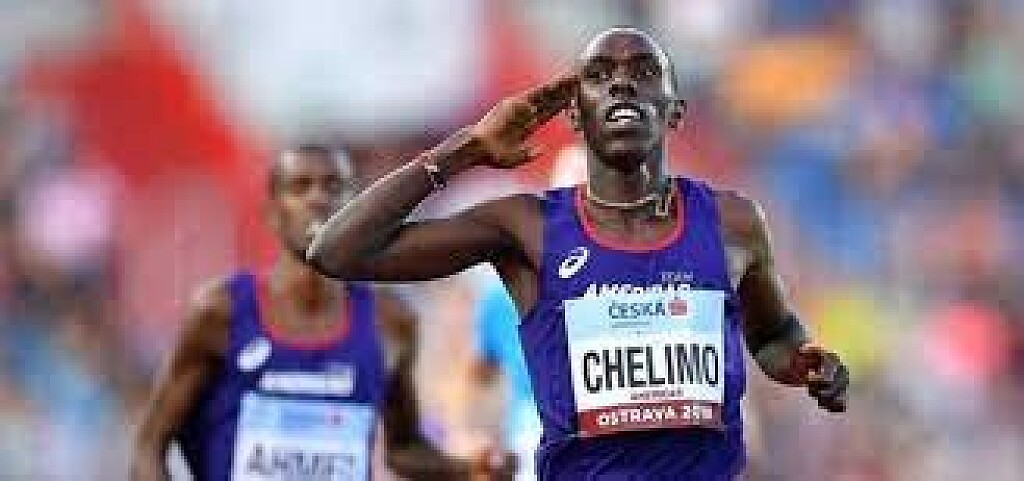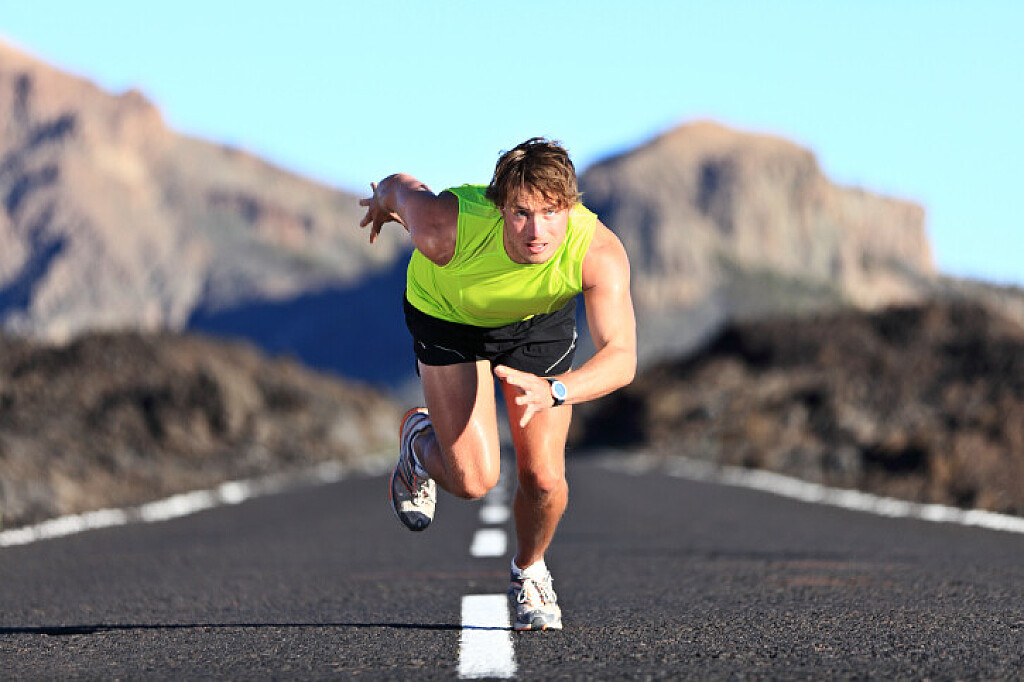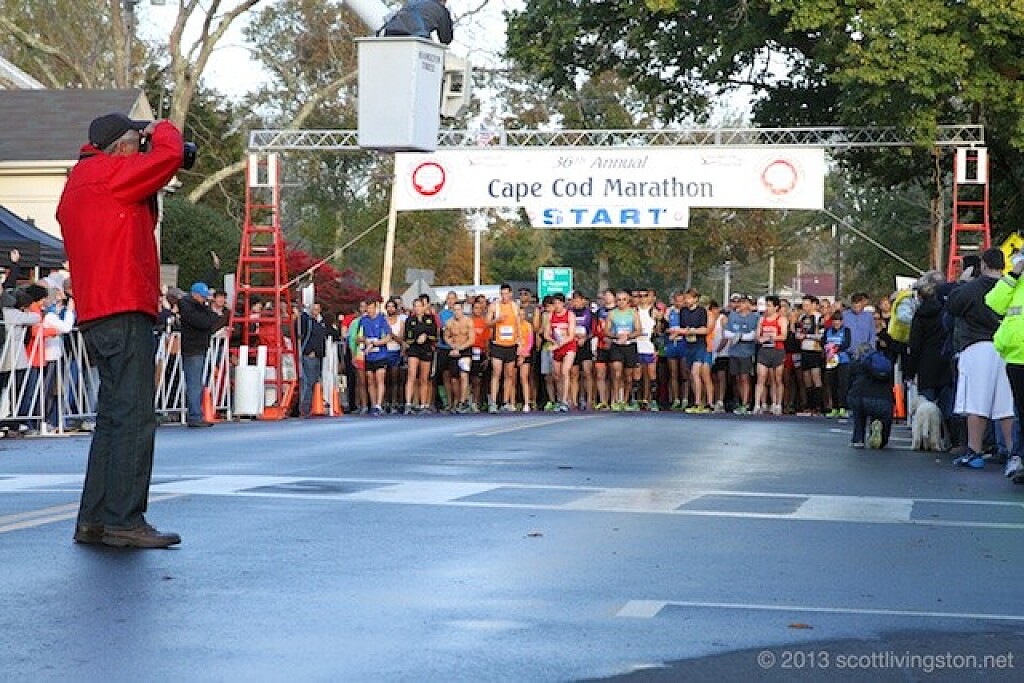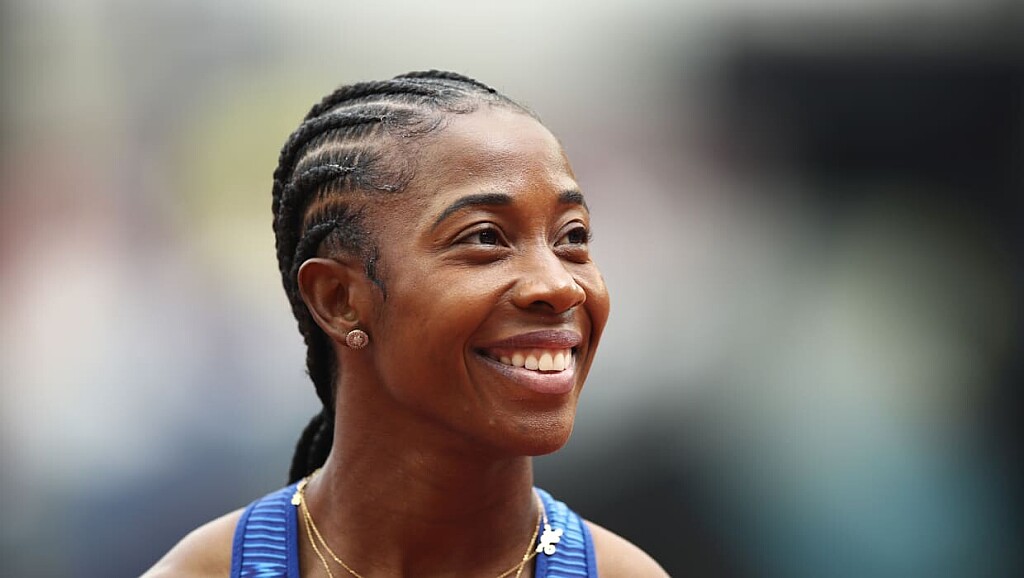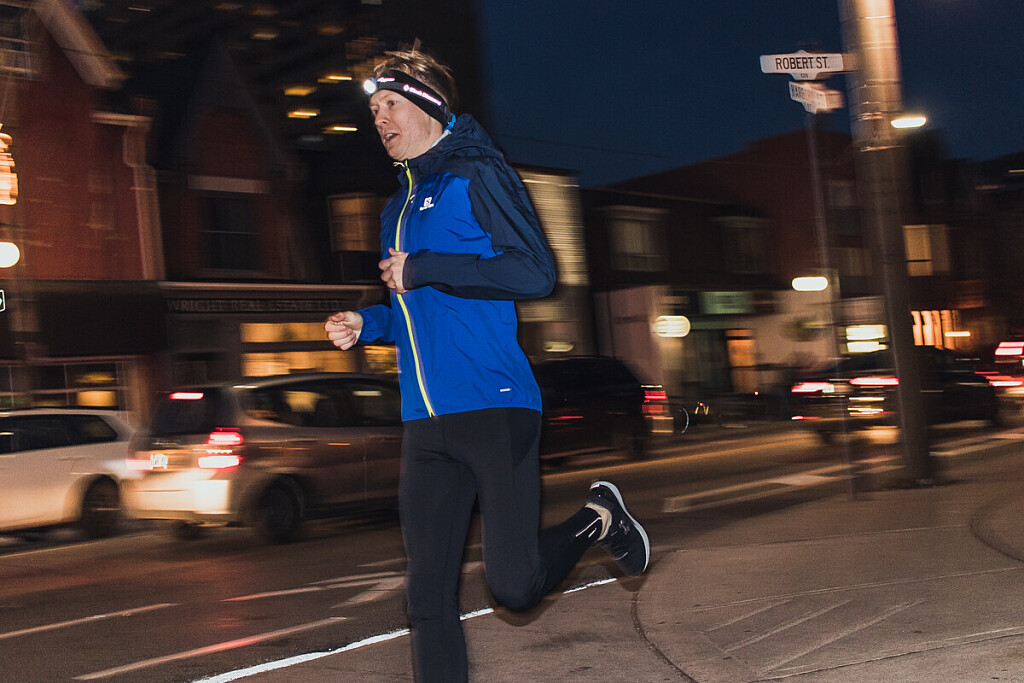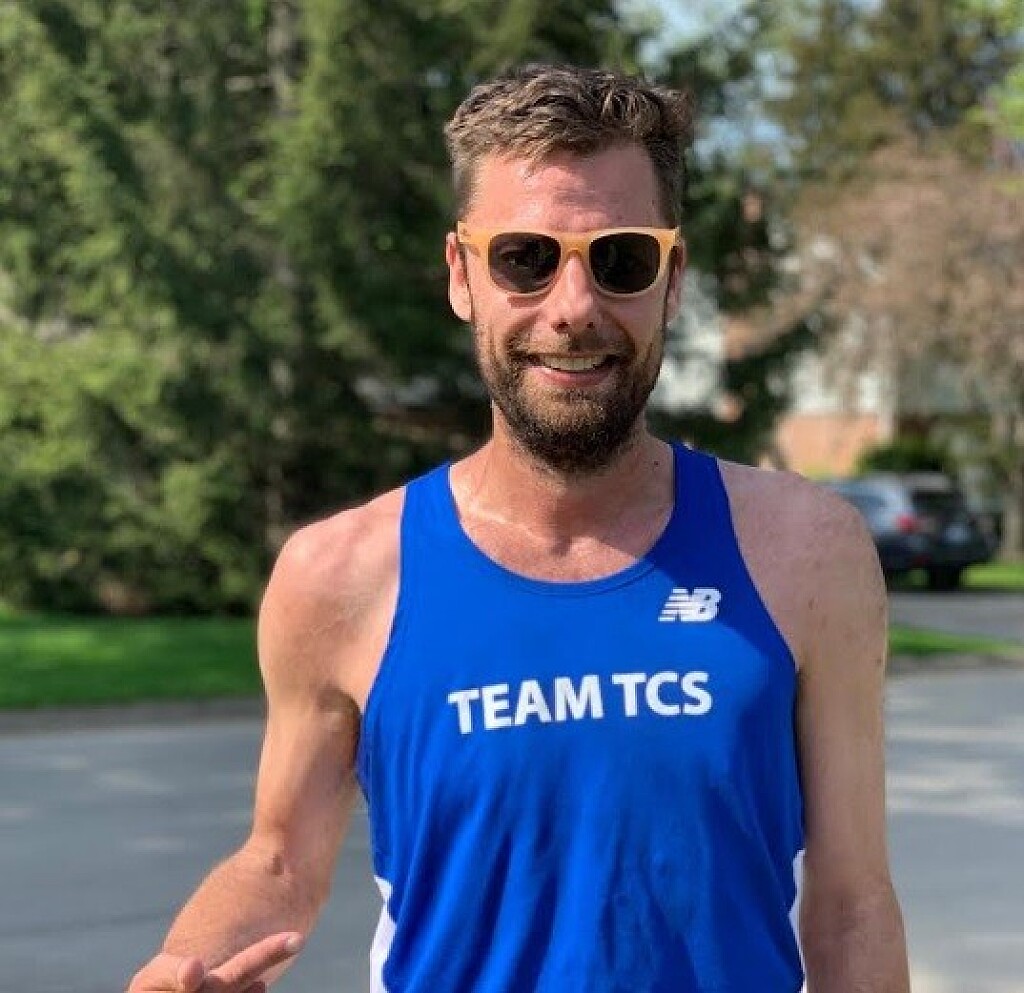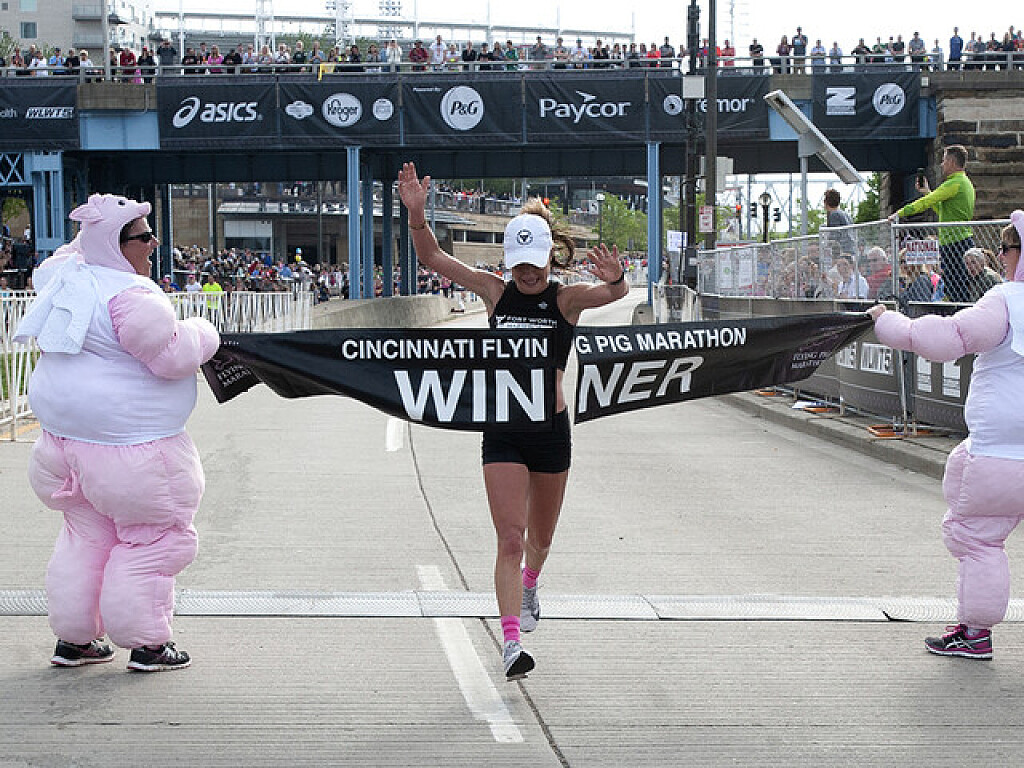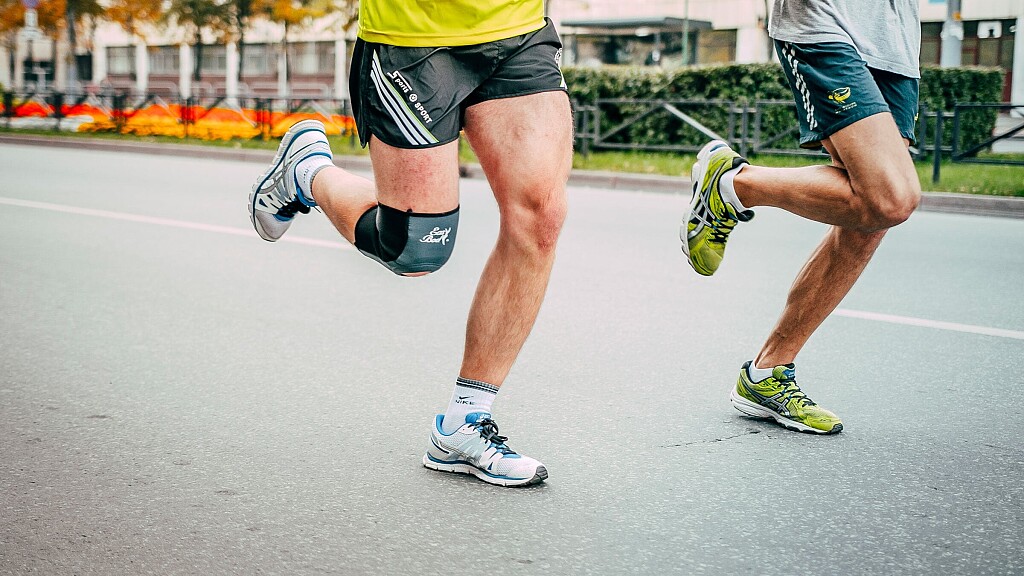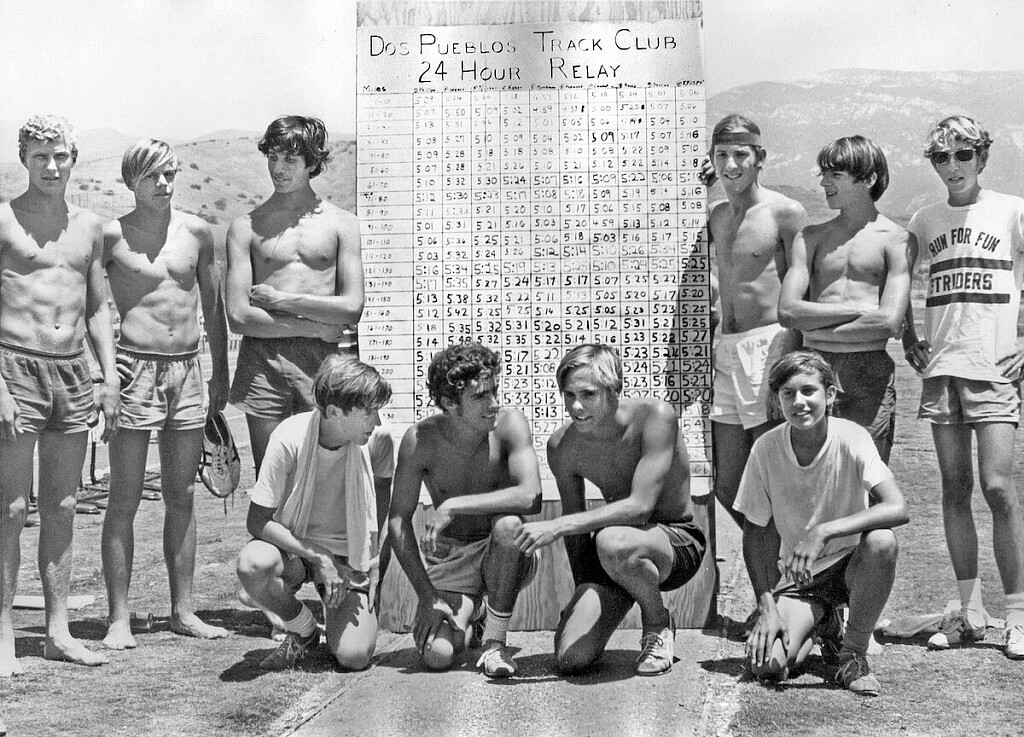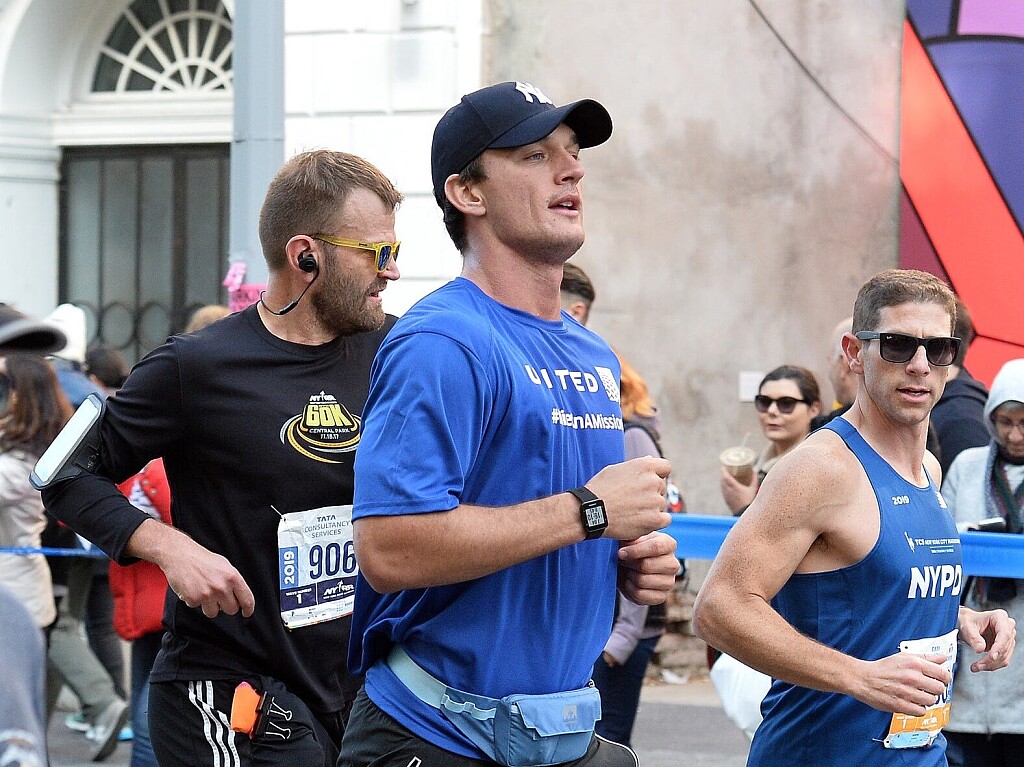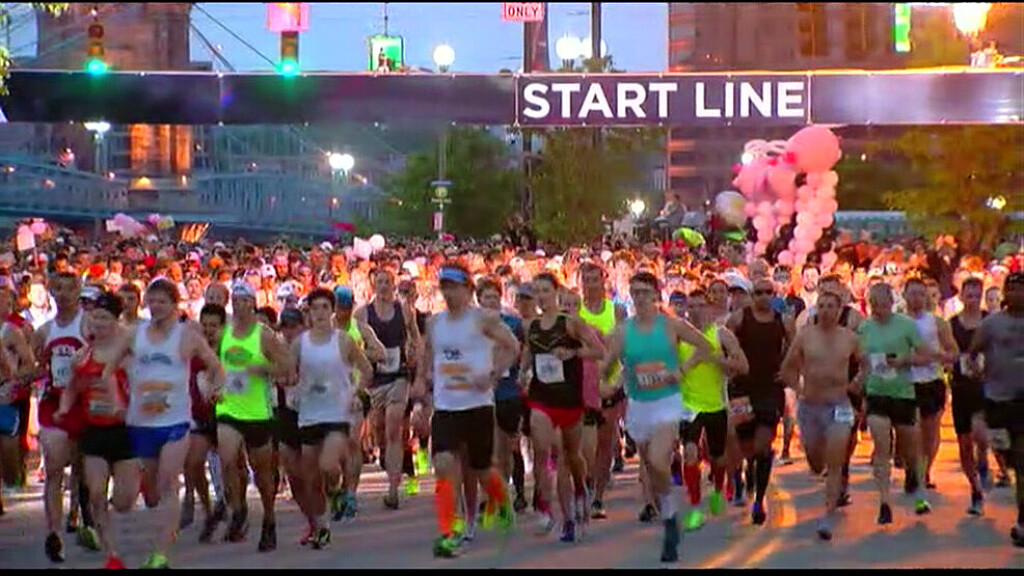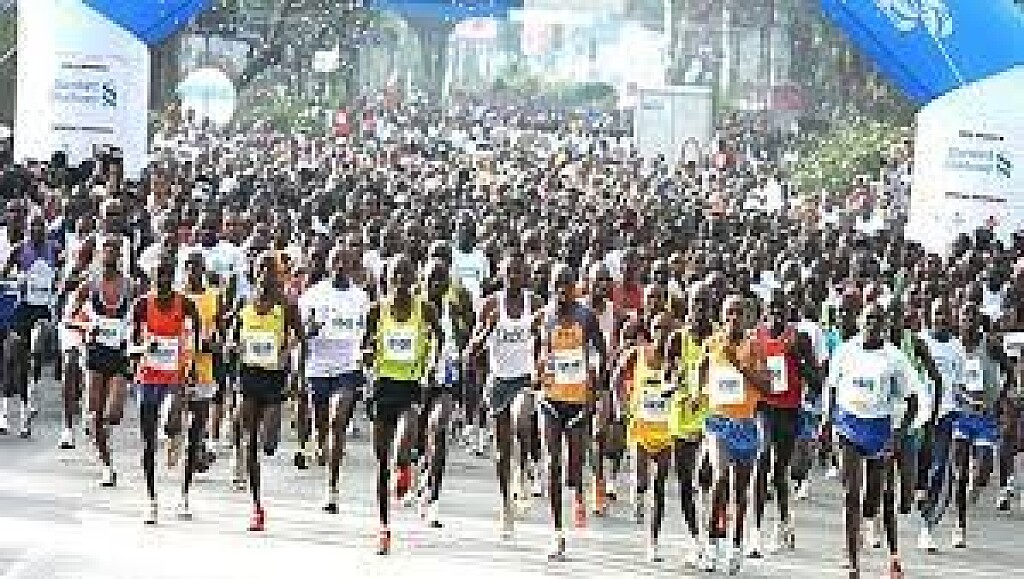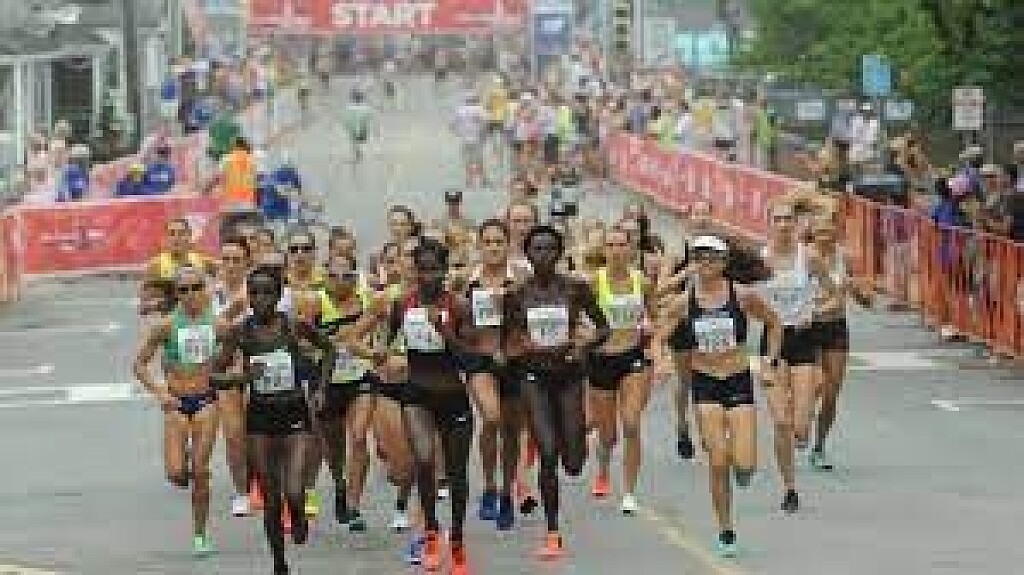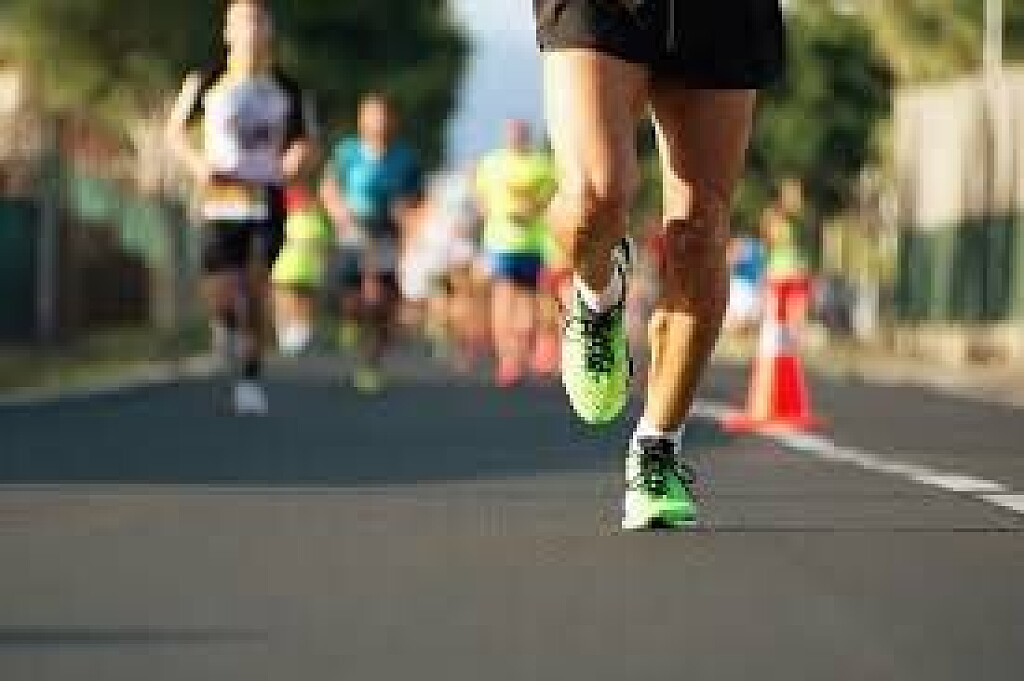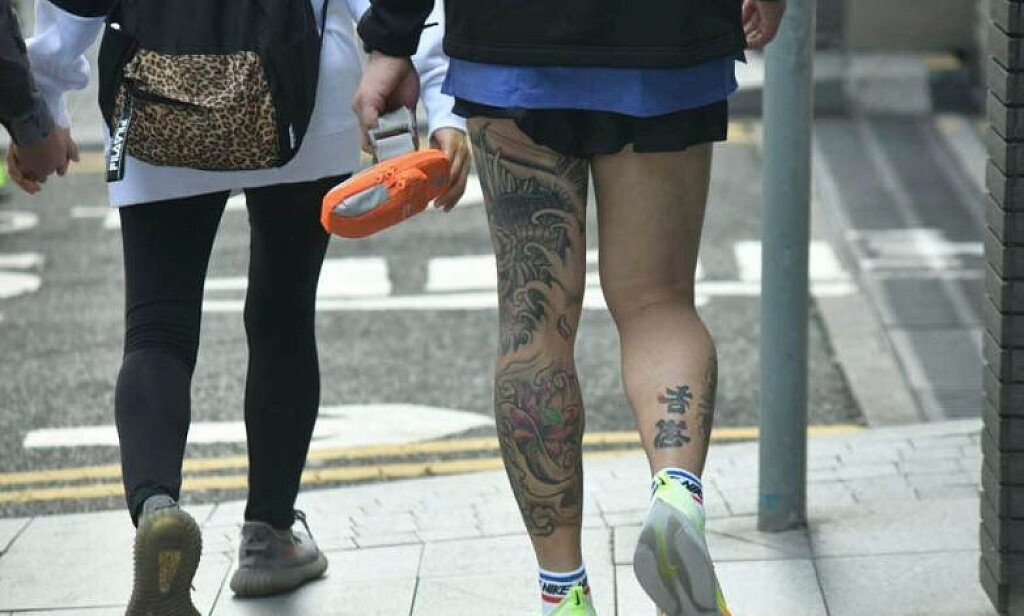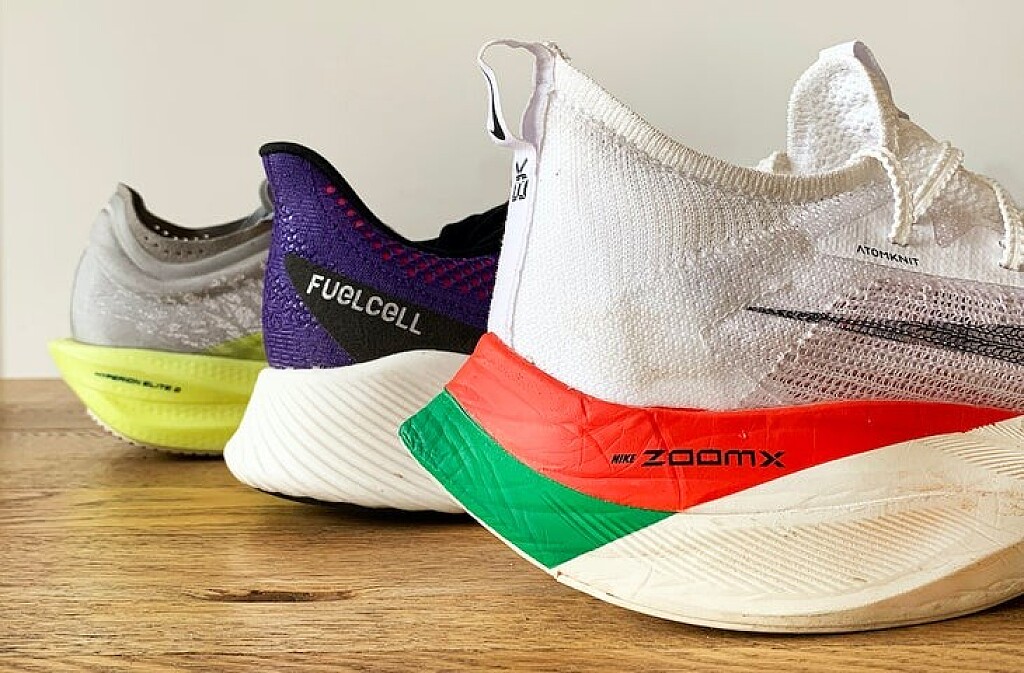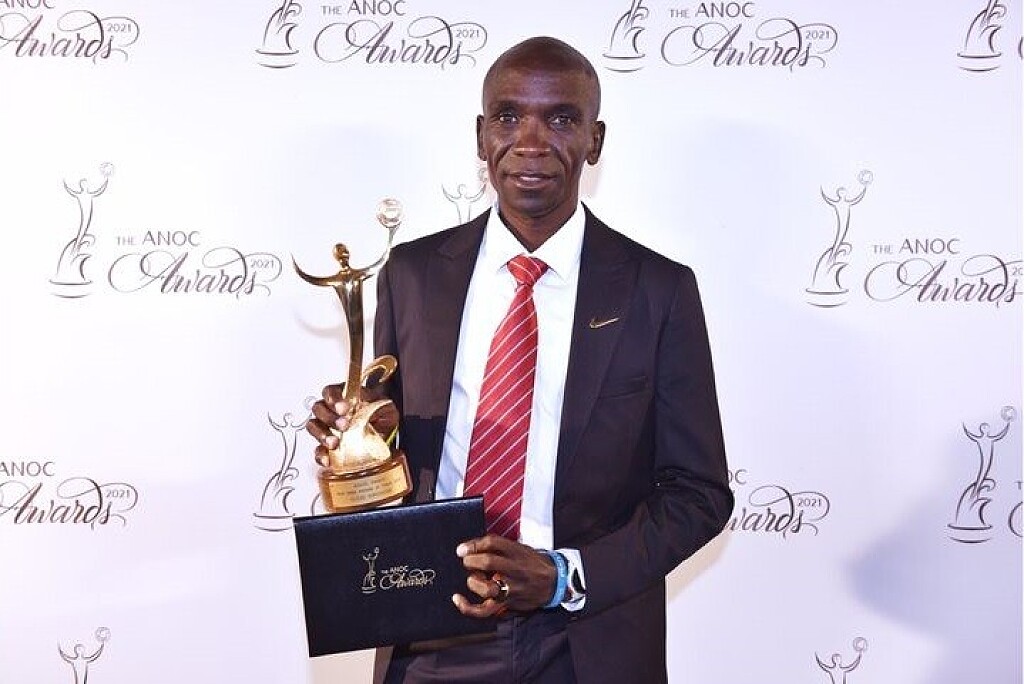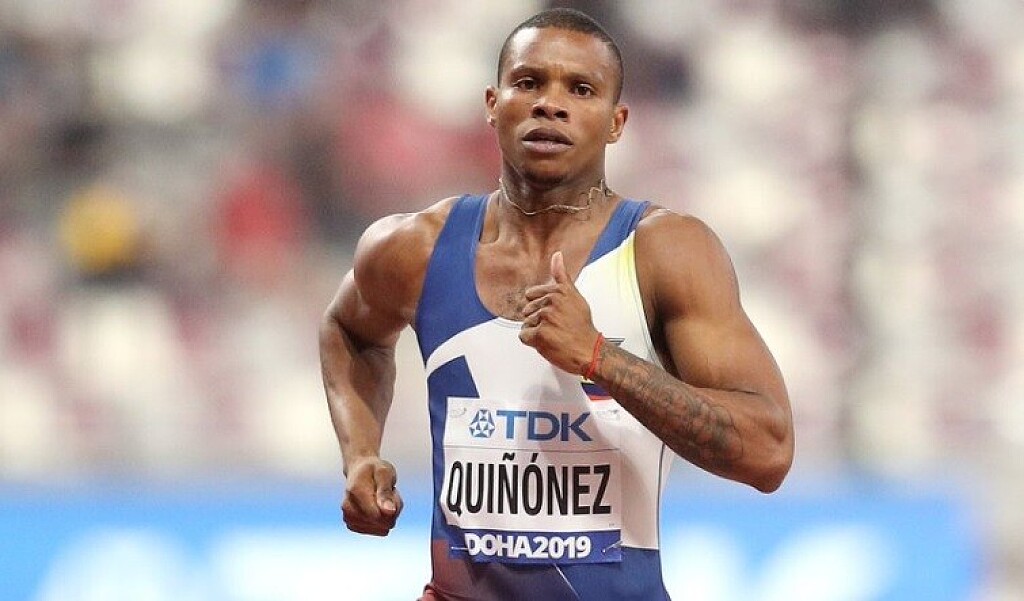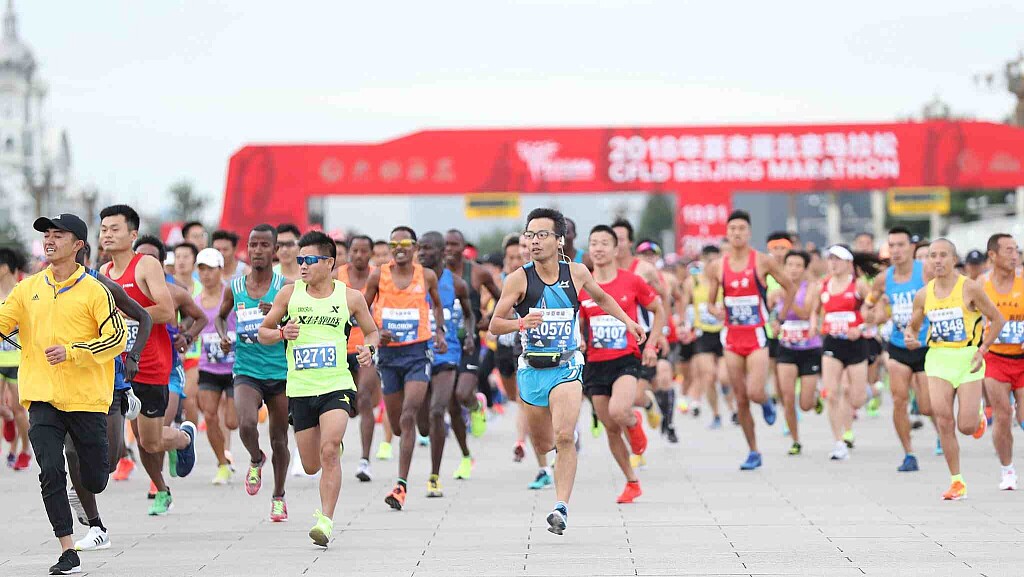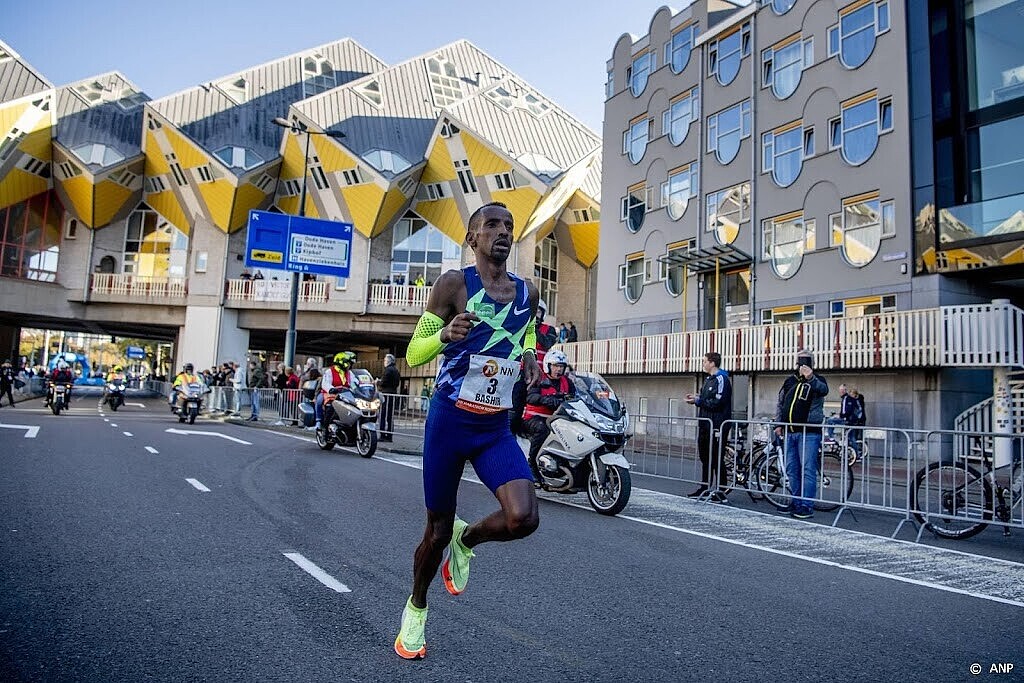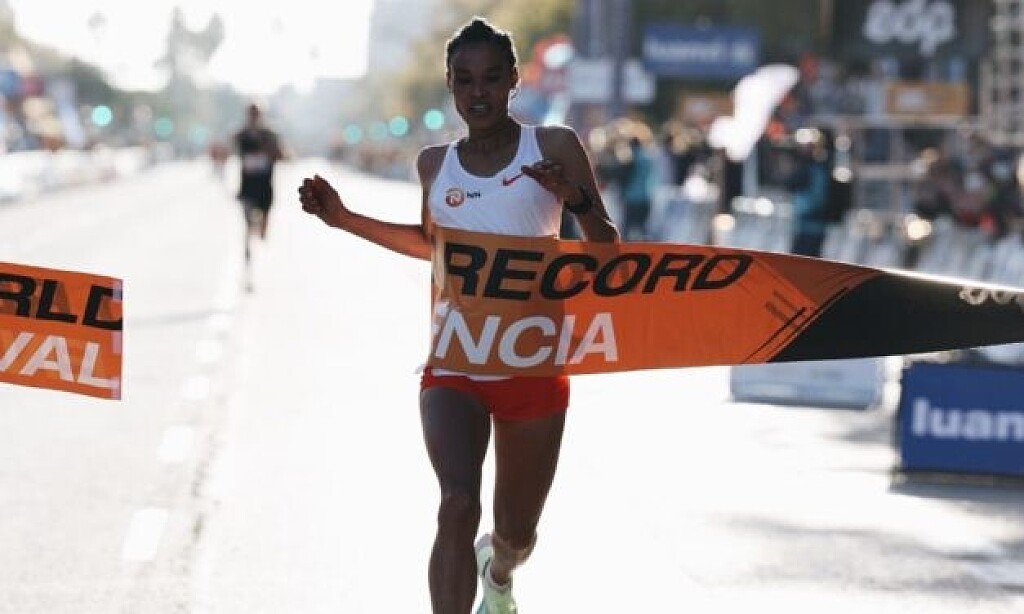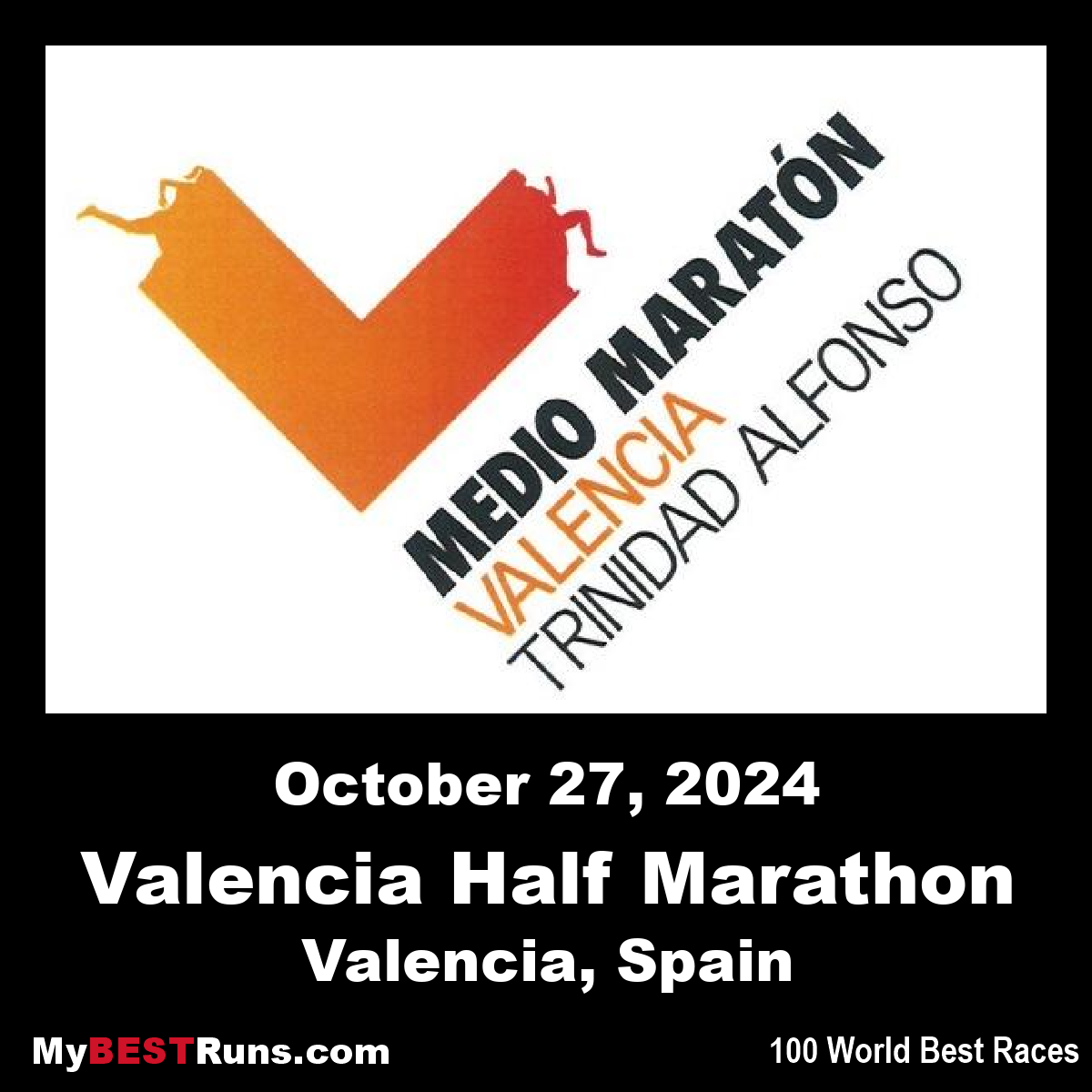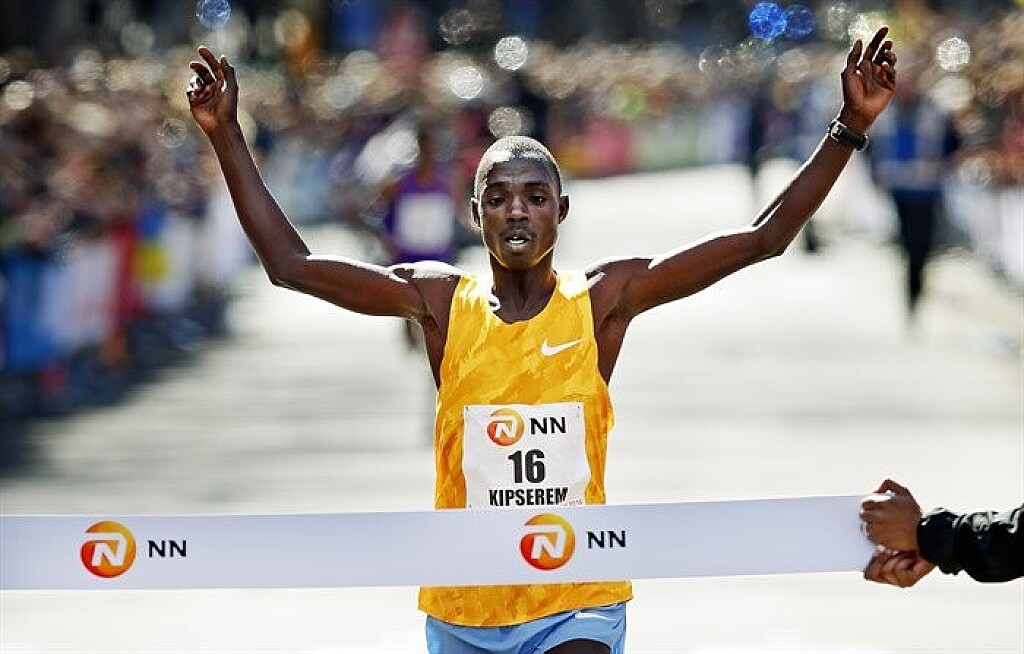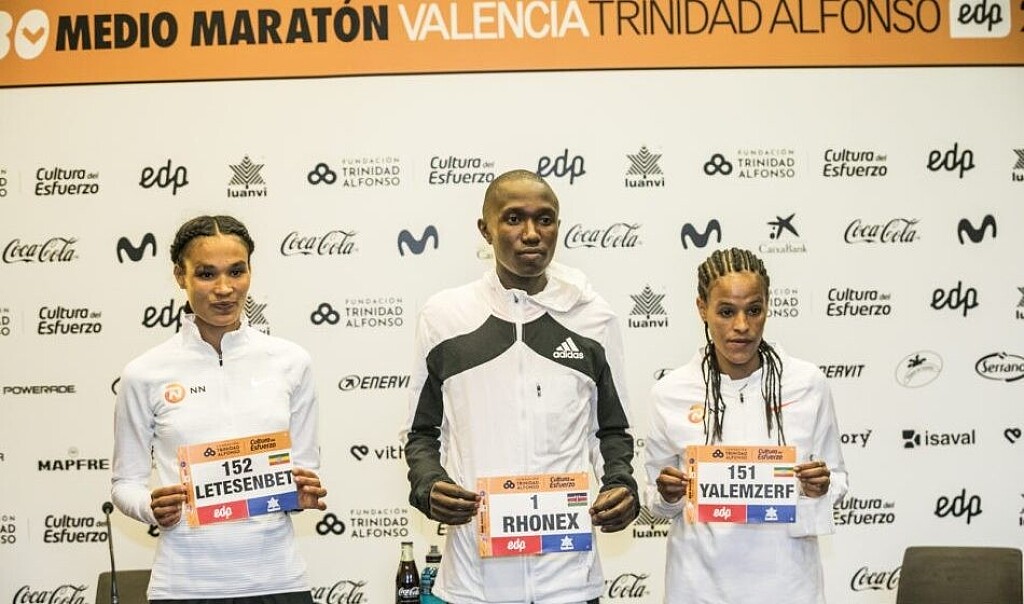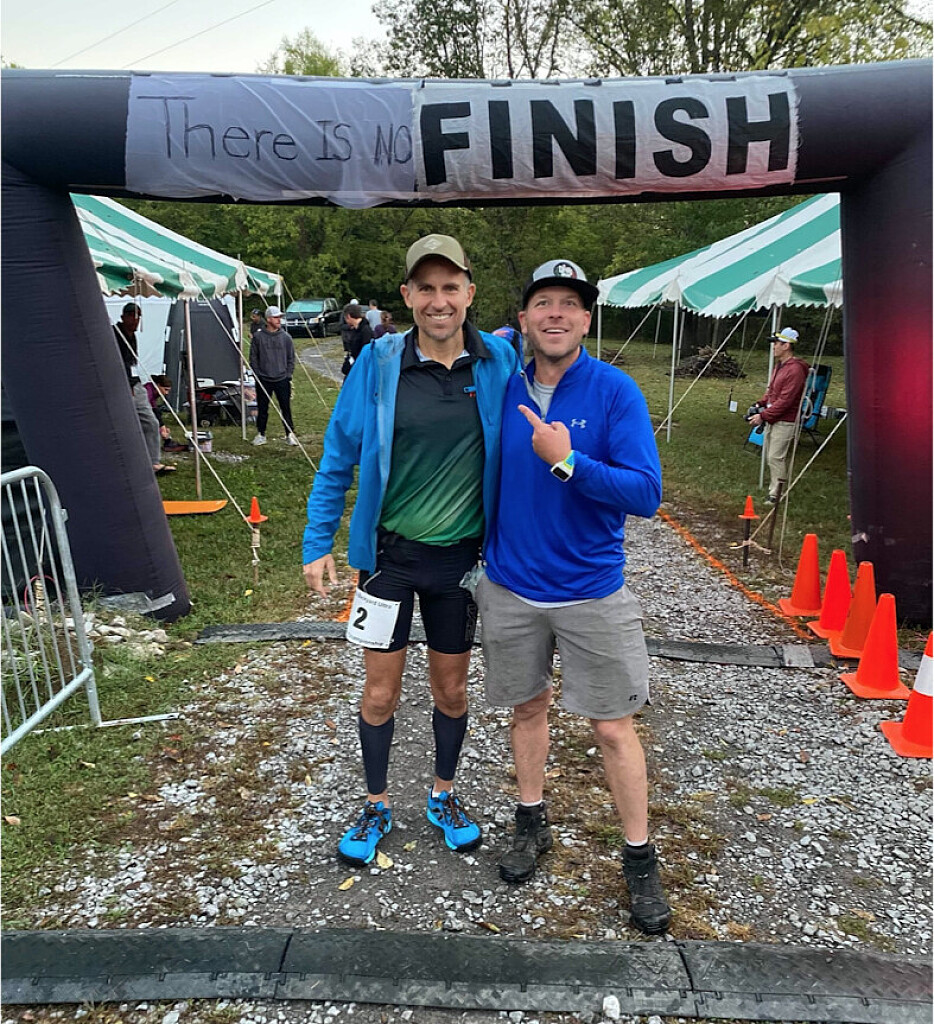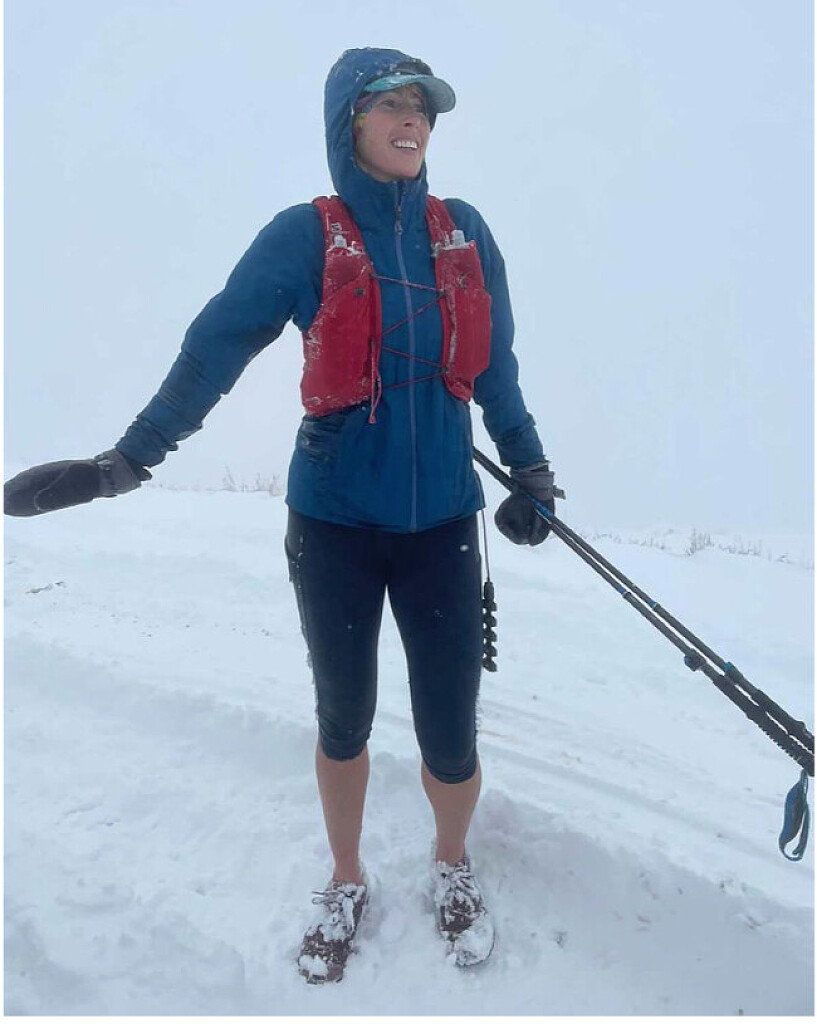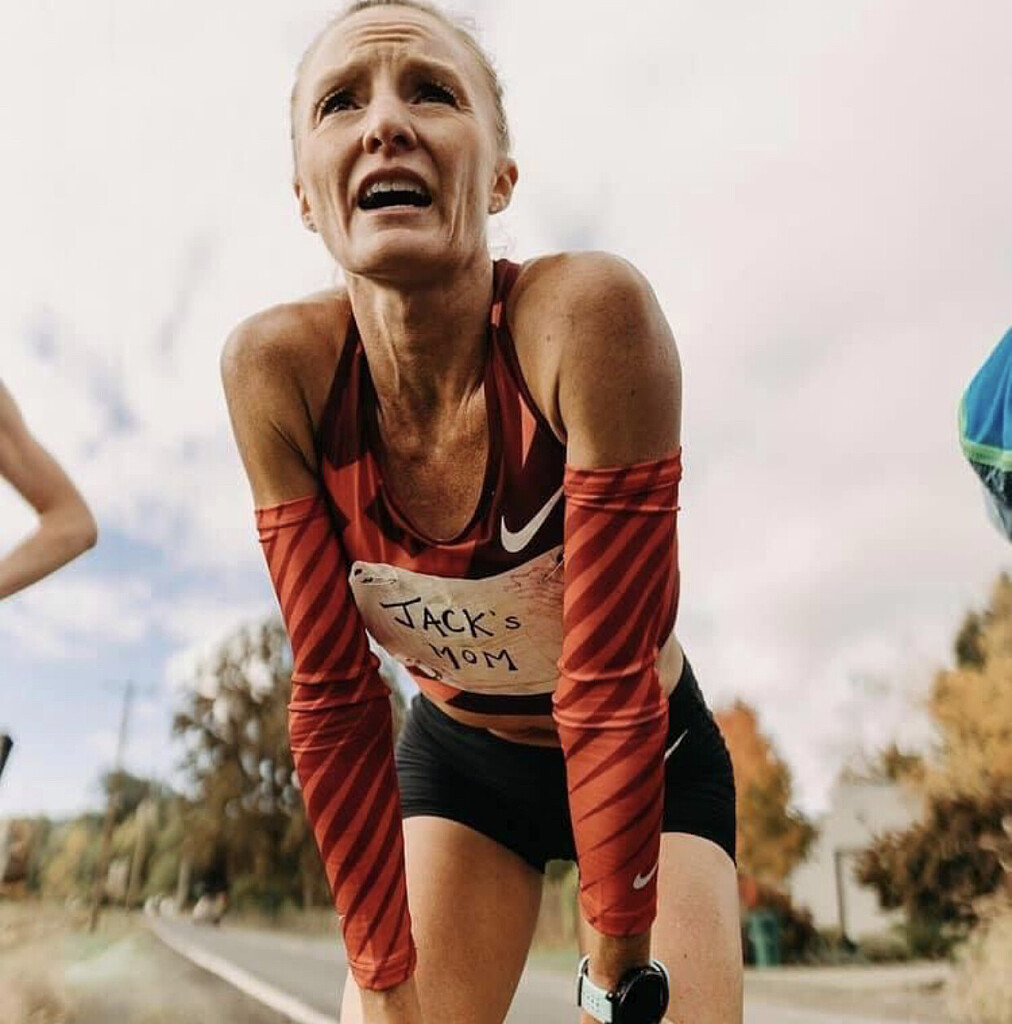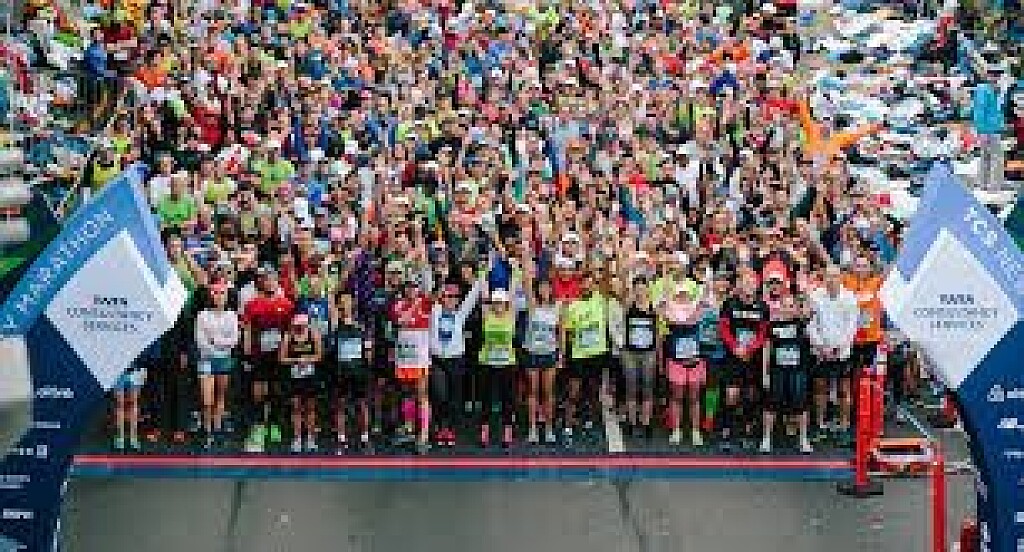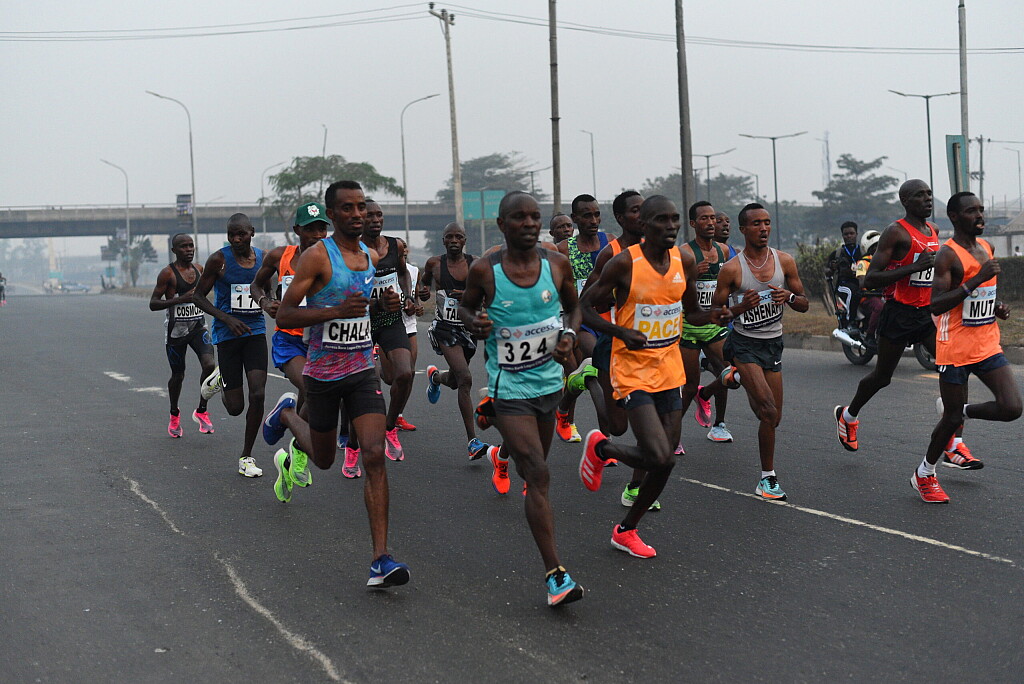Running News Daily
Running News Daily is edited by Bob Anderson. Send your news items to bob@mybestruns.com Advertising opportunities available. Train the Kenyan Way at KATA Kenya and Portugal owned and operated by Bob Anderson. Be sure to catch our movie A Long Run the movie KATA Running Camps and KATA Potato Farms - 31 now open in Kenya! https://kata.ke/
Index to Daily Posts · Sign Up For Updates · Run The World Feed
All athletes running the 2022 Boston Marathon must be fully vaccinated
The Boston Athletic Association (B.A.A.) announced today (Nov 2) that the field size for the 126th Boston Marathon, scheduled to take place on Monday, April 18, 2022, has been established as 30,000 participants. All athletes must be fully vaccinated in order to participate in the race.
“As we look to return to the traditional Patriots’ Day date for the first time since 2019 and allow for as many athletes to participate as safely as possible, we know that a fully vaccinated field is the appropriate requirement to implement,” said Tom Grilk, President & Chief Executive Officer of the B.A.A. “We had a 93% vaccination rate among our 125th Boston Marathon participants and want to do our part to continue to mitigate the spread of COVID-19 as we continue our return to racing.”
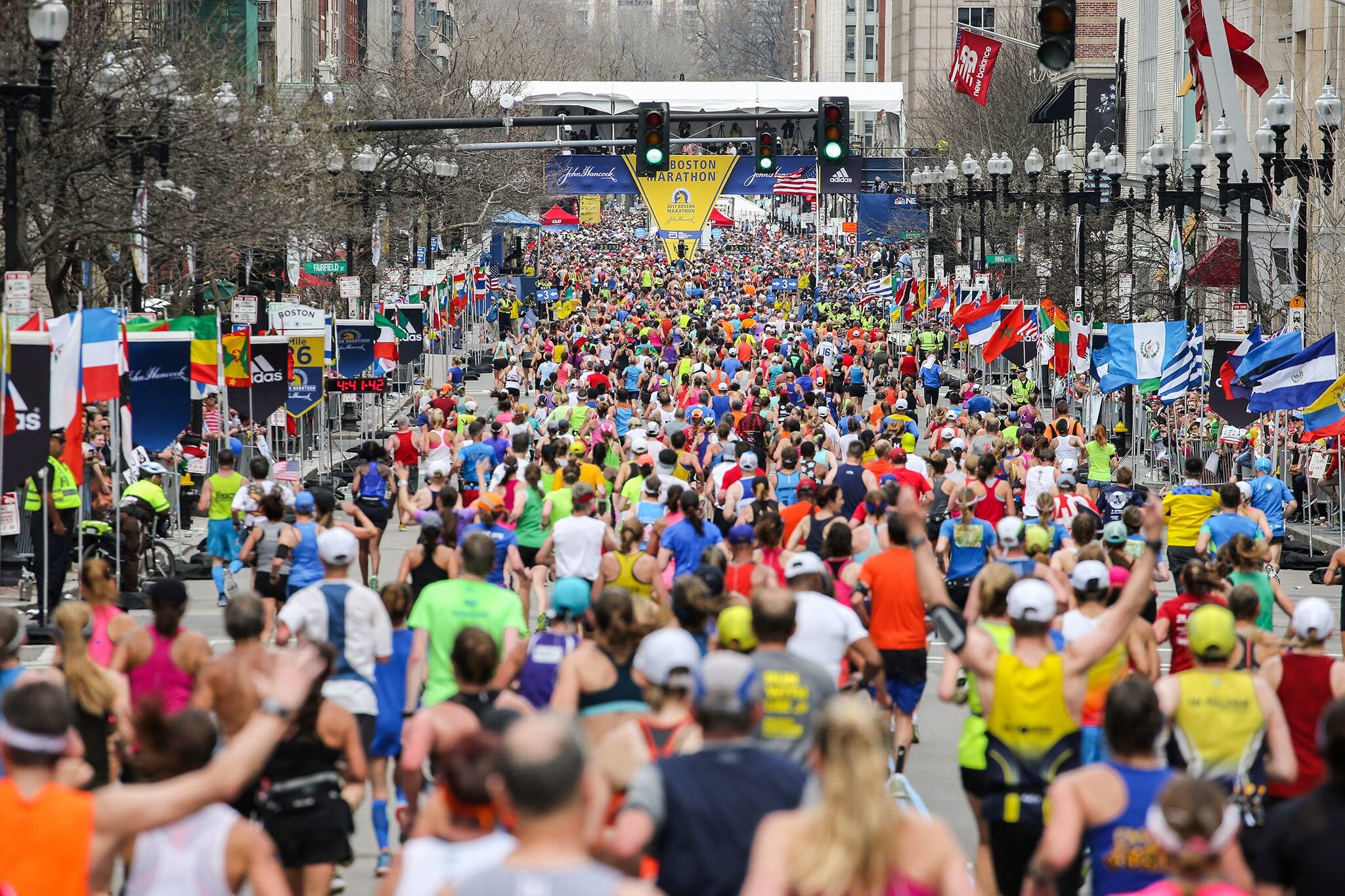
Participants will need to provide proof of vaccination prior to participating in the April 18, 2022 race. To be considered fully vaccinated participants must have completed a vaccination series of a World Health Organization-certified vaccine prior to bib number pick up (Friday, April 15). Any registered athlete who cannot provide proof of vaccination will not be allowed to participate in the race. Entries will not be deferred, refunded, or transferred to a future race. Requests for a medical exemption will be reviewed individually.
Registration for the 2022 Boston Marathon will take place over five days, opening on Monday, November 8 at 10:00 a.m. ET and closing on November 12, 2021 at 5:00 p.m. ET. The B.A.A. will use the same registration process for qualified runners as it used for the 2021 race, allowing any athlete who has achieved a currently valid Boston Marathon qualifying time to submit a registration application between November 8-12, 2021 through the B.A.A.’s online platform, Athletes' Village. Registration is not first come, first served and applications will be accepted until 5:00 p.m. ET on Friday, November 12. The qualifying window began on September 1, 2019 and will close at 5:00 p.m. ET on Friday, November 12.
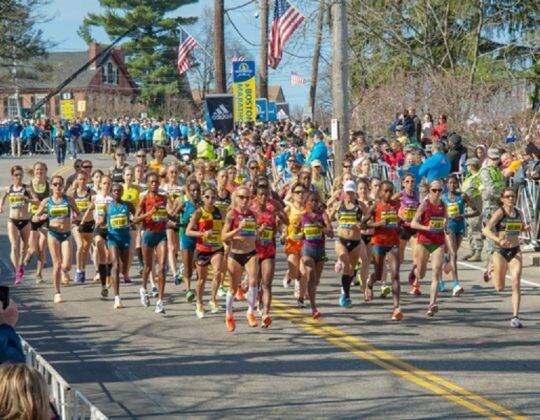
Qualifying standards for the 126th Boston Marathon can be found here. Qualifiers may submit an application at any point during the registration window. Achieving one’s qualifying standard does not guarantee acceptance into the Boston Marathon due to field size limitations. Those who are fastest among the pool of applicants in their age and gender group will be accepted.
The entry fee for qualifiers will remain $205 USD for United States residents and $255 USD for international residents. For the second straight year, participants will have the opportunity to purchase registration insurance at the point of registration.
The qualifying window for the 127th Boston Marathon, scheduled to take place on April 17, 2023, began on September 1, 2021. Registration details for that race will be announced following the 2022 Boston Marathon.
(11/02/2021) ⚡AMPBoston Marathon
Among the nation’s oldest athletic clubs, the B.A.A. was established in 1887, and, in 1896, more than half of the U.S. Olympic Team at the first modern games was composed of B.A.A. club members. The Olympic Games provided the inspiration for the first Boston Marathon, which culminated the B.A.A. Games on April 19, 1897. John J. McDermott emerged from a...
more...Runners win places in Paris 2024 mass-participation marathon after racing Kipchoge
More than 1,000 runners secured their placed in Paris 2024’s mass-participation marathon after holding off Olympic champion Eliud Kipchoge in a special event arranged to mark the 1,000 days countdown to the Opening Ceremony.
The event at the Champs-Elysée in Paris saw a pursuit-style race held over five kilometres.
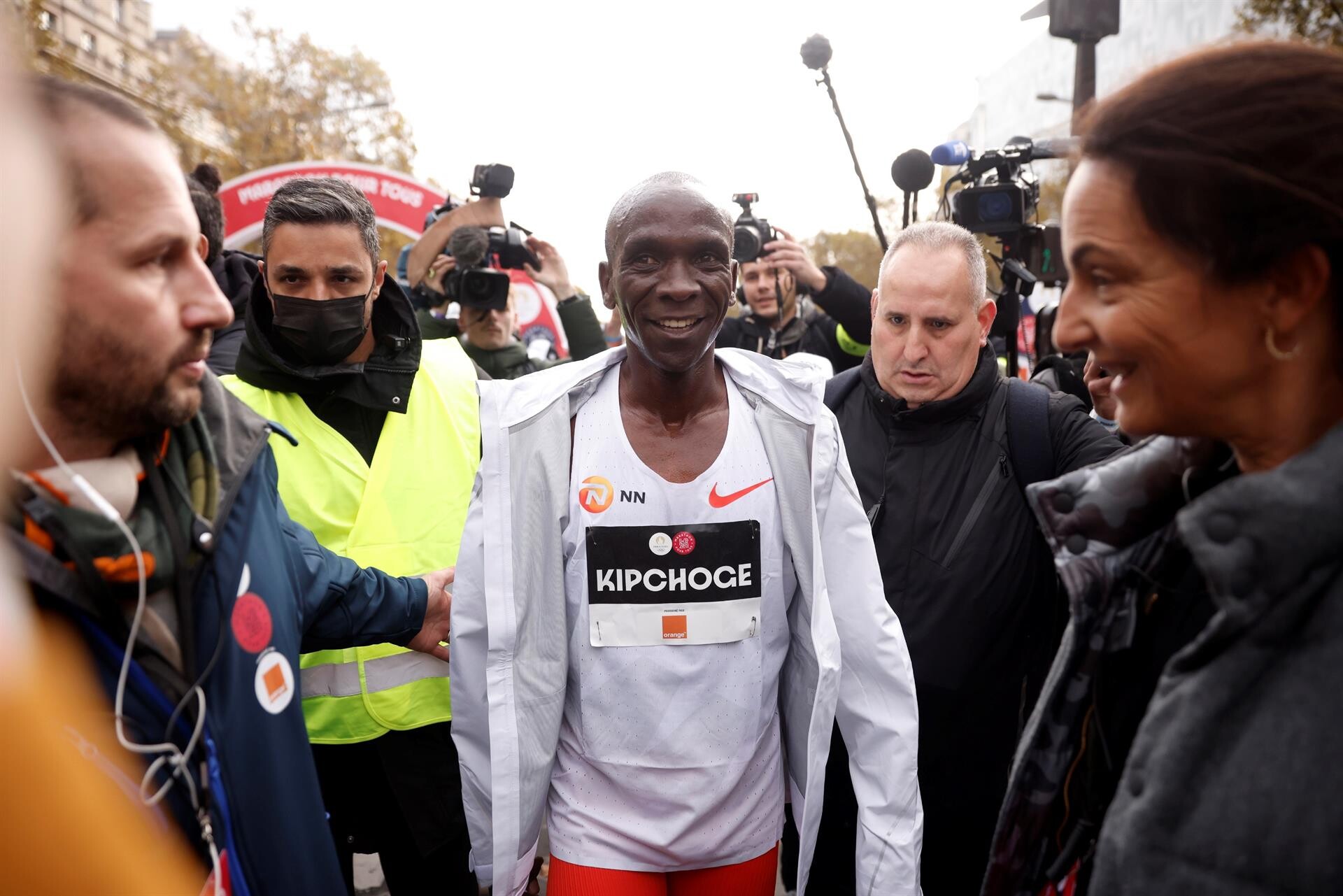
Paris 2024 says more than 3,600 members of Club Paris 2024 and the Orange Running Team participated in the event.
Club Paris 2024 was launched last year by the Organising Committee, offering the public the chance to secure privileges in the build-up to the Olympic and Paralympic Games, including the potential to carry the Flame.
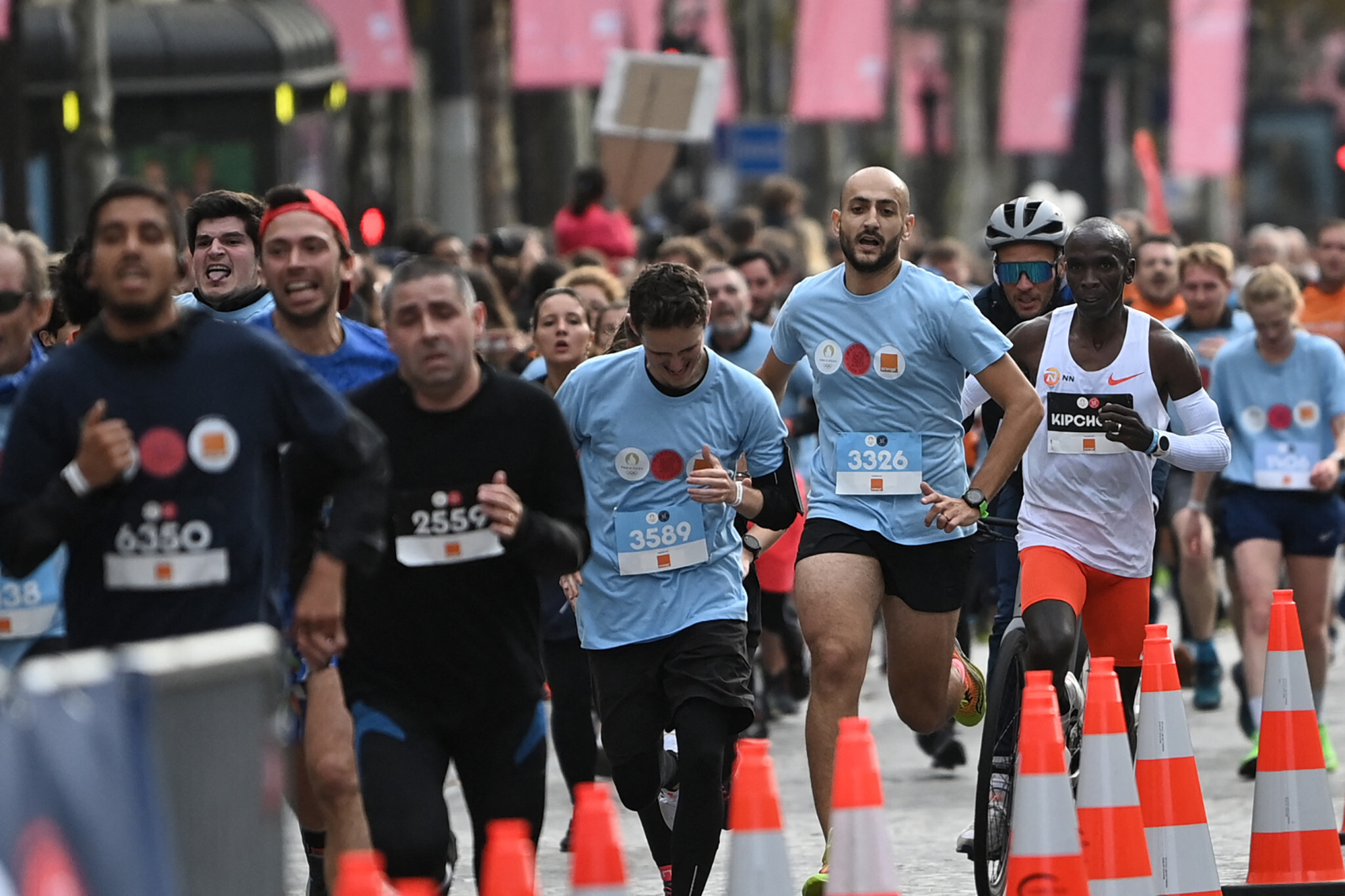
Orange was last month named the main sponsor of the mass-participation marathon.
Participants set off before Kipchoge in different groups depending on ability today, racing on a course across the Place de la Concorde and the Champs Elysées.
In excess of 1,000 runners finished before the marathon world record-holder and double Olympic champion, earning them places in the mass-participation event in three years’ time.
"This is the first time I am happy to have lost," said Kipchoge, whose marathon world record stands at 2 hours 1min 39sec.
"My defeat is a victory for several hundred people to whom I look forward to meeting in 2024 here in Paris."
The mass-participation race at Paris 2024 is scheduled to take place on the same day as the Olympic marathon.
It will be the first time a public marathon will be held alongside the Olympic event.
The races will also be held on the same course.
A separate 10km race will also be staged on the day, with Paris 2024 highlighting their desire to actively involve the public in the Games.
Organisers say there will be several other opportunities for runners to secure bibs of the Marathon Pour Tous - Marathon For All.
A running app has been launched by Club Paris 2024, which organisers say will provide training advice and running inspiration in the build-up to the Games.
The app will reportedly offer personalised training programmes and challenges adapted to all levels and objectives.
Places in the mass-event marathon will also be won on the app.
(11/02/2021) ⚡AMPby Michael Pavitt
Paris 2024 Olympic Games
For this historic event, the City of Light is thinking big! Visitors will be able to watch events at top sporting venues in Paris and the Paris region, as well as at emblematic monuments in the capital visited by several millions of tourists each year. The promise of exceptional moments to experience in an exceptional setting! A great way to...
more...The best Ways to Prevent Shin Splints for runners
Shin splints are one of the most common running injuries. The pain you feel with shin splints is usually on the front side of the shin (anterior shin splints) or on the back inside of the shin (posterior medial shin splints).
Shin splints can be caused by any number of factors, including:
High impact activities: Running on hard or inclined surfaces can put added strain on your front leg muscles.
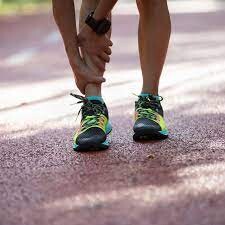
Incorrect technique: You may also overpronate (ankles roll in) or supinate (feet roll toward the outside edge) when you run, causing your front leg muscles to work harder to keep your feet stabilized. This biomechanical issue may be made worse by a shoe with poor support.
Overuse: Shin splints are very common for beginner runners because they may do too much too soon when trying to build up their mileage.
There are a number of steps you can take to speed recovery. First, to reduce the pain, use an ice pack on your lower legs after you run. Keep an ice pack on the leg for 20 minutes several times throughout the day. Wrap the ice in a towel so that it does not directly touch the skin.1
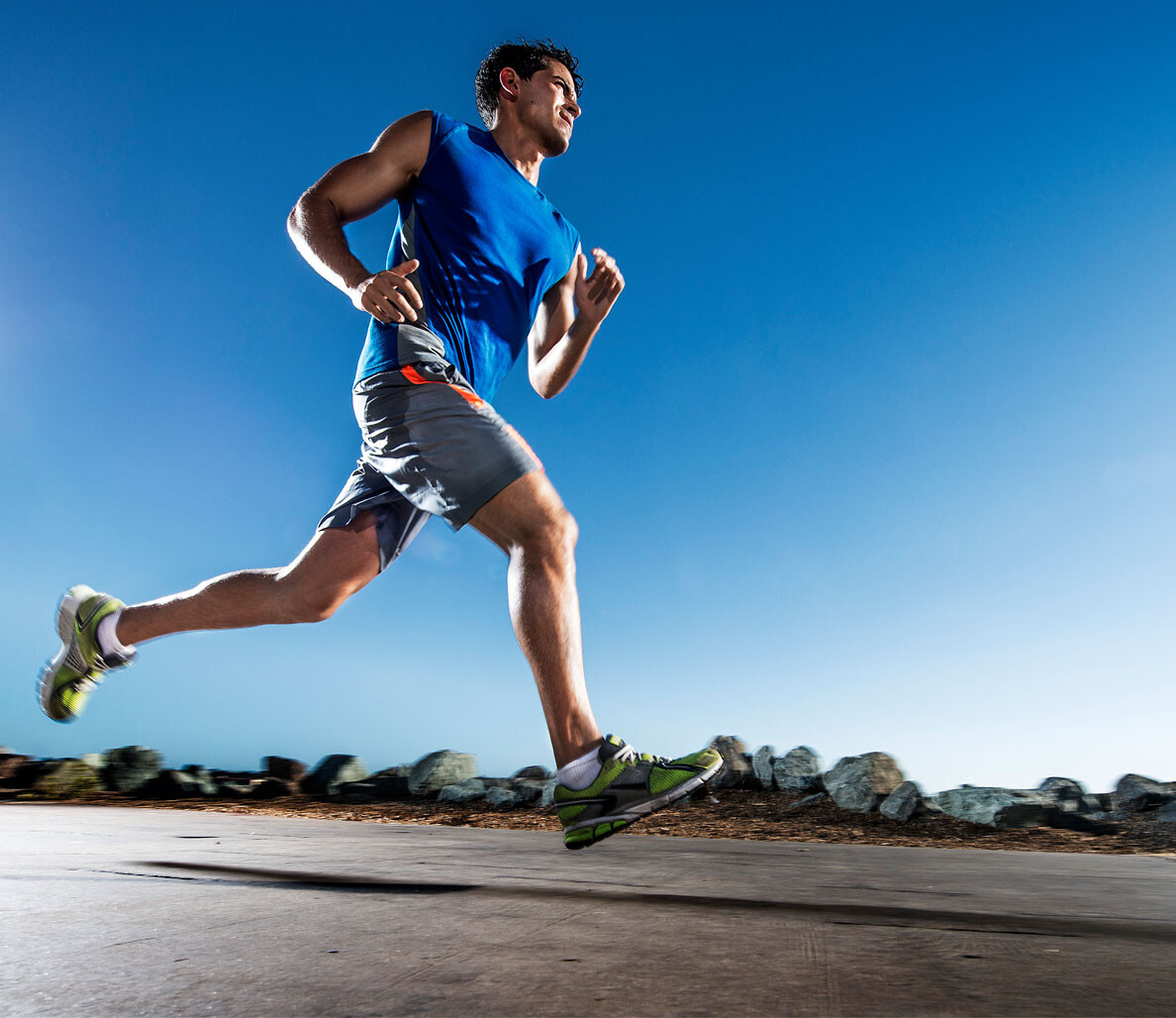
Experts also suggest that you use compression gear (such as compression bandages or compression socks) to reduce swelling and consider taking an anti-inflammatory medication, such as aspirin or ibuprofen. Speak to your healthcare provider about taking medications to relieve pain or reduce swelling.1
Once you've successfully treated your shin splints, it's important to prevent them from reoccurring. Here are eight ways to prevent or reduce your risk for shin splints. If your pain persists, see your doctor about the possibility of a stress fracture.
1.-Gradually Increase Mileage
Shin splints are considered an overuse injury because they usually occur when runners (especially for those who are new to running) increase their mileage or intensity too quickly and do not allow for recovery time.
The important thing is not to run through the pain. Listen to your body and cut back on running when you begin to feel pain. Medical experts suggest that you should not return to running until you have been pain-free for two weeks.
2.- Run on Softer Surfaces
Running on hard surfaces, such as concrete, can put a lot of extra stress on your muscles, joints, and bones. It's important to vary your running surfaces. Try running on grass or dirt trails, especially if you're planning a longer run. You may want to opt for a treadmill run once or twice a week. Running on a treadmill is easier on your body than running on the roads or sidewalks.
3.- Take Time to Rest
When you're first starting out, try to avoid running two days in a row. A rest day will limit the pounding on your muscles, joints, and bones and give your body a chance to recover. Even if you're an experienced runner, taking at least one or two days off from running each week reduces your risk of shin splints and other overuse injuries.
4.- Cross Train
Use some of your days off from running for rest. But for others, consider cross-training with a sport that puts less pressure on your shins. This could be low-impact aerobic exercises, such as swimming, biking, cross country skiing, or aqua jogging.
5.- Get the Right Running Shoes
Wearing the wrong shoes can also lead to shin splints, so check your shoes to see if you might need more stability or cushion.1 Get advice from an expert at a running specialty store to make sure you're wearing the right running shoes. Running experts can examine your gait, the structure of your feet, and the wear on your current running shoes to find the best fit.
Also, replace your running shoes every 350 to 500 miles. Running in shoes that have lost their cushioning is one of the most common causes of shin splints. You can also try inserting over-the-counter shoe inserts so that your calves don't have to stretch as far.3
6.- Try Strength Training
If you experience shin pain when running, it may be because of weak anterior tibialis muscles, which run along the front side of your lower leg. This muscle is responsible for flexing the foot at the ankle (drawing the toes toward your knee). You may start feeling pain in this area if you're new to running or you increase your distance too quickly.
Doing simple exercises such as heel raises or toe raises can help strengthen your calf and shin muscles, which can help prevent shin pain. Doing these exercises post-run will also give you a nice stretch.
(11/02/2021) ⚡AMPby John Honerkamp
St. Jude Heroes reach $100 million milestone for St. Jude Memphis Marathon
What does it take to keep St. Jude Children’s Research Hospital® running? If you’re a St. Jude Hero, that means running for a purpose for events like the St. Jude Memphis Marathon® Weekend presented by Juice Plus+®.
For years, tens of thousands of steadfast supporters pushed through every step, mile and intense hour of training and recently achieved an incredible cumulative milestone: $100 million raised in two decades through this event. Their support helps fuel the St. Jude $11.5 billion, six-year strategic plan, which includes tripling its global investment to impact the more than 400,000 kids with cancer around the world each year.
“It’s inspiring to see the difference every one of us can make for the children of today and future generations when we commit to a purpose and work together for good by raising $100 million in 20 years – one dollar, one runner at a time,” said Richard C. Shadyac Jr., President and CEO of ALSAC, the fundraising and awareness organization for St. Jude Children’s Research Hospital. “Childhood cancer is a multi-trillion-dollar, multi-year problem and fundraising through annual events like the St. Jude Memphis Marathon Weekend is crucial for St. Jude to continue its groundbreaking research and treatment and execute on its $11.5 billion expansion and growth plans.”
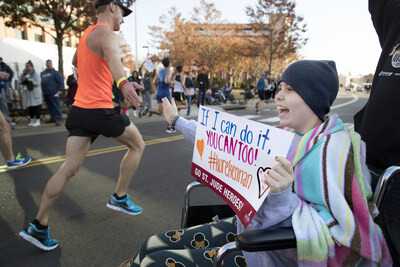
St. Jude Memphis Marathon Weekend is the largest single-day fundraising event for St. Jude. The all-virtual event raised $7.5 million in 2020. The goal for the event’s historic 20th anniversary on Saturday, Dec. 4, 2021 was set at $9 million, but St. Jude Heroes and generous donors have rallied in true hero fashion and are already on pace to surpass that goal and reach $12 million, nearly $5 million growth year over year. Because of fundraising events like this, families never receive a bill from St. Jude for treatment, travel, housing or food – because all a family should worry about is helping their child live.
St. Jude Heroes have access to online training programs and race-day extras – from a singlet to hotel accommodations, depending on the fundraising commitment – and possibly entry into the most exclusive races in the world. Runners can also earn additional prizes based on how much is raised for St. Jude kids.

Since its inception in 2002 with fewer than 3,000 participants, St. Jude Memphis Marathon Weekend has become a marquee event that not only brings families, friends, neighborhood associations, and businesses together for a purpose, but also creates global awareness around the important work that happens every day at St. Jude Children’s Research Hospital. The event has attracted up to 26,500 participants annually from Memphis and around the world. This growth is due to the continued support of local, national and worldwide supporters who share a passion for the St. Jude mission: Finding cures. Saving children.®
To ensure a safe environment for all, participants can view St. Jude Memphis Marathon Weekend health and safety protocols here. Event organizers are following the guidance of the Centers for Disease Control and Prevention and local health officials.
Achieving the $100 million milestone is cause for celebration. St. Jude Heroes and all supporters are encouraged to use the hashtags #StJudeSpirit and #StJudeHeroes on social media and post images and videos related to their St. Jude Memphis Marathon Weekend participation over the past two decades. To learn more, visit stjude.org/marathonspirit. To volunteer on race weekend, visit stjude.org/marathonvolunteer.
St. Jude Memphis Marathon Weekend marks its 20th anniversary, and the stories of five runners who have participated every year since the start are featured on St. Jude Inspire.
Raj Betapudi
As a young boy in Akavidu, India, Raj Betapudi would often run with his dad around the high school track. He moved to the U.S. in the 1990s, and when he heard about the St. Jude marathon from a colleague, he felt compelled to try, realizing that through the process of training, he was weaving his past with his present. Building up for the half marathon meant overcoming what Raj calls “a mental block” of self-doubt. His breakthrough came on a treadmill at work when he ran farther than he ever had. He thought of that little boy in India running with his dad. Back then, he’d had no worries, only dreams. Raj ran his first St. Jude half marathon in 2002 and has accomplished many more since. He’s proud to have been part of the St. Jude marathon since the very beginning. “My dad had three kids. A girl, boy, and a girl, and I have the same sequence of kids, and they run. I guess this is the joy of passing (traditions) on. I think it’s just a great joy to be outside and enjoy the nature, and also challenging your body to do more than what you thought you were capable of doing and pushing the limits.”
Miriam Dillard
On a December night in 2002, Miriam Dillard downed some burritos and margaritas with a friend at a Tex-Mex restaurant in Memphis. The next morning on a lark and without training, the 21-year-old biology major at Rhodes College ran her first half marathon during St. Jude Memphis Marathon Weekend. And one year later Miriam Dillard – now Miriam Dillard Stroud – became a researcher at St. Jude and embarked on the rest of her life. “Seeing it go from a tiny number of people to a huge number of people, I think it just gets more and more special,” said Miriam, who runs every year. Miriam, who as a Platinum St. Jude Hero for Team Rhodes and commits to raising at least $5,000 for St. Jude each year, has kept all her St. Jude medals, “and I don’t really hold onto race medals.” She remembers that first race in 2002 and how she strapped a portable CD player to her chest so she could listen to her mix CD as she ran. All the runners wore cotton. And no one had digital cameras yet. Her cotton shirt from 2002 “has holes in it, and I’ve had to have it sewn up multiple times because I’m like, ‘I’m not letting go of that.’”
Rich VanMeter
Rich VanMeter’s muscles were aching, tired from the exertion of his 2007 St. Jude marathon, but when the St. Jude Hero looked over and saw his girlfriend Nicole Tice and her son William right where they said they would be along the route, talk about a runner’s high. Rich and Nicole had been dating several months and Nicole wasn’t a morning person, but she and William came out anyway, holding a sign William had scrawled in his little kid handwriting that said, “Go Rich!” The thought occurred to Rich: He’d never been happier. In 2002, Rich had been running with a group of guys where he worked at the Navy base in Millington, Tennessee, who wanted to be in peak shape. One of them brought up the idea of running in the new St. Jude marathon event. How could he have known it would set him on a path to the rest of his life? Rich’s running in the St. Jude marathon led to volunteering at St. Jude, which led to meeting fellow volunteer Nicole. “If I hadn’t started running the marathon that first year, then I wouldn’t have gotten into volunteering for it. …You know it all trickles down. I met Nicole, got engaged, got married, got a son, Adam – two sons, counting William, too. It’s touched every part of my life.” Rich proposed to Nicole in the lobby of Tri Delta House in 2009 on the St. Jude campus, the place they’d met as volunteers.
Keri Nunley
Keri Nunley wanted to do the St. Jude marathon for her dad. “A friend of mine was going to do it, and she said, ‘Hey, do it with me.’ And I was like, ‘Oh Lordy, I can’t run, girl.’ I was like, ‘I’ll walk.’ So I really trained. I trained and trained and trained.” It started as a way for her to wrest meaning from an incomprehensible loss. Her father died in 2001 from colon cancer. She later learned he’d been a devoted giver to St. Jude for years and directed his memorial funds there. She felt the impressions of his handwriting on the checkbook ledger as though they were inscriptions on her heart: Page after page said St. Jude. “We just never knew he donated like he did, and this is just my way to keep his donation going.” Alone as the sole member of Team Hertwig that first year — “Lord, I was so slow. I was out there all by myself.” She walked 13.1 miles, her feet aching but her spirits high. It took 3 hours and 40 minutes, but she did it. Keri walked alone that year but it was the only time she’d ever have to. After that, her family joined her, flying in from as far away as Pennsylvania, Texas, Florida and California to gather in Memphis for a family reunion of sorts, in running shoes. Today Team Hertwig boasts 35 members and raises about $30,000 each year.
Donnie Badlock
What do you say about the energetic jokester Donnie Baldock, who, when the pandemic caused the St. Jude Memphis Marathon to go virtual last year, made sure a 14-year-old St. Jude leukemia survivor was able to achieve his dream of running his first half marathon? Donnie secured the permit for the young man to run with a police escort through his hometown and joined him to set the pace. Who when St. Jude needed platelets, not only rolled up his sleeve, but brought 18 healthy, fit runner friends to do the same? Who finished his half marathon, only to run to volunteer at the full marathon finish line? His wife is a 25-year cancer survivor. He’s kept his bib from the very first race. When he runs, he pins a photo of a St. Jude patient to his shirt. When he talks about St. Jude, he chokes up. Who runs as part of the St. Jude Breakaway Running for a Cause team that trains anywhere from 150-300 runners per year to participate in the marathon weekend for St. Jude? The team has raised well over $1 million. His wife is a 25-year cancer survivor. He’s kept his bib from the very first race. When he runs, he pins a photo of a St. Jude patient to his shirt. When he talks about St. Jude, he chokes up.
St. Jude Children’s Research Hospital is leading the way the world understands, treats and defeats childhood cancer and other life-threatening diseases. Its purpose is clear: Finding cures. Saving children.® It is the only National Cancer Institute-designated Comprehensive Cancer Center devoted solely to children. Treatments invented at St. Jude have helped push the overall childhood cancer survival rate from 20% to more than 80% since the hospital opened more than 50 years ago. St. Jude won’t stop until no child dies from cancer. St. Jude freely shares the discoveries it makes, and every child saved at St. Jude means doctors and scientists worldwide can use that knowledge to save thousands more children. Families never receive a bill from St. Jude for treatment, travel, housing or food – because all a family should worry about is helping their child live. Visit St. Jude Inspire to discover powerful St. Jude stories of hope, strength, love and kindness. Join the St. Jude mission by visiting stjude.org, liking St. Jude on Facebook, following St. Jude on Twitter, Instagram and TikTok, and subscribing to its YouTube channel.
(11/02/2021) ⚡AMPby Running USA
St Jude Memphis Marathon
The St. Jude Memphis Marathon Weekend is more than just a race. It's an action-packed weekend of fun, food and entertainment! Start and finish lines two blocks apart and near a dozen Downtown hotels, lots of restaurants, and Beale Street, the Memphis entertainment district. Dynamic finish in AAA baseball stadium, with use of locker rooms and shower facilities. Wave start,...
more...First Finishers from Inaugural 1970 Race will be honored at 50th Running of the TCS New York City Marathon this weekend
To mark the 50th running of the TCS New York City Marathon, several of the First Finishers from the inaugural 1970 race will be honored at the TCS New York City Marathon Opening Ceremony Presented by United Airlines on Friday, November 5, and at the Marathon finish line on Sunday, November 7.
The first New York City Marathon, organized by New York Road Runners, took place on September 13, 1970, in Central Park, with an entry fee of $1 and a budget of $1,000. Of the 127 registered runners, there were 55 finishers. The race ultimately expanded to all five boroughs in 1976. To date, the event has seen more than 1.2 million finishers.
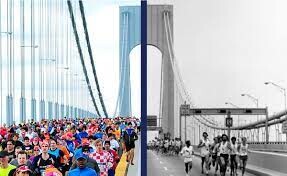
“The TCS New York City Marathon has influenced and inspired so many people around the world for more than five decades, and to think it all started with 127 runners in Central Park is incredible,” said Ted Metellus, Vice President of Events for NYRR and Race Director of the TCS New York City Marathon. “We are honored to bring back some of the First Finishers from the 1970 race to have them with us on marathon day this year, and to honor them for being the first to take part in what has grown to become the world’s premier marathon.”
Former FDNY firefighter Gary Muhrcke was the first New York City Marathon champion, coming off the night shift at work to win the race. He still runs weekly in Central Park to this day, and his wife makes the laurels that the champions wear after their victories.
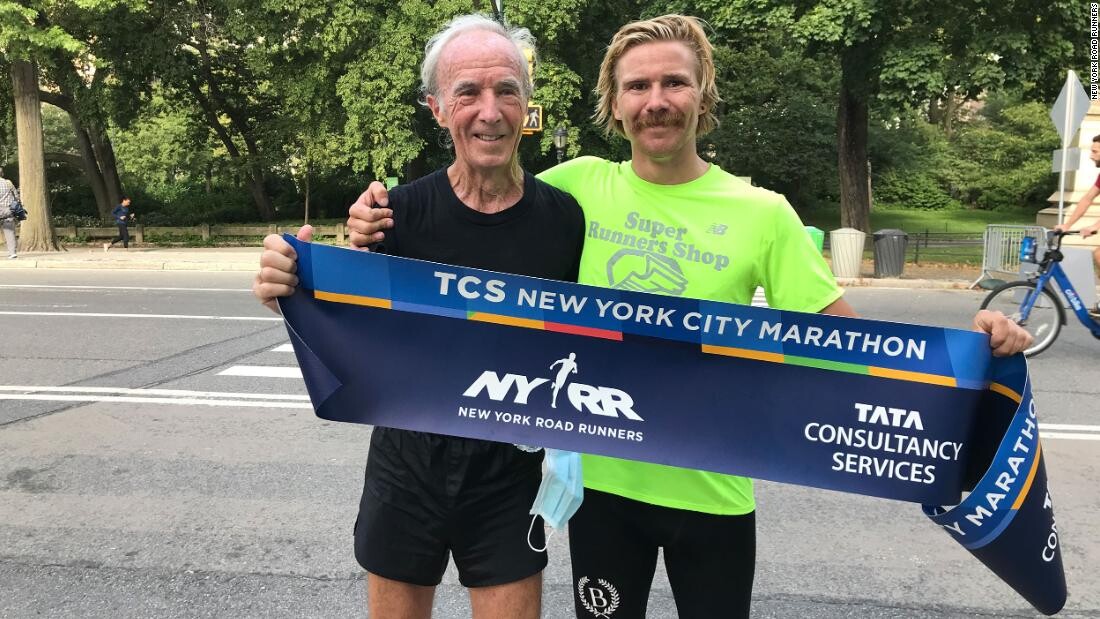
Larry Trachtenberg will be the sole runner from 1970 who will run in the 50th marathon. He was born and raised in Queens, and ran at Long Island City High School and regularly in Van Cortlandt Park, where he trained for the first marathon.
Joining Muhrcke and Trachtenberg in New York will be a number of other First Finishers from 1970, including:
· Arturo Montero – He came to the U.S. from Chile in 1960. He has run more than 100 marathons, 31 of them New York City Marathons (2016 being the last one). The 1970 race was his first marathon.
· Bill Newkirk – Born in the Bronx, he regularly ran around Central Park and met Fred Lebow during his runs. He has now participated in more than 20 marathons, including more than 10 New York City Marathons. He also helped NYRR by measuring courses with his friend, Ted Corbitt.
· Ed Ayres – After growing up in New Jersey, he ran the 1970 race with his brother, Glen; both of them finished in the top 10. He went on to start Running Times magazine.
· Gerald Miller – The oldest living First Finisher at 92 years old is originally from Queens and moved to the Upper West Side of Manhattan after he got married. He heard about the first marathon at the YMCA. He has run more than 20 New York City Marathons and got his whole family into running.
· Jim Isenberg – He grew up in Boston and has run in more than 100 marathons, including the New York City Marathon four times. He ran for Princeton University and is friends with Larry Trachtenberg, who told him about the first marathon. He was a professor of physics and mathematics at the University of Oregon.
· Joe Martino – He took his first trip to New York as a teenager with Rick Sherlund, sleeping on a mattress the evening before the marathon at the local YMCA. He also ran the marathon in 1978 and became friends with two-time winner Tom Fleming.
· Moses Mayfield – He was the fastest African American marathoner in history at the time with a time of 2:24:29; he led the 1970 marathon for 24 miles of the race before being passed by Muhrcke.
· Ralph Garfield – Originally, from England, he came to the U.S. in 1961 and would regularly run in Central Park on the Reservoir. He has run 14 marathons (eight New York City Marathons) and still jogs/walks to this day.
· Rick Sherlund – At 16 years old, one of the youngest runners of the first marathon, he traveled to NYC with his friend, Joe Martino, to participate in the marathon. He ran the first 20 miles and then had a cream soda before cramping and having to walk the last six miles.
· Steve Grotsky – Originally from the Bronx, he was a fixture in the New York running scene; he went on to run for Princeton University and completed 50 marathons.
· Tom Hollander – He ran the marathon after graduating from high school in Connecticut, and ran again in 1977. In 1972, he won the Cherry Tree Marathon.
· Vince Chiappetta – Along with Fred Lebow, he co-directed the first New York City Marathon and is a co-founder of NYRR. He has run in more than 100 marathons.
· Nina Kuscsik – She changed the sport of running by breaking through the “Boys’ Club” barrier and changing the rules so they included women. She opened doors for future generations. While she did not finish the race, she is the only woman among the 127 entrants who ran in the 1970 New York City Marathon.
About New York Road Runners (NYRR)
NYRR’s mission is to help and inspire people through running. Since 1958, New York Road Runners has grown from a local running club to the world’s premier community running organization. NYRR’s commitment to New York City’s five boroughs features races, virtual races, community events, free youth running initiatives and school programs, the NYRR RUNCENTER featuring the New Balance Run Hub, and training resources that provide hundreds of thousands of people each year with the motivation, know-how, and opportunity to Run for Life. NYRR’s premier event is the TCS New York City Marathon. Held annually on the first Sunday in November, the race features a wide population of runners, from the world’s top professional athletes to a vast range of competitive, recreational, and charity runners. To learn more, visit www.nyrr.org.
(11/02/2021) ⚡AMPby Running USA
TCS New York City Marathon
The first New York City Marathon, organized in 1970 by Fred Lebow and Vince Chiappetta, was held entirely in Central Park. Of 127 entrants, only 55 men finished; the sole female entrant dropped out due to illness. Winners were given inexpensive wristwatches and recycled baseball and bowling trophies. The entry fee was $1 and the total event budget...
more...Canio Polosa breaks Canadian M90+ 5K record
Canio Polosa, a 93-year-old runner living in London, Ont., smashed his own 5K Canadian Masters record on Sunday by over one minute. Polosa ran 36:30 at the Halloween Haunting 5K, which was held at Springbank Park in London, Ont.
His previous personal best was 37:41. Polosa mentioned that he was honored to have so much support, as many runners recognized him at the race.
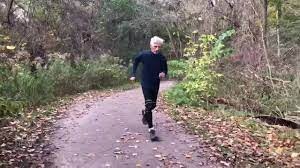
Polosa is a retired medicine professor at McGill University. He began to run during retirement after joining London’s Pacers Running Club, who he ran three marathons during the ’90s.
After his third marathon, Polosa took a break from running after losing the cartilage in his knees. Now at 93, Polosa is back running, wearing his knee brace and setting Canadian records after an Amazon advertisement recommendation from his wife Lynne Weaver. “They have become his best friends,” she says.
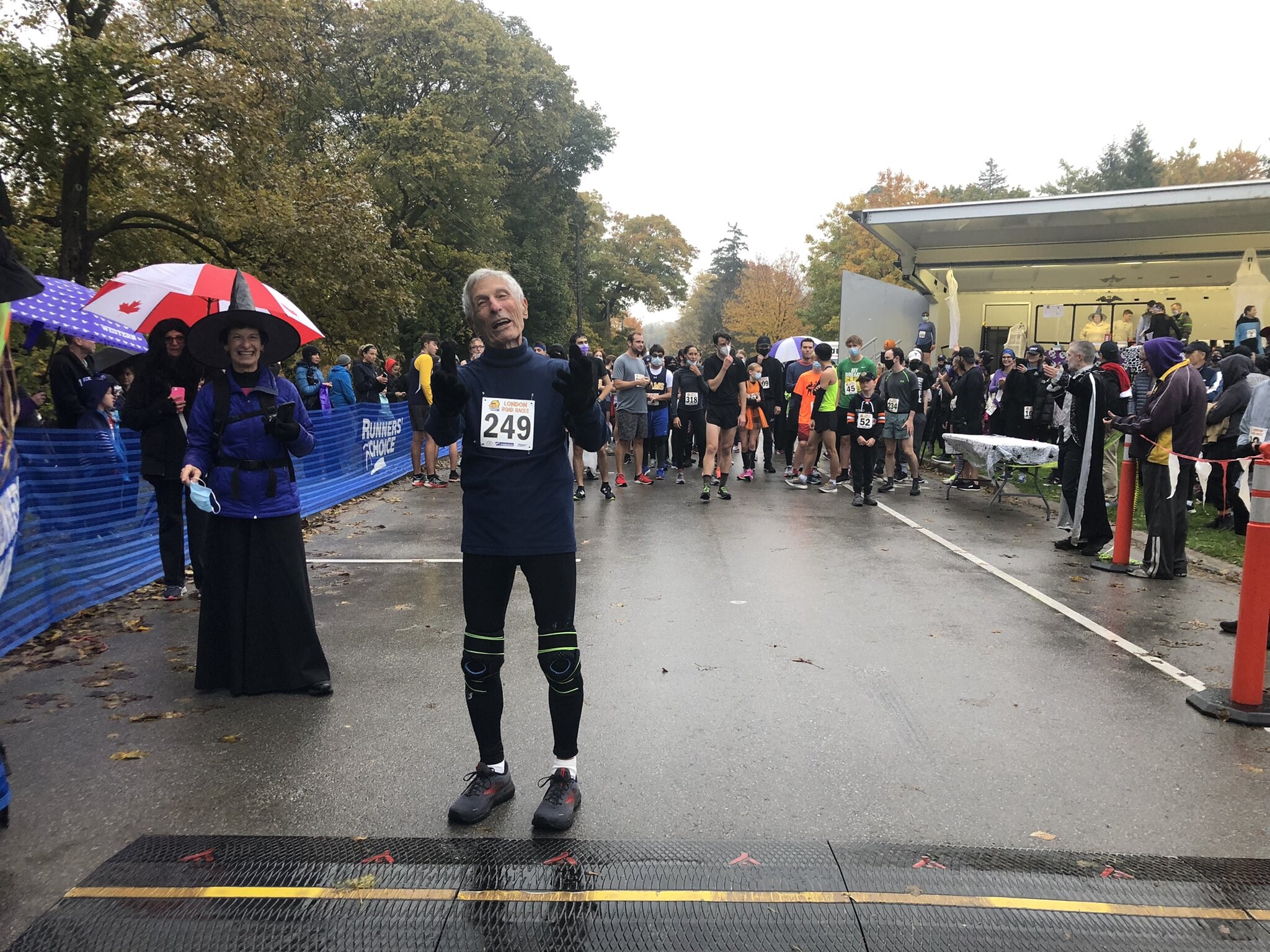
Polosa said in a video interview with CBC London that he doesn’t know why he likes running, but he enjoys running 5K to 10K every day to embrace nature. When questioned why most people his age aren’t running, Polosa said, “Most people are not running because they don’t think they can do it.”
Polosa also holds the M90+ Canadian masters’ mile record of 11:07, which he set in June of this year, but is eager to lower it after he said he started too fast during his last attempt.
(11/01/2021) ⚡AMPby Marley Dickinson
5K or 10K: Which Distance Should Beginners Run First?
If you're a new runner, should you start by running a 5K or a 10K, or both?
It's a great question and one that will depend on two things: first, your fitness level before you start training seriously for a race, and second, how many weeks you want to devote to serious training. Let's first start with the issue of fitness level.
5K vs. 10K: How Does Training for Each Differ?
Many beginning runners are in a routine where they run roughly three miles three days a week. That's good news if you want to run a 5K, as it's 3.1 miles. You know you're going to be able to run the 5K distance, and that should put your mind at ease.
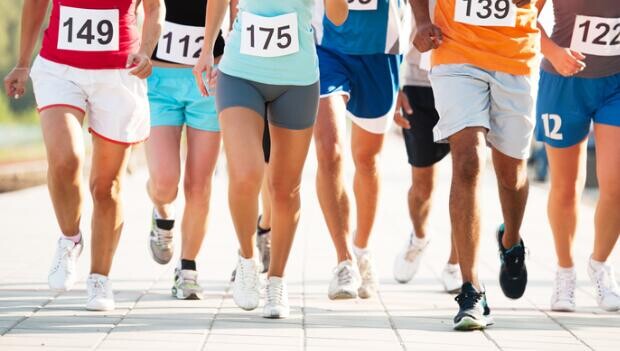
But it's one thing to finish a 5K, and it's another thing to race a 5K. To really race a 5K, you're going to have to do a weekly long run and another aerobic workout during the week, such as a fartlek run, threshold run or some aerobic repeats on the track.
And if you really want to see how fast you can run a 5K, you have to be honest about the fact that even though you'll feel well during the first half mile of the race, you'll soon be uncomfortable for the middle two miles of the race, then you'll have to suffer a bit the last half mile to run the race time you're capable of. That's the difference between running races for the fun, social experience, and running races to test your physical limits.
For 10K training, the runner who runs three miles, three days a week can't have the same confidence about being able to run the race distance of 6.2 miles since he or she never runs that far during their runs. For this reason the training for a 10K beginner needs to be a few weeks longer to prepare for the race.
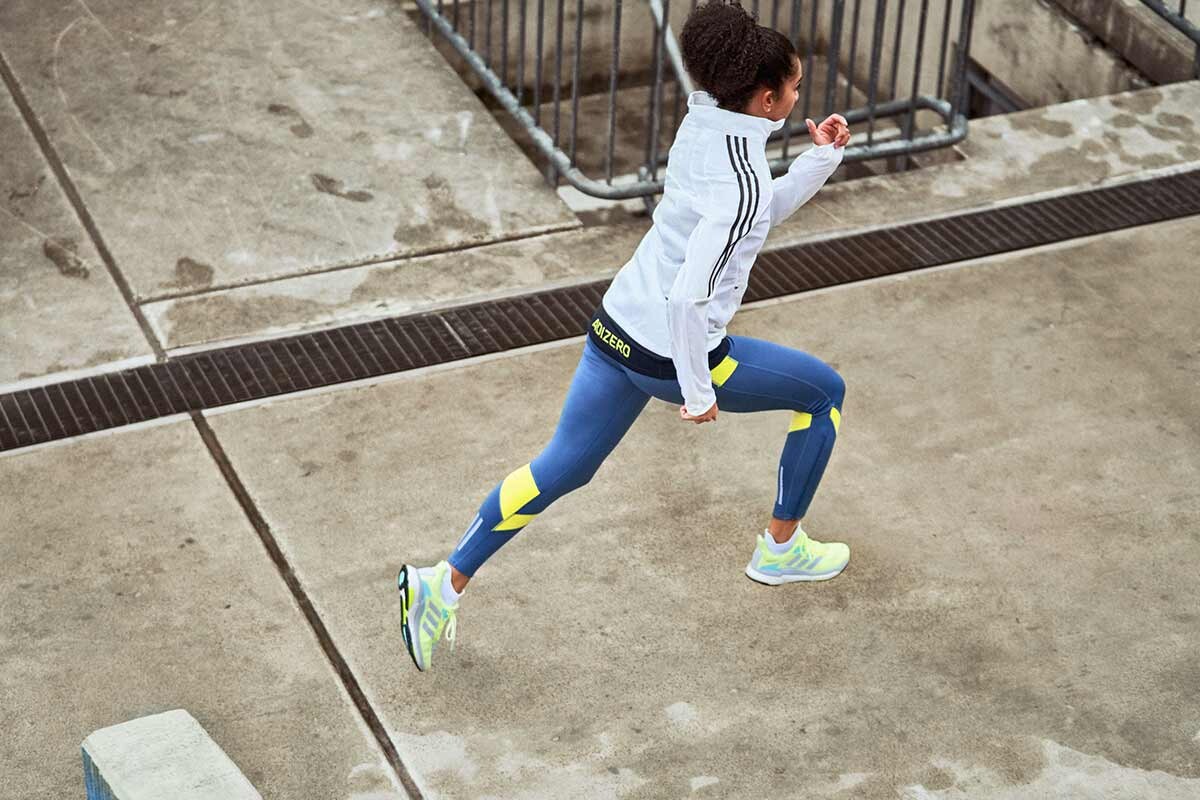
Why Beginners Should Start With a 5K
So which one should you train for first: a 5K or a 10K? My suggestion is a 5K, and there are several reasons.
When you learn how to challenge yourself during a 5K, you'll have the basic skills of running with discomfort that will help you complete longer distances. A well-run 5K is a grind from start to finish, and the sooner you learn how to run with the discomfort associated the 5K, the sooner you'll set PRs at the longer distances. Again, this isn't to say that you shouldn't run some 5Ks for fun—running with friends or running with a stroller or a dog. But the flip side is that if you've been running for a while and you're ready to see how fast you can run, then you need to learn how to push yourself.
Training for the 5K is pretty straight forward: a weekly long run and a weekly workout, and this simplicity suits beginning runners. Do those two things, then get in another day or two of running, and you can run a PR.
Build your long run up to 5 or 6 miles. Your main workout of the week should be a threshold or fartlek run to develop the aerobic metabolism, which is important because the 5K is 95 percent aerobic.
Another reason beginning runners should start with the 5K is you can still do other cross-training activities while training for a 5K. You won't be running that much, so the yoga, biking, swimming, etc. will still fit well within your training.
When to Move Up in Distance to the 10K
Once you've raced a couple of solid 5Ks, then you're ready to move to the 10K—even if you're still a beginner. The main reason for a beginner to run a 10K is the sense of accomplishment you get from racing 6.2 miles. It's a different sensation than running a 5K, and if you run it the smart way—even splits through 5 miles and then a negative split for the last 1.2 miles—you can feel great about yourself when you have your post-race snack.
ou will need to bump up the volume of the long-run day and the workout day for 10K training. Your long run should be at least 8 miles, and if you can get in 9 or 10, that's ideal. The workout should be a bit longer than 5K workouts as well, with the total mileage in the 6-mile range.
But the easy days can still stay easy, and don't have to be longer than the easy runs you did in your 5K training. If you can run a bit farther on your easy days, great, but that's not the key to racing a good 10K. Get a 10K-appropriate long run in, get a 10K-appropriate workout in, and you'll be ready to go.
It's important to note that some 10K training plans would have you working out three times a week. For the beginner, there is no need to add a third workout each week. But, when you start to morph into an intermediate runner, it may make sense to transition to two workouts a week and a weekly long run (so a total of three hard days a week).
(11/01/2021) ⚡AMPby Jay Johnson
Alex Gold and Caitlin Keen winners of 2021 Flying Pig Marathon
Alex Gold and Caitlin Keen have won Cincinnati’s Flying Pig Marathon.
Gold, 26, was the first to cross the finish line with a time of 2:26:29.
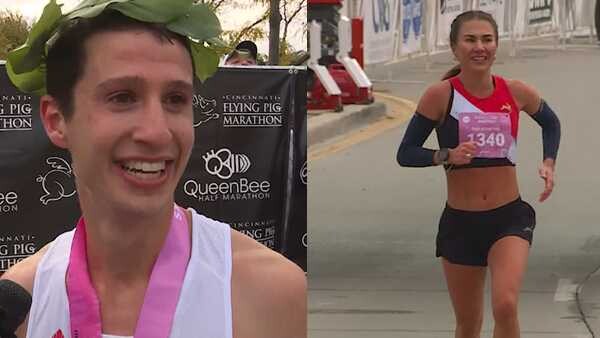
A Chicago native, Gold moved to Cincinnati several years ago, he said, and works for General Electric.
“I’ll definitely have a beer or two and maybe some Skyline Chili,” Gold said on how he plans to celebrate his big win.
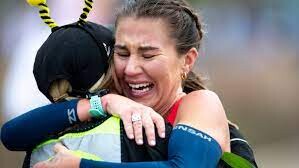
Gold was followed by J.T. MacKay (2:28:31) and Steve Matthews (2:29:30).
Keen, 29, was the first woman to cross the finish line with a time of 2:43:45. Keen, who grew up in Hyde Park, is now a two-time winner, also finishing first in 2018 with a time of 2:46:39.
"It's been a really long couple years I think I can speak for everyone when I say the last two years have definitely been a storm I struggled a lot with running," she said. "This is my first race since the Olympic trials and I wanted it so bad I just wanted to be back on the course and have fun and that's what I did and I loved every second of it. "
Keen was followed by Amy Manning (3:00:24) and Allison Pitt (3:01:18).
Samuel Montclair and Daniella Townsend won the Flying Pig Half Marathon.
Montclair, 30, of Raleigh, North Carolina, finished with a time of 1:09:53, beating the old record of 1:10:34 held by Zachary Ripley.
He was followed by Eric Gruenbacher (1:13:15) and Greg Lemmon (1:16:42).
“The hills of Cincinnati are pretty tough, man, I just wanted to put a good effort in,” Montclair told us after the race.
Townsend, of Cincinnati, was the first woman to cross the finish line, finishing 13.1 miles around 1:21:02. She was followed by Christine Frederick (1:21:40) and Katarina Smiljanec (1:25:41).
After a year off due to the COVID-19 pandemic, the Flying Pig Marathon returned to Cincinnati for the 23rd annual race. The Pig has historically been run in the late spring, but last year’s run was hosted virtually and this year’s race was postponed to the fall.
The total number of weekend participants this year was 15,833, including 1,979 for the full marathon, 5,420 for the Paycor Half Marathon, 1,277 in the Queen Bee Half Marathon, 2,190 for the Toyota 10K, 2,200 in the Tri State Running Company 5K and 1,155 for the Queen Bee Medpace 4 Miler. Other totals include 252 (63 teams) in the City Dash 4-Person Relay, 221 in the Flying Fur and 1,139 for Friday’s Fifty West Mile.
ABOUT THE FLYING PIG
Many may wonder, "Why 'Flying Pig'?" Officials said the name stems from the 1800s when Cincinnati was called “Porkopolis” because of all the stockyards and the meatpacking industry. Officials said many often ran pigs through the downtown streets. So when the founders of the marathon were looking for a name for the event back in 1997, “Flying Pig” brought smiles to everyone's face, so that seemed most appropriate.
(11/01/2021) ⚡AMPCincinnati Flying Pig Marathon
This beloved race found it's name from Cincinnati's pork history which dates back to the early 1800's. Cincinnati is also known as "Porkopolis."Our weekend line up of events are designed to welcome athletes of all abilities from the Diaper Dash to the full Marathon and everything in-between, we truly have something for everyone. We even added a dog race several...
more...Hosoya, Takaku and Uekado Will Lead Fukuoka International Marathon's Final Elite Field
With just over a month to go until its final edition, on Nov. 1 the organizers of the Fukuoka International Marathon held a press conference to announce its last elite field. For the second year in a row it's domestic-only, headlined by Kyohei Hosoya (Kurosaki Harima), 2:06:35 at the final Lake Biwa Marathon this past spring, Ryu Takaku (Yakult), 2:06:45 in Tokyo last year, and Daisuke Uekado (Otsuka Seiyaku), 2:06:54 in Tokyo just behind Takaku.
Out of a total field of 124, along with the 3 sub-2:07 guys there are 11 sub-2:08, 18 sub-2:09, 25 sub-2:10 and many more at the sub-2:11 and sub-2:12 levels. It's an even bigger front end than was on the entry list at the record-breaking final Lake Biwa Marathon earlier this year, and for a domestic field it's one worthy of sending off Fukuoka's 75-year history. Last year's winner Yuya Yoshida (GMO), who was scheduled to run October's Tokyo Marathon before it was postponed until March, is absent.
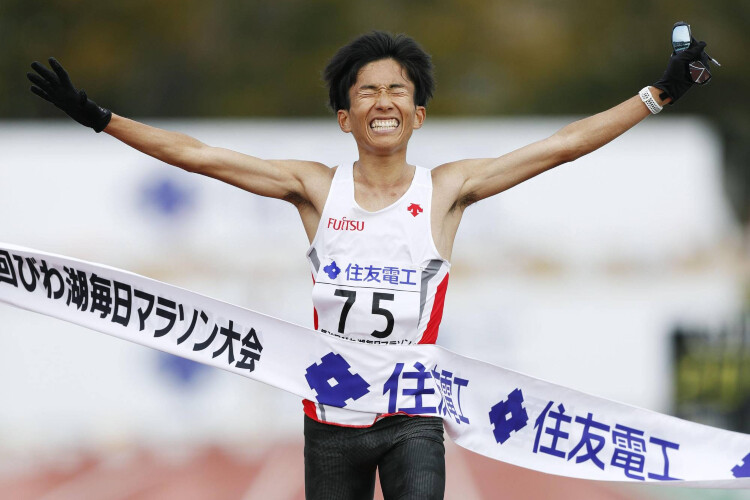
With Japan still holding tight to its border closures the international component of the field is covered by Japan-based internationals Michael Githae (Suzuki), 2:08:17 in Fukuoka last year, Mongolian NR holder Ser-Od Bat-Ochir (Mie T&F Assoc.) past Marugame Half winner Paul Kuira (JR Higashi Nihon), James Gitahi Rungaru (Chuo Hatsujo), Daniel Muiva Kitonyi (Track Tokyo), and the debuting Nicholas Kosimbei (YKK).
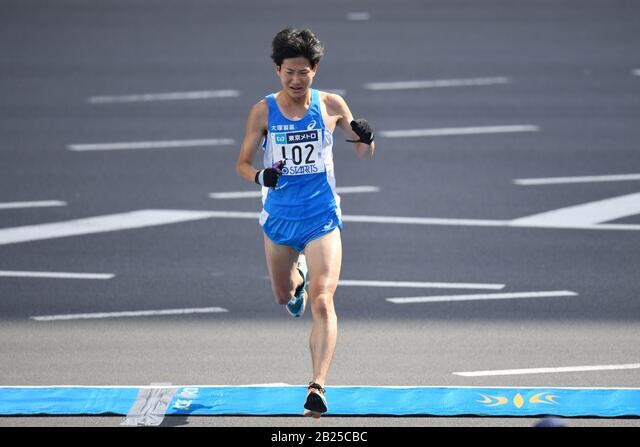
complete field listing
Kyohei Hosoya (Kurosaki Hariima) - 2:06:35 (Lake Biwa 2021)
Ryu Takaku (Yakult) - 2:06:45 (Tokyo 2020)
Daisuke Uekado (Otsuka Seiyaku) - 2:06:54 (Tokyo 2020)
Toshiki Sadakata (Mitsubishi Juko) - 2:07:05 (Tokyo 2020)
Shuho Dairokuno (Asahi Kasei) - 2:07:12 (Lake Biwa 2021)
Shin Kimura (Honda) - 2:07:20 (Tokyo 2020)
Yuki Kawauchi (ANDS) - 2:07:27 (Lake Biwa 2021)
Shohei Otsuka (Kyudenko) - 2:07:38 (Fukuoka Int'l 2020)
Masaru Aoki (Kanebo) - 2:07:40 (Lake Biwa 2021)
Yuta Shitara (Honda) - 2:07:45 (Tokyo 2020)
Atsumi Ashiwa (Honda) - 2:07:54 (Lake Biwa 2021)
Natsuki Terada (JR Higashi Nihon) - 2:08:03 (Fukuoka Int'l 2020)
Kento Otsu (Toyota Kyushu) - 2:08:15 (Lake Biwa 2021)
Michael Githae (Kenya/Suzuki) - 2:08:17 (Fukuoka Int'l 2020)
Junichi Tsubouchi (Kurosaki Harima) - 2:08:35 (Lake Biwa 2021)
Yuji Iwata (Mitsubishi Juko) - 2:08:45 (Tokyo 2020)
Kazuma Kubo (Nishitetsu) - 2:08:53 (Lake Biwa 2021)
Kenta Murayama (Asahi Kasei) - 2:08:56 (Berlin 2019)
Chihiro Miyawaki (Toyota) - 2:09:04 (Tokyo 2020)
Kohei Futaoka (Chudenko) - 2:09:15 (Beppu-Oita 2019)
Shoma Yamamoto (NTT Nishi Nihon) - 2:09:18 (Lake Biwa 2020)
Ser-Od Bat-Ochir (Mongolia/Mie T&F Assoc.) - 2:09:26 (Lake Biwa 2021)
Yoshiki Takenouchi (NTT Nishi Nihon) - 2:09:31 (Fukuoka Int'l 2020)
Takahiro Nakamura (Kyocera Kagoshima) - 2:09:40 (Lake Biwa 2021)
Paul Kuira (Kenya/JR Higashi Nihon) - 2:09:57 (Fukuoka Int'l 2020)
Jo Fukuda (NN Running Team) - 2:10:32 (Beppu-Oita 2020)
Ryota Komori (NTN) - 2:10:33 (Lake Biwa 2021)
Yuki Nakamura (Sumitomo Denko) - 2:10:47 (Lake Biwa 2021)
Takuma Shibata (Komori Corp.) - 2:10:48 (Hofu 2020)
Koshiro Hirata (SG Holdings) - 2:10:50 (Lake Biwa 2021)
Shota Saito (JFE Steel) - 2:10:50 (Beppu-Oita 2020)
Asuka Tanaka (Runlife) - 2:11:07 (Fukuoka Int'l 2020)
Taiki Suzuki (Eldoreso) - 2:12:09 (Fukuoka Int'l 2019)
Keita Shitara (Hitachi Butsuryu) - 2:12:13 (Tokyo 2020)
James Gitahi Rungaru (Kenya/Chuo Hatsujo) - 2:12:54 (Hofu 2020)
Daniel Muiva Kitonyi (Kenya/Track Tokyo) - 2:14:41 (Nagano 2019)
Debut
Nicholas Mboroto Kosimbei (Kenya/YKK) - 1:00:21 (Lisbon Half 2019).
(11/01/2021) ⚡AMPby Brett Larner
Fukuoka Marathon
The Fukuoka International Open Marathon Championship is one of the longest running races in Japan, it is alsoan international men’s marathon race established in 1947. The course record is held by Tsegaye Kebede of Ethiopia, running 2:05:18 in 2009. Frank Shorter won first straight years from 1971 to 1974. Derek Clayton set the World Record here in 1967 running 2:09:37. ...
more...Last Minute Halloween Costumes For Trail Runners
Need something for your kiddo's trick-or-treating? Mandatory office Halloween soiree? First post-covid social engagement? Try one of these easy-to-assemble trail running Halloween costumes!
Basic Trail Bro: Don a Ciele hat, and rock some bright Goodr's with a confusingly non-technical button-up shirt and jorts if you're feeling spicy. BYOB - a super dank IPA (the hazier, the better) swaddled in a coozy you got in a race swag bag. You're probably from Boulder. Or Flagstaff. (Portland variation: add a rain jacket and a slightly better beer.) Make sure to track your trick-or-treat excursion on Strava and don't stop talking about your podcast.

The Courtney: Throw on a tee-shirt and your comfiest basketball shorts and BYO candy corn. Nachos optional.
The Ultra Ultra Runner: Grab your trekking poles, headlamp, gaiters, neck gaiter, waist-light, UPF hat with sunshade, taped-seam windbreaker, sunglasses, clear glasses, 12-liter vest, hip-belt, flasks, bladder, body glide, ramen noodles, gels, spare socks, spare shoes, space blanket, sunscreen, arm sleeves and wind pants. Though you may be dressed like you're about to run the Marathon Des Sables, you could also just be out for a casual jog. You're a human drop-bag: ready for anything.
The Crewmate: Same as above, but carry everything around in your arms the entire night and try to hand everybody you see quesadillas and Skratch.
The Emelie: Grab your S/O and dress entirely in S/Lab, or skimo suits with a babybjorn. Still be faster than everyone.
The Rookie Trail Racer: Grab some long shorts, a sleeveless Nike shirt, and blast the tunes in your Beats By Dre headphones (around your neck, so everyone can hear). Forget the hydration pack, just bring a good ol' Gatorade bottle and be sure to ask everyone "How many miles is 25k????".
The Harvey: Just circle your block 354.2 times while trick-or-treating
Sexy Minimalist Trail Runner: Just split shorts and a handheld. That's it.
The Influencer: This costume is #Sponsored. Flip up the brim of your colorful hat, and snap a pic with your favorite beet-based energy bar or isolated cricket protein, preferably while gazing out at the ocean, or from a summit. Keep your phone and significant other at the ready for any potential photo ops. Bonus points if you have a cute dog who knows a TikTok dance. Make sure all product logos are visible at all times.
Sexy IPOS: Nothing but a gravel bike and KT tape.
The Media Mogul: POV: Your YouTube channel is just about to go viral. Grab your go-pro and lace up your trail runners, because you're about to get a lot of B-roll. Wear a Sony TX90000 BD around your neck, and be sure to periodically change lenses for no particular reason. You're a human steady-cam who'll do anything to get the shot.
The Local Legend: To embody the low-key vibe of the frustratingly-fast unsponsored hometown hero, pull on a of worn-out trail runners and tattered shorts. Wait, is that a Team USA Shirt? Who is this runner? How many FKT's do they have? OOOPS! Someone just stole your CR!
(10/31/2021) ⚡AMP
by Trail Runner Magazine
Women athletes allege body shaming within Oregon Ducks track and field program
Six women athletes who left the University of Oregon track and field program in recent seasons say they felt devalued as individuals and at risk for eating disorders because of the program’s data-driven approach to their weight and body fat percentages.
Five of the women departed with remaining eligibility.
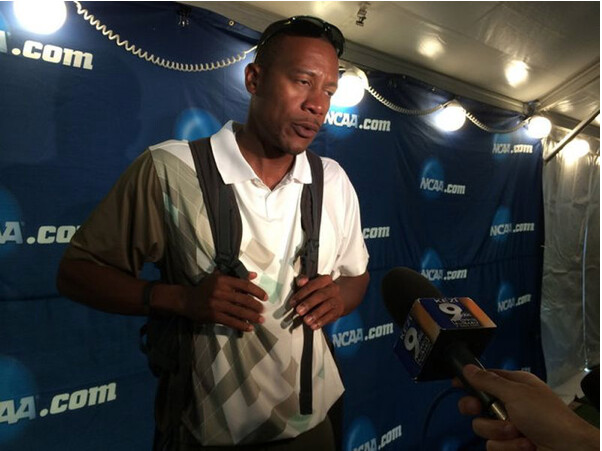
One said she began binge-eating while at Oregon. Another says she struggles with body dysmorphia and has nightmares about competing at Hayward Field, Oregon’s iconic track stadium, while UO coaches stare at her and say: “You’re never going to be good enough.”
Robert Johnson, who became UO’s track and field and cross country head coach in 2012, has guided the Ducks to 14 NCAA championships while elevating what already had been one of the sport’s premier college programs.
Under Johnson the Ducks increasingly have embraced expensive and advanced technological tools such as blood tests, hydration tests and DEXA scans. A DEXA scan is a medical imaging test that uses X-rays to precisely measure bone density and body fat percentage.
DEXA scans, in particular, have become a flashpoint for some athletes, who say the precise body fat percentage measurements can trigger unhealthy behaviors.
Johnson contends his scientific approach largely removes human bias from judgments about athletes and allows the UO coaching staff to design workouts precisely tailored to each athlete’s needs.
“Track is nothing but numbers,” he says. “A good mathematician probably could be a good track coach.”
He says UO athletes receive DEXA scans in the fall, winter and spring, and no more often because of radiation emitted during the tests.
“When we get the numbers from our DEXA scans, we have an Excel spreadsheet that we can plug the numbers into, hit a button and it gives us a starting value for a training program.” he says. “It allows us to be cutting edge and innovative in our approach to performance.”
Some athletes contend this innovation comes at a staggering personal price.
An athlete who graduated from Oregon at the end of the 2020 school year emailed UO deputy athletic director Lisa Peterson, senior women’s administrator, in October 2020.
In the email she says she had been receiving text messages and Snapchats that fall from former teammates so worried about upcoming DEXA scans they were starving themselves.
She tells Peterson in the email: “I have seen and experienced an absolutely disgusting amount of disordered eating on the women’s track team, all because the coaches believe body fat percentage is a key performance indicator.
“We are not professional athletes. We do not have access to a bounty of organic food. We do not have unlimited time to cook. We cannot plan our days around our nutrition, and we are not the 30-year-old Olympians that coach Johnson seeks to compare our body fat percentage to.
“While knowing body composition may be helpful for some athletes, I have seen it be nothing but destructive.”
The athlete says Peterson responded by thanking her for the email and saying she had passed it on and said that Peterson thought the allegations would be investigated. A public records request did not turn up a report of an internal investigation.
“A BIG, BIG ISSUE”
The issues of weight-shaming, body image and body fat percentage testing have become more common in recent years. Longtime Washington track coach Greg Metcalf lost his job in 2018 after accusations of body-shaming and verbally abusive treatment of female athletes. Former Nike Oregon Project star Mary Cain and other women who competed for the NOP have made similar accusations about former coach Alberto Salazar.
Five former UO athletes consented to extensive interviews on the condition their names not be used for several reasons. Among them:
• Oregon is one of the most nationally prominent college track and field programs.
• The school has a cozy relationship with Nike, which underwrites the funding for USA Track & Field and sponsors a high percentage of professional track athletes.
• Oregon’s Hayward Field, largely built with money donated by Nike co-founder Phil Knight, is the host of the Prefontaine Classic professional meet, the semi-permanent host of the NCAA Outdoor Track & Field Championships, next year’s USATF Outdoor Championships and the 2022 World Outdoor Championships.
One athlete says Johnson “is such a terrifyingly powerful man. There are people who would lose their ability to go to the Pre Classic or lose USATF funding, because speaking up against him is like speaking up against basically USA Track & Field.”
One athlete says when she was given her first DEXA scan at Oregon, she already had not had a menstrual period in a year and a half. She says the nutritionist knew that.
The scan showed her body fat percentage at 16%. She was told by the nutritionist she should consider lowering it to about 13%. And while the suggestion came from the nutritionist, she is certain the message originated with the coaching staff.
“They always were talking together,” she says.
The university did not make available a nutritionist or nutritionists in response to a formal interview request.
The athlete consulted her personal doctor, who advised her not to try to lower her body fat percentage any further. The American Council on Exercise suggests an ideal body fat percentage for a female athlete to between 14% and 20%.
“He said I already was in a situation that was dangerous for my body and that I needed to make sure I got my period back,” she says.
After that, she says, she struggled mentally.
“I started worrying a lot about what I was eating,” she says. “I wanted to make sure I wasn’t going to get too much bigger of a percentage. That was like a big, big issue.”
She was very careful during the day. At night in her apartment, though, she began binge-eating, which she says led to feelings of depression and guilt.
“That never had happened before I came to Oregon,” she says. “I never had any issues with food. I was completely fine. I loved food.”
At Oregon, she says, the yearlong monitoring became a trigger.
“You want to make sure you don’t put on weight, you become more paranoid and it gets worse,” she says.
She left after the school year, and still fights the temptation to binge.
Another athlete says her events coach conferred with her during her freshman year. She says he admitted he wasn’t supposed to tell her this, but said if she were to go above a certain body weight she never would be an Olympian.
After her first DEXA scan, the nutritionist told her she couldn’t travel to away track meets unless her body fat level was below 12%.
“That was when I started counting calories,” she says.
She says she weighed herself daily. What she saw on the scales determined whether she viewed her day as successful.
If she was above the targeted weight, “I would look at my legs, and I would say, ‘My legs look like tree trunks,’” she says. “If I was below that weight, I would be like, ‘Oh, I must be skinny.’ In reality, two or three pounds looks no different on your body.
“It wasn’t until I started seeing a sports psychologist that I realized this was not normal.”
That came after she transferred and her new school flagged her for an eating disorder.
A third athlete says that during her freshman year Johnson called her over during a workout and asked if she was on birth control.
Stunned by the question, she stammered “no” and returned to the workout.
“It was very crazy,” she says. “I was like, ‘What is going on? This is not happening. I am not having this conversation with him right now. This is just wrong. It’s none of his business.’”
She returned to ask Johnson why he wanted to know.
She says he told her: “Well, I noticed your hips have gotten wider, and that comes along with that kind of stuff.”
She says at Oregon she constantly monitored what she ate.
“They do multiple things to people about their weight,” she says. “They’re kind of notorious for it. They keep weight at a very high importance level. …
"Like whenever I would eat a cookie, I would feel so guilty. I would be like ‘Wow, it’s going to make my next DEXA scan bad. I’m going to get in trouble.’”
Four of the women interviewed say athletes whose DEXA scans show what coaches/staff consider an unacceptably high body fat content frequently are required to do additional cross training on a stationary bike.
Other athletes know who is doing mandatory cross training and why, even though it’s not explicitly said.
Athletes interviewed say this not only stigmatizes those doing the extra training, but incentivizes others to carefully monitor themselves so they aren’t singled out in that way.
“This program is just something different,” says one athlete who left the UO track team. “I don’t think it’s a place for young girls.
“Girls already have enough body image issues.”
“WE TRY TO APPROACH IT WITH SCIENCE”
Johnson said he would respond to specific allegations in general because he didn’t know which athletes were making the allegations. He says he feels sympathy and regret for athletes who believe they developed eating disorders while part of his program.
He says he and others in positions of responsibility within the program have acted swiftly and decisively to intervene when learning of athletes with disordered eating, or with emotional or physical problems.
“If these things were happening, such as binge-eating, or they were going down this road of unhealthy behaviors, hopefully we would catch it, and then give them resources to get better,” Johnson says.
“The health and safety of all our student-athletes is extremely important and at the forefront at all times.”
Johnson says nutritionists meet regularly with athletes in each event group so they understand the program’s approach and to identify any potential problems.
“We try not to let this weight issue be the pink elephant in the room,” he says. “We try to approach it with conversation and we try to approach it with science. … That’s one thing the DEXA scan helps us do. It takes our personal opinions out of it.”
Johnson says all UO athletes receive DEXA scans, men and women. He says UO track athletes are told there are sports psychologists available to them if they are struggling mentally with any aspect of being a college athlete.
But he says neither he nor psychologists can help if athletes don’t come forward.
“If those things were their experiences here, it’s shameful,” Johnson says. “We try to give them the information and the execution to deal with these things. If they choose to engage in those, there is help there. We can’t read their minds.”
Johnson says if he asked an athlete about birth control, it would have been only to suggest she use one recommended by UO doctors so weight gain wouldn’t be a side effect.
He says mandatory cross training isn’t meant to stigmatize athletes, but to help them get into competitive shape. He says that is part of his responsibility as coach.
Johnson says he could send those athletes on extra training runs to accomplish the same purpose. But that would expose their legs and feet to more pounding and increase the potential for injury.
“It’s basically that we want to increase their activity level in a safe manner that allows them to move closer to achieving their goals they set for themselves,” he says.
Many UO athletes compete for the Ducks without adverse effects.
Sprinter Rachel Vinjamuri says she is untroubled by the different ways the program monitored her, including the DEXA scans that revealed her body fat percentage.
“I never had a negative mindset about it,” says Vinjamuri, who transferred to UO from Portland State and graduated in 2020.
“It was just like this is where you need to be at to perform your best and here is how we do it. It was never like you get punished. It was just, let’s work toward this.”
She says she found the coaches and nutritionists constructive and helpful.
“People are more aware that eating disorders, dieting and things like that are becoming a huge problem in college sports,” she says. “I think Oregon is becoming more aware of that. I think they were doing the best they could.”
Vinjamuri says one difference between Portland State and Oregon is the superior resources at UO. In addition to the various high-tech tests, UO athletes have access to nutritionists who supplied them with snack bags of healthy food and recipes.
Some athletes who have competed for other programs in Power Five conferences, though, say differences in approach between Oregon and those programs are stark.
One says at her current school “everything is about holding yourself accountable. But if you don’t, you’re not getting punished. I think it’s the way you should treat college athletes. We’re adults. We’re not high schoolers anymore.”
Dan Steele was an assistant track coach at Oregon through 2009. He later was head coach at Northern Iowa and an assistant at Iowa State. He says his coaching philosophy is to steer clear of discussions about weight and body fat percentage.
“Testing for body fat is humiliating and detrimental to the athlete’s psyche,” he writes in a text message. “Young female athletes need to know their coaches believe in them.”
Steele says he never brought up an athlete’s weight or appearance, believing the athlete is the person most aware if she is too heavy or out of shape.
“I always tell them, ‘You’re fine. If you eat sensibly your body will morph naturally to the perfect size for optimum performance,’” he texts. “And that’s what I believe.”
“ATHLETES ARE NOT MACHINES”
Body weight and body fat percentage do factor into athletic performance. But several sports psychologists see red flags in approaches such as the one Oregon uses, particularly with women college athletes.
The sports psychologists consulted spoke in general terms, and not specifically about the UO track program.
Eugene sports psychologist Melissa Todd says she finds a process-oriented training approach better for college athletes than ones targeting a specific outcome.
She says young adults, away from home for the first time, are at a vulnerable point in their lives. The danger of emphasizing weight or body fat percentage is that those arbitrary numbers can begin to define victory for competitive people conditioned to win.
The first rule of any training strategy, she says, “should be to seek to minimize the potential for harm.”
“Athletes are not machines,” Todd says. “We need to see them in their entirety, as a whole person, and not boil down athletic performance to small details while missing the big picture.”
Portland sports psychologist Brian Baxter agrees, saying coaches should be at least as concerned with athletes’ emotional and mental well-being as they are with skill, technique and conditioning.
“The physical body doesn’t matter without mental health,” Baxter says. “Really, that has to be first.”
On its website, the National Eating Disorders Association includes a “Coach & Athletic Trainer Toolkit” for working with athletes. It includes this admonition:
“Coaches should strive not to emphasize weight for the purpose of enhancing performance, for example by weighing, measuring body fat composition, and encouraging dieting or extra workouts.”
The toolkit section of the website continues to say coaches who emphasize those things can lead athletes into unhealthy behaviors such as disordered eating that offset any gains achieved by lowering weight or body fat percentage.
The email sent in October 2020 to Peterson, the deputy athletic director and senior women’s administrator, seems not to have altered Johnson’s use of DEXA scans to monitor body fat percentage.
Responding by email, Peterson writes that she forwarded the email detailing concerns about the track program’s use of DEXA scans to “the appropriate campus officials.”
UO spokesperson Jimmy Stanton issued a statement in which he says the health and safety of athletes is the athletic department’s top priority.
Stanton’s statement continues: “There are many sports professionals on our staff that work closely in supporting student-athletes, including our medical team, athletic trainers, sports scientists and nutritionists. Additionally, all of our coaches undergo annual training from the UO Title IX office on a variety of topics, including communication with student-athletes.”
(10/31/2021) ⚡AMPby Oregon Live
Elisha Kiprop and Valentine Kipketer win men's and women's 2021 Standard Chartered Nairobi Marathon 42km race respectively
Elisha Kiprop and Valentine Kipketer are the winners of the 18th edition of the Standard Chartered Nairobi Marathon held today.
Valentine Kipketer outsmarted Naomi Chepkogei Maiyo, in the women’s 42km to win the race in 2 hours, 30 minutes and 02 seconds.
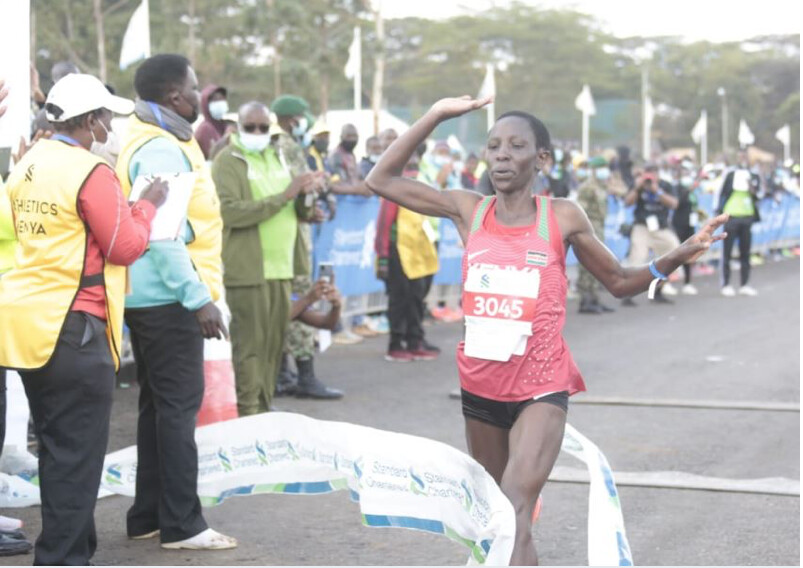
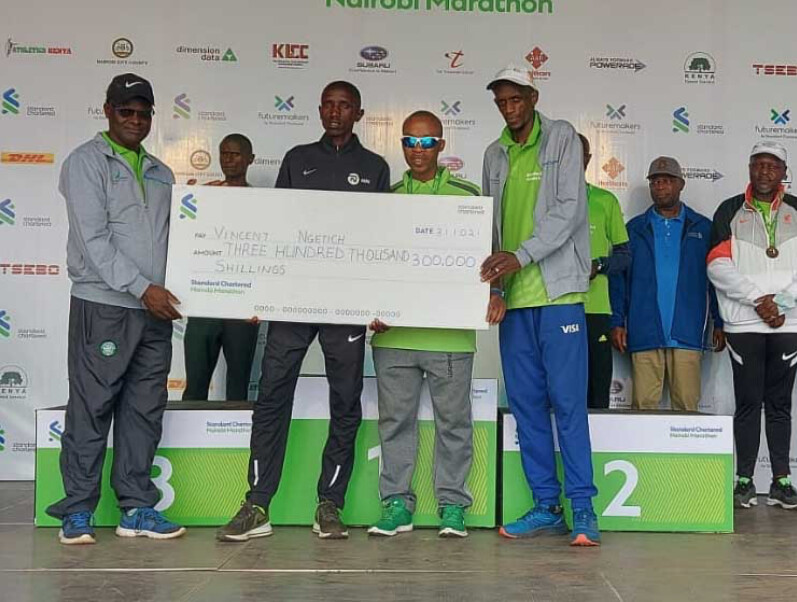
Naomi settled for the second slot in 2:32:23 with Lilian Chemweno coming third in 2:34:14.
In the men’s 42km event, Elisha Kiprop took command of the race to emerge victorious, with Alphonce Kigen coming second. Joshua Kogo finished third.
Winners in both categories each walked away with Sh2 million.
In the men's 21km half marathon race, Vincent Ng'etich won the race after crossing the finish line in a time of 1:01:44 with Rhonzas Kilimo coming second in a time of 1:00:59. Peter Kipsirat finished third in a time of 1:00:59.
Peris Engambi won the women’s 21km event in a time of 1:12:59 with Abigael Jelimo finishing second in a time of 1:13:41. Lilian Jebii came third after clocking 1:14:32.
The women's wheelchair event was won by Caroline Wanjira who finished in a time of 2:11:58.
Wanjira was followed home by Rahel Akoth Alar (2:23:05) and Eunice Atieno (2:39:10) during the 2021 Standard Chartered Nairobi Marathon.
The marathon made a comeback this year after it was cancelled in 2020 due to unprecedented challenges brought about by Covid-19 and the containment measures required.
(10/31/2021) ⚡AMP
NAIROBI MARATHON
Nairobi Marathon is an annual road running competition over the marathon distance held in October in Nairobi, Kenya. First held in 2003, the competition expanded and now includes a half marathon race along with the main race. It was part of "The Greatest Race on Earth", fully sponsored by Standard Chartered Bank....
more...Bernard Lagat and Deena Kastor to Join TCS New York City Marathon Broadcast Team
Five-time Olympian Bernard Lagat and Olympic medalist and American record holder Deena Kastor will join fellow Olympian Carrie Tollefson as part of the broadcast team for the 50th running of the TCS New York City Marathon on Sunday, November 7, which will be aired live on ABC7/WABC-TV in the New York City area and on ESPN2 nationwide.
WABC-TV and ESPN have been home to the award-winning broadcast of the world’s largest marathon since 2013. The race will be available globally in more than 180 countries and territories and in over 500 million homes through various international broadcast partners.
The trio of Olympians will join a team of 15 commentators, led by ESPN’s John Anderson, who will serve as race-day host and play-by-play analyst for his eight consecutive race. Both Lagat and Tollefson will join Anderson in the commentary booth. Kastor will join Lewis Johnson in covering the professional athlete races throughout the course from the women’s and men’s motos, respectively. Johnson will then join ABC7’s Sam Ryan in hosting the post-race award ceremonies for the champions.
Lagat competed at every summer Olympics on the track from 2000 to 2016, winning a silver and bronze medal in the 1,500 meters in 2004 and 2000, respectively. He ran the TCS New York City Marathon in 2018, finishing as the top men’s masters athlete. He will now make his broadcast debut at the event at the same time his sister, Viola Cheptoo, makes her marathon debut in the professional athlete field.
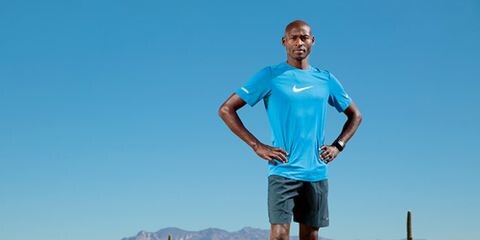
“In 2008, I got to watch the TCS New York City Marathon from a lead vehicle, and in 2018 I ran New York for my debut marathon,” Lagat said. “I’m excited that in 2021, I get to see the race unfold from yet another angle – in the broadcast booth. I hope my experiences as an athlete can add a different perspective to the race for those watching throughout New York City and across the country.”
Kastor is the American record holder in the marathon and a three-time Olympian who won a bronze medal at the Athens 2004 Games. She finished as the top American woman in her marathon debut at the 2001 New York City Marathon in an American debut record time, and had three top-10 finishes at the event in her career.
“Twenty years ago, I fell in love with the marathon distance when I debuted at the New York City Marathon,” Kastor said. “I feel privileged to commentate on this historic race by joining the ESPN2 broadcast with my fellow Olympians Bernard Lagat and Carrie Tollefson. I can’t imagine a better way to celebrate 50 years of this race.”
The group will be joined by a talented array of reporters at the start, finish, along the course, and in the sky, including ABC7’s Eyewitness News reporters Ryan Field, Anthony Johnson, Kemberly Richardson, Michelle Charlesworth, Lee Goldberg, John Del Giorno, and Josh Einiger.
The international feed will be led by local sports radio personality Ed Cohen calling the play-by-play, and veteran track and field broadcaster, Paul Swangard.
The broadcast, produced in coordination with 45 Live and distributed by IMG, will air on ABC7/WABC-TV and ESPN2 from 8:30 a.m. to 11:30 a.m. EST. Pre and post-race coverage will air on WABC-TV from 7:00 a.m. to 8:30 a.m. EST, and 11:30 a.m. to 1:30 p.m. EST.
Long-time director of the broadcast Bruce Treut, who has directed every New York City Marathon broadcast since 1989, is handing the reins to Brigette Boginis. Boginis, the first women at the helm of the show, will pick up Treut’s duties directing 35 live cameras.
The 50th running of the race will also stream live on abc7ny.com, and the ABC7New York app in the tristate viewing area and the ESPN App nationally from 8:30 a.m. to 1:00 p.m. EST. Pre-race and continuing coverage will also be streamed live nationally on ESPN3 (accessible on the ESPN App and ESPN.com) from 7:00 a.m. to 8:30 a.m. and from 11:30 a.m. to 1:00 p.m.
A two-hour encore presentation of the race broadcast will air on ABC affiliates around the country from 4:00 p.m. to 6:00 p.m. EST and on ESPN2 from 8:00 p.m. to 10:00 p.m. EST.
International broadcast partners secured by IMG for the race include: ESPN Brasil (Brazil), SMG Sports (China), Eurosport (Pan Europe, Pan Asia, India), L’Equipe (France), RAI (Italy), TV Asahi (Japan), Sky Mexico (Mexico), NOS (Netherlands), New Zealand (Sky), SuperSport (South Africa), ESPN International (South America), and TVE & Esports3 (Spain).
This year’s broadcast features an engaging story on U.S. Olympic marathon medalist Molly Seidel; a look back at the first New York City Marathon in 1970 through the spoken word of its first champion, Gary Muhrcke; and an insightful piece on New York City during the pandemic from the perspective of Ana Johnson, an Oncology Nurse at Memorial Sloan Kettering Cancer Center racing in the professional women’s field.
(10/30/2021) ⚡AMPby Running USA
TCS New York City Marathon
The first New York City Marathon, organized in 1970 by Fred Lebow and Vince Chiappetta, was held entirely in Central Park. Of 127 entrants, only 55 men finished; the sole female entrant dropped out due to illness. Winners were given inexpensive wristwatches and recycled baseball and bowling trophies. The entry fee was $1 and the total event budget...
more...Kenyan marathoner Rionotukei Chemutai eyes Standard Charter Nairobi Marathon title after years of near misses
Kenyan marathoner Rionotukei Chemutai believes time is ripe for her to win her first StanChart Nairobi Marathon race after previously coming close to claiming first place without much success.
At the last edition in 2019 in Nairobi, Chemutai finished second, timing 2:33:04, behind Purity Jebichi who came first in 2:30:33.
This followed her third and seventh places finishes in the same road race in 2015 and 2013.
"My obvious target will be to win the women's race. It's only logical because the last two times I was on the podium so the next step is to go for the top prize. However, I know it won't be easy because so many others will be going for the same win," Chemutai said.
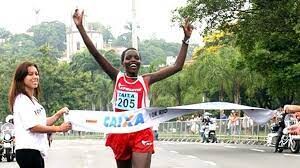
She added: "So many athletes are hungry for competition because they haven't been to run as much due to the coronavirus restrictions. Even though there have been international marathons, most athletes have not been able to participate in many of them. Therefore, StanChart offers them a great opportunity to run."
Regardless of the magnitude of her opposition, the 2017 Taiyuan Marathon is confident her hard work in training will pay off come Sunday.
"I have been working on my speed work both for the start and finish. Everyday, I cover 26-30km to get myself in the perfect physical shape for the marathon. Based on what I have experienced so far, I can say that training has worked out well," Chemutai said.

One of the key changes to this year's marathon, which is returning after a one-year hiatus due to the Covid-19 pandemic, is the shift of the route from the traditional Uhuru Highway to the Southern By-pass.
This has been necessitated by ongoing roadworks on the Nairobi Expressway. Nonetheless, Chemutai insists this will not affect her preparedness for the marathon and adaptation to the new route.
"A marathon is a marathon because the distance remains the same regardless of the route change. With regards to whether the course will be more hilly than am used to, I don't think it will be much of a bigger challenge," she said.
As someone who has been active in athletics for close to two decades, the Tegla Loroupe Peace Race 10km says self-discipline and hard work is the key to success.
"You have to have a training program and stick to it. This requires discipline and to follow the instructions of your coach. Credit to my coach, Elkanah Ruto, for always supporting me to grow in my career," she said.
(10/30/2021) ⚡AMPby Omondi Onyatta
NAIROBI MARATHON
Nairobi Marathon is an annual road running competition over the marathon distance held in October in Nairobi, Kenya. First held in 2003, the competition expanded and now includes a half marathon race along with the main race. It was part of "The Greatest Race on Earth", fully sponsored by Standard Chartered Bank....
more...Javelina Jundred is the Ultimate 'Jalloween' Party
There's going to be one hell of a Halloween party held on the outskirts of the Phoenix metro area this weekend.
Part authentic endurance running race and part freak show with costumed trail runners constantly in need of rehydrating, the Javelina Jundred trail running races and post-race party are the stuff of legend. As the race producers at Aravaipa Running proclaim from the start, "it will test your endurance and challenge your sanity."
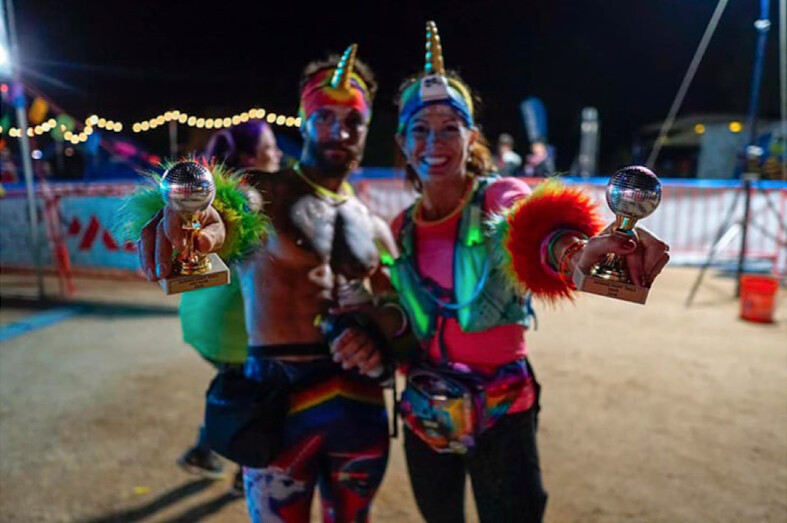
The 19th annual Javelina 100-mile and 100km races begin Saturday at 6 a.m. and send runners out on a mostly flat and fast multiple- loop course through the desert terrain of McDowell Mountain Regional Park. And while fast running isn't discouraged - the women's 100-mile winner usually finishers under 16 hours and the men under 14 hours - costumers definitely are encouraged. There's also a nighttime race called the single-loop Jackass Night Trail 31km that finishes as the Saturday night party is starting to rev into high gear.
Javelina is a trail running party that really wants to be an all-night rave. As much as it offers great fall racing opportunities (with 2022 Western States 100 Golden Ticket qualifying spots for the first time), it's really more about being a massive Ultra Jalloween Party for the ultrarunning community. The races draw both elite pros, middle-of-the-packers and novice runners alike, but it's the colorful costumes, free candy at aid stations, all-night music, spontaneous dance parties, fire dancing, misfit parade for waitlisted runners and other festive craziness that runners remember the most.
The race was started in 2003 by Phoenix ultrarunner Geri Kilgariff as an irreverent, party-oriented fun run on a multi-loop course and eventually later taken over by Aravaipa Running in 2008.
"She created this event to basically troll everyone, and thought that it would be funny," Matt Feldhake said during the race's video preview released this week. "And it's turned out to be this incredible, fun event in the desert. She created something great and we've been grateful to continue to put it on since 2008."
How wild is it? Put it this way, no other race has an aid station with the nickname of Boner. (It's a skeleton figure you'll encounter at the Jackass Junction aid station.) There's also a "Best Ass Award" at this desert party, which coincides with the adult-themed "R" rating Aravaipa brandishes on its website.
As for the racing, there are plenty of talented runners among the 588 entrants in the 100-mile field. That includes Devon Yanko (39, San Anselmo, California), Camille Heron (39, Oro Valley, Arizona), Brittany Peterson (35, Pocatello, Idaho), Meredith Edwards (37, Durango, Colorado), Lisa Robert (42, Tucson), Tessa Chesser (34, Flagstaff, Arizona) and Lotti Zeiler (25, Austin, Texas) on the women's side and Dave Stevens (39, Canada), Adam Dalton (27, San Diego), Michael Demarco (34, Baton Rogue, Louisiana), Zach Merrin (36, North Canton, Ohio), Charlie Ware (36, Tucson) and Joe "String Bean" McConaughey (30, Seattle) among the top men.
Also in the field are 13-time finisher Susan Donnelly (58, Oak Ridge, Tennessee) and 11-time finisher Fred Roberts (61, Tucson). And then there's Ed Ettinghausen (59, Murietta, California), a six-time Javelina finisher who has made a name for himself by taking on the Javelina Jundred in a full suit and heavy jester hat.
In the 100K, Tyler Andrews (41, Concord, Massachusetts) leads a strong men's field, while Cat Bradley (29, Boulder, Colorado) is one of the top entrants among the women's field.
"It's definitely a one-of-a-kind race," says Phoenix trail runner John Byrne. "But even if you don't run fast or well or very long, it's an amazing party."
(10/30/2021) ⚡AMPby Trail Runner Magazine
This Is the Best Ice Bath Temperature and Duration to See Legit Recovery Benefits
It’s important to follow the right strategy in order to lessen inflammation and muscle soreness.
Ice baths are beneficial as long as you follow the correct guidelines, according to new research.
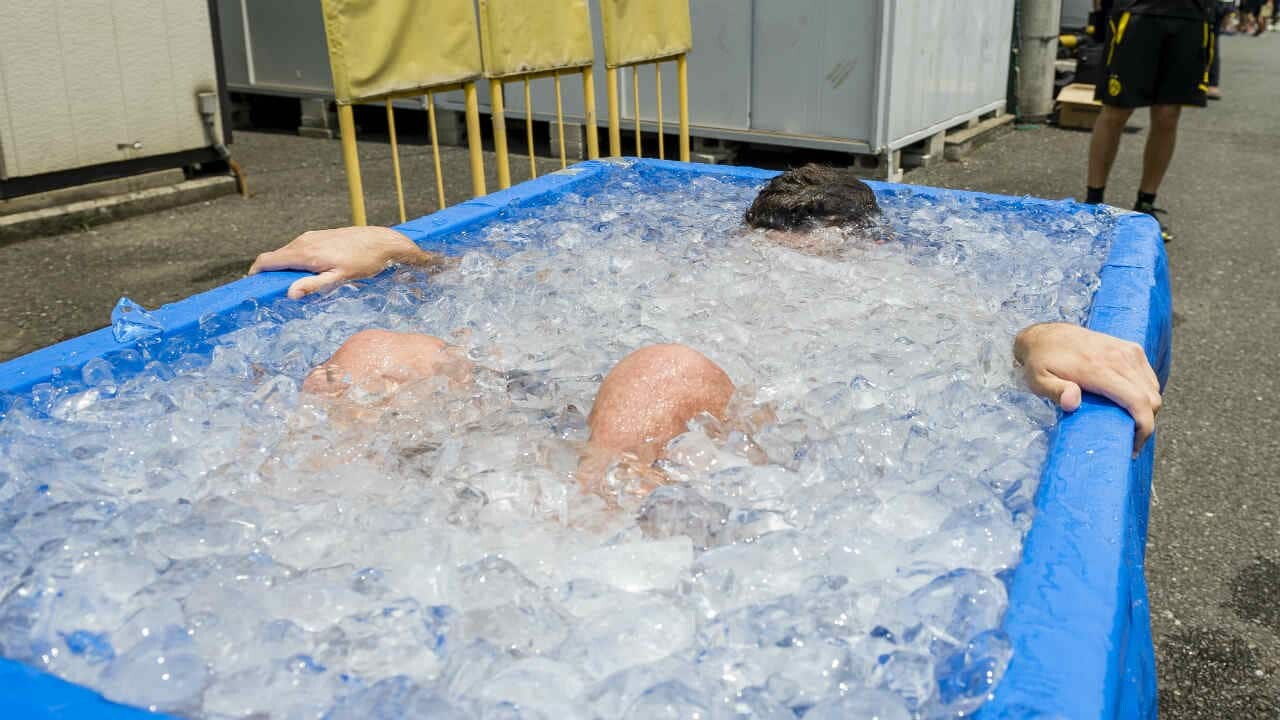
The recommended temperature range is between 48 to 59 degrees Fahrenheit, and you should stay in the water 10 to 15 minutes to make the most of your postworkout recovery.
When you’ve just finished an intense workout or long run, your body may crave the fast cooldown that a cold bath—complete with ice floating on top—can provide, but do they really work? New research published in the journal Sports Sciences for Health suggests they can, as long as you follow the correct guidelines.
(10/30/2021) ⚡AMPby Runner’s World
The basics, benefits and limits of altitude training
For years, altitude training has formed an important part of the training of many endurance athletes who cite it as a core part of their season. Here we break down the basic theory behind it, the difficulties athletes must overcome and the main spots to do it.
Though different definitions exist of what constitutes altitude training, we will, for the sake of clarity, consider altitudes in the region of 1500m to 3000m above sea level.
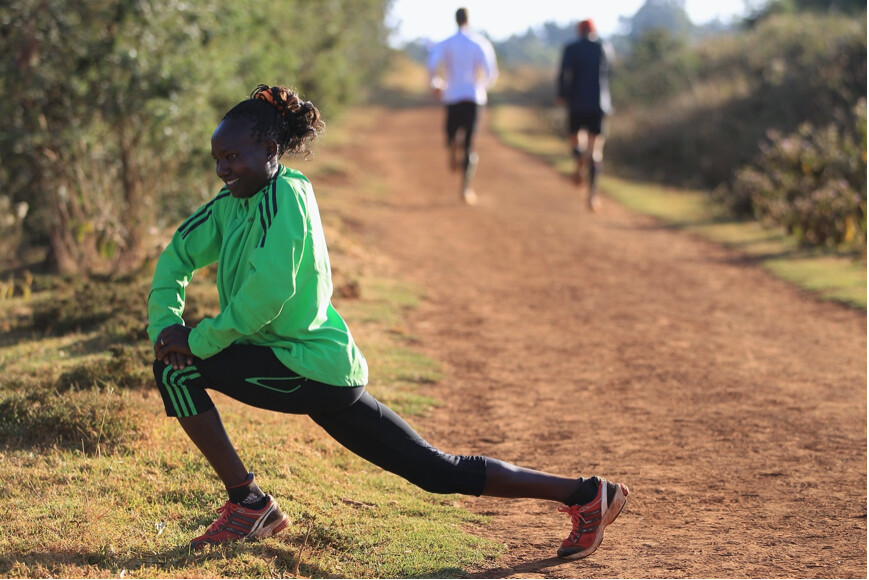
The theory behind altitude training
In simple terms, the oxygen inhaled from the air people breathe affects the energy their muscles receive to perform physical activities. Oxygen is carried around the body within red blood cells and helps the molecules in muscles perform their functions.
The higher the altitude, the lower the atmospheric pressure, which makes it harder for the body to transfer the oxygen into the blood. This is why people can often feel lethargic at altitude.
In response to this situation, the brain triggers the increased production of the hormone erythropoietin (EPO), encouraging the body to make more red blood cells to better transport the oxygen available. This means, over time, the body begins to transport the limited oxygen better than when it first arrived at altitude.
When an athlete then returns to sea level this increased level of red blood cells, coupled with the higher atmospheric pressure, means the body is better able to transport oxygen than it was before and an athlete’s aerobic capacity is increased.
The body will, over time, return to normal levels of red blood cell production if the process is not repeated and the time taken for this to happen will vary from one athlete to the next.
How long do people train at altitude for?
It takes time for the body to adapt to higher altitude and many of the effects do not occur until after a prolonged period of time. Various studies suggest there is no increase in red blood cell count within the first seven to 10 days, meaning usually athletes choose to spend a minimum of three to four weeks at altitude.
Some athletes choose to be based at high altitude throughout the year (e.g. Boulder in Colorado, Iten in Kenya and Addis Ababa in Ethiopia), coming down to sea level for shorter periods around a racing season.
The difficulties of living at altitude
Early on in any stay at altitude individuals will likely find themselves to be lethargic as their body responds to the lower atmospheric pressure. Other side effects can include headaches and difficulty sleeping but these will often wear off as the body slowly adjusts to its new environment.
In extreme cases and at the highest altitudes (usually in excess of 3000m), severe failures to adjust can result in acute mountain sickness (AMS) with a range of possible harmful effects.
Athletes will also find it difficult to replicate the pace they are able to run at sea level because of their body’s reduced ability to transport the available oxygen.
Many will therefore choose to head to lower altitude to perform much of their more intense training. This approach is generally referred to as “live high, train low” but it is an approach only possible where different altitudes exist in close proximity.
Where do people train at altitude?
There are a number of locations where athletes choose to train across the world but some locations are particularly popular. These include Iten (c. 2400m) in the Rift Valley, home to many famous athletes including Mary Keitany and Lornah Kiplagat.
Over the border in Ethiopia, established camps exist in Sululta (c. 2700m) and in the capital Addis Ababa (c. 2355m), with products including Kenenisa Bekele and Haile Gebrselassie.
Europe plays host to a number of Alpine and Pyrenees resorts, including Font Romeu (c. 1850m) in France, and St Moritz (c. 1856m) in Switzerland.
The USA has a number of high altitude hubs, with Boulder (c. 1624m) in Colorado a huge centre of North American running as well as Flagstaff (c. 2106m) in Arizona and Albuquerque (c. 1619m) in New Mexico.
Other locations include Mexico City (c. 2240m), Potchefstroom (c. 1378m) in South Africa, Falls Creek (c. 1600m) in Australia and Ifrane (c. 1660m) in Morocco. All locations come with their various pros and cons so it is important to research properly prior to any trip to altitude.
Are there alternatives to training at altitude?
Some athletes choose to replicate the experience of living in these locations through an altitude tent. These tents reduce the amount of oxygen within them and can be lived and slept in without the need to move location. Some see this as a less expensive and more pragmatic alternative to long trips away from home.
(10/30/2021) ⚡AMP
by World Athletics
Negative Splits Might Be the Epitome of a Successful Run, But They Are Sometimes Overrated
It might be the epitome of a successful run, but negative splits are sometimes overrated. Enter: the controlled fade.
The idea of running negative splits has been so ingrained in us, it’s as rudimentary of a skill for runners as tying your shoes. At some point, every runner needs to learn how to run negative splits or figuratively die trying.
By definition, a negative split is when the second half of your run or race is faster than your first half. The ability to run negative splits teaches you how to manage your energy and pace yourself properly throughout a race or training run. This is ideal because you learn how hard you can push early so you won’t blow up during the second half.
But just as every coin has two sides, so does pacing. On the flip side of negative splits are positive splits. This is where you go out faster and slow down as the run or race goes on. Considered taboo, prevailing wisdom warns against intentionally running positive splits. Positive splits are thought to be associated with pain, embarrassment, and bad outcomes.
However, I think most gamblers would agree that sometimes a calculated move against the prevailing odds can pay out big time. And as certified run coach and runner myself, I think when executed properly, the positive split can be a powerful pacing strategy. One that might just get you that personal record or Boston qualifying time you’ve been working so hard to finally snag. But here's what to know before you start your next run or race on the faster side of your goal pace.
Should you ditch a negative split goal?
The elusive negative split is perhaps as much of a goal in running as setting a personal best. We see the elites do it all the time and it has been well documented that most world records are set with negative splits. But what about the rest of us who aren’t breaking world records? Are there scenarios where one should ditch a negative split? I would say yes.
Justin Ross, Psy.D., a clinical psychologist specializing in health and wellness psychology, human performance, and sports psychology agrees. A runner himself, Dr. Ross explains, “elites are really good at running 26 miles because they've been running 100 plus miles a week for a long time, versus amateurs who just can't maintain that pace for that long of a period because we don't have the training or maybe even the physiological capacity.”
This brings up the question: If we amateurs aren’t running 100 plus miles a week and may not have a superior physiological capacity, should we be mimicking the elites’ negative split pacing strategy? While I do believe the more experienced runners should seek to follow their faster counterparts, I want to offer an alternative for the non-elites. That is, something I call the “controlled fade.”
What is a controlled fade?The controlled fade is a deliberate, positive-split pacing strategy—one that is calculated and won’t lead to blowing up or hitting the wall. It’s a slow, gradual fade in pace. “I don't think we need to fear the positive split if it's done with intention and reason and that the slow fade is really close—like within relatively even splits,” explains Dr. Ross.
Note Dr. Ross’ words “done with intention and reason.” For a controlled fade to be successful, it needs to be a calculated strategy. Dr. Ross warns, “I don’t think we need to be afraid of the positive split, but I do think we need to be careful of it.” This is because the margin for a blowup is much greater than with a negative split strategy. If you’re too ambitious during the first half, a controlled fade will result in a disastrous second half, potentially one that leaves you dragging or walking or just straight up miserable for those latter miles. On the other hand, if executed properly, it can be highly successful.
What’s the benefit of skipping a negative split?
“I think a big part of this is a mindset shift that you don't have to negative split to run a PR,” says Dr. Ross, who set his marathon personal record of 2:57:36 at the 2019 California International Marathon by running 86 seconds faster in the first half of his race—coincidently a positive split.
Mentally, there is a very different mindset between having to pick up the pace at mile 20 to reach your goal when you're already tired versus having time in the bank to fade a little. With the latter, you've met your goal and it's yours to lose and with the former, you don't have the goal and need to chase it when you're already tired. People are more likely to fight to hold onto something they already have than something they never had in the first place.
So that benefit to a controlled fade? It comes down to a pretty positive mental approach to those latter miles—and of course, it could also pay off with a faster finish time.
How do you properly execute the controlled fade?Being honest about your current fitness is crucial for the successful execution of the controlled fade. The best way to get an honest assessment of your capabilities over all race distances is to plug a recent race result into a running pace calculator that projects what an equivalent performance would be across other distances. This will give you an idea of what you are capable of if all things go perfectly on race day.
In most cases, a more realistic goal is to add two to five minutes to what calculators tell you, especially if you’re using race times further away from the marathon such as a 5k time. If your goal falls within that two- to five-minute window, it’s likely to be attainable and suitable for the controlled fade strategy.
A controlled fade works best when you run the first half of your race between a total of 30 seconds and three minutes faster than the second half. This equates to five to ten seconds per mile for the marathon. When pacing the first half of a marathon, aim for five seconds per mile faster than the goal finishing time pace with an absolute speed limit of 10 seconds per mile faster. For example, if you’re trying to break 3:30 for the marathon or run an average 8:00/mile, aim to run the first half at a 7:55/mile pace, never to exceed a 7:50/mile.
The goal is to maintain this pace for as long as you can, expecting you’ll fade at some point. The deeper into the race you hold the pace, the more of a buffer you’ll build against your goal finishing time.
Keep in mind, it’s still important to ease into that faster pace. So starting 10 seconds slower than the goal pace for the first mile may be a good option for some who need a warmup mile. You’ll make up that time by mile four or five if you settle into your planned controlled fade pace by mile two.
When should you use a controlled fade?A controlled fade works best for longer races, such as the marathon, and when there’s a lot of internal pressure to beat a very specific time.
To determine when to use a controlled fade, it comes down to your goals. Dr. Ross points out the difference between outcome goals and performance standards. Outcome goals are a specific outcome you’re pursuing, such as breaking your personal record or qualifying for the Boston Marathon, whereas performance standards are “more about the approach you take to showing up.” For outcome goals, there is a clear delineation between success and failure. You either hit your goal, or you don’t.
“Often what will happen in the course of a race is we recognize that our outcome goals are out the window for whatever reason—the weather isn't cooperating or it's just not our day. At that moment in time, often runners get really defeated and they get frustrated,” Dr. Ross says. Without having a performance standard to fall back on, some runners might give up and completely abandon their goal.
That’s where the controlled fade comes in: Building a small cushion of time to fall back on late in the race allows runners who place a heavy emphasis on outcome goals some room for error, alleviating some of the pressure.
So think about what you want to achieve in your run or if you have that specific goal to chase in your race and whether the controlled fade would work for you.
What do other coaches say?Terry Howell, owner of Blue Collar Running, has coached seven runners to the 2020 Olympic Trials. He agrees the controlled fade is a viable plan for some runners and often builds in a cushion, even for his elite runners. “Depending on the caliber of the athlete, and the condition they’re in, I'm okay with a two-minute cushion on the backside, meaning going slower in the second half.” In an ideal situation, Howell likes to see his athletes somewhere between 30 seconds slower and 30 seconds faster than their goal marathon pace at the halfway point.
On the other hand, Karen Dunn, owner of Strengthen Your Stride and VDOT certified distance coach and RRCA level two run coach, says “it really comes down to knowing your athlete, knowing their history, goals, and mental strength and tenacity.” She believes that an even pace, or slightly negative is the best strategy, but does acknowledge if it’s the right person, a positive split may help some gain confidence.
Is a controlled fade the right approach for you?
At the end of the day, it’s important to steer clear of absolutes. When it comes to a negative-, positive-, or even-split pacing strategy one isn’t always better than the other. It all boils down to the individual runner, race course, and what feels comfortable in a given situation.
However, the only way to find out if one pacing strategy is better for your particular situation is to try it out. If you’re like most runners who have been wired to believe positive splits are synonymous with poor performances, give the controlled fade a try. It could pay off even more than you expect.
(10/30/2021) ⚡AMPby Runner’s World
Sister of Bernard Lagat, Viola Cheptoo will Run her first marathon debut at New York Marathon
When Viola (Lagat) Cheptoo decided she was going to run her marathon debut at the 2021 New York City Marathon, one of the first things she did was tell her family in their WhatsApp group text.
As the youngest of 10 in a family full of talented runners, Cheptoo, 32, grew up watching her older siblings make history on the track and the roads. When she took up the sport as a kid, she had nine brothers and sisters to look up to and who’ve supported her endeavors ever since. This summer, the Iten, Kenya native couldn’t wait to share her plans for the next phase of her running career.
After she sent the text, Cheptoo was hit with another layer of excitement from the fifth-oldest sibling, five-time Olympian Bernard Lagat.
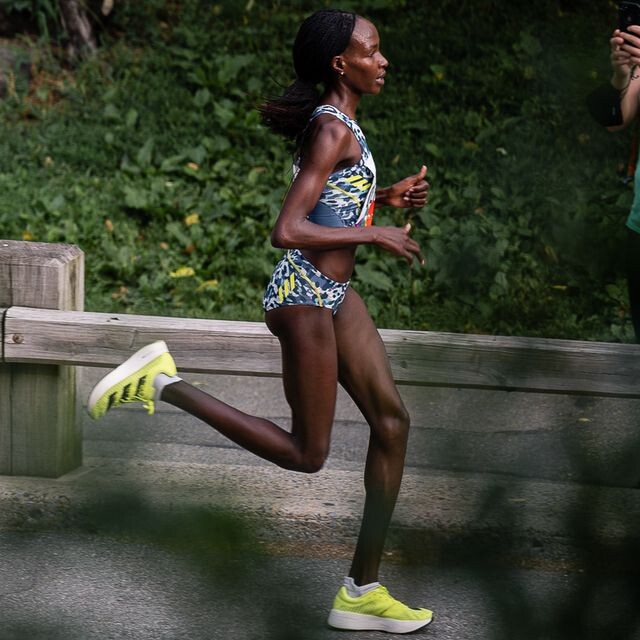
“My brother was like, ‘Oh my gosh! Are you serious because I’ll be commentating there!’” she told Runner’s World.
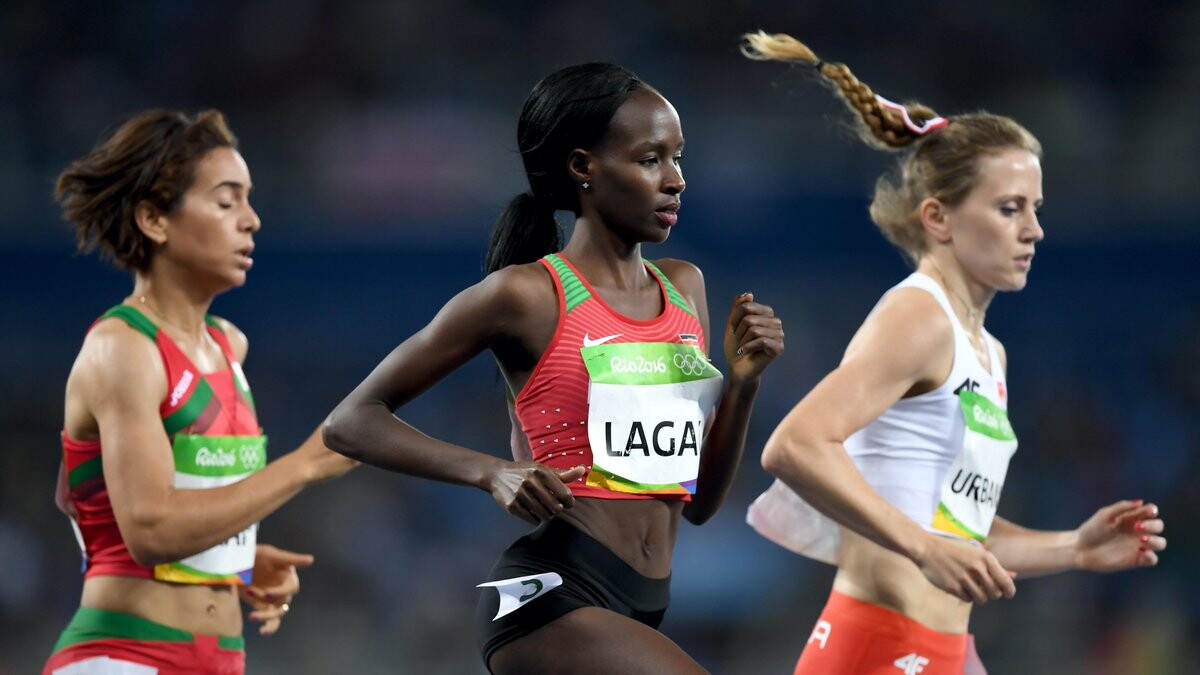
On November 7—three years after Lagat, 46, made his marathon debut in New York City—Cheptoo will compete in her first 26.2 on the same course, while her brother announces the 50th running of the race as one of three Olympians headlining the ESPN broadcast team.
When Cheptoo learned this news, she was reminded of the enthusiasm she felt during the summer of 2016 when she and Lagat both competed at the Rio Olympics. He represented Team USA with a fifth-place finish in the 5,000 meters, and she represented Kenya in the 1500 meters. This year, running is bringing them together once again on the streets of New York City.
“It’s one of those things that you only dream of, siblings to make a team for your country and be at big events at the same time,” she said.
Like her brother, who is 14 years older, Cheptoo started as a middle-distance runner. By the time she was in grade school, Lagat was becoming a three-time NCAA champion and 11-time All-American at Washington State University.
Cheptoo competed for two seasons at Central Arizona College in 2009 and 2010 before transferring to Florida State University in 2011. Looking back on her college career, Cheptoo credits then-FSU head coach Karen Harvey with encouraging her to see herself as a long-distance runner after competing in the 800 meters early on. By her senior year, Cheptoo bought into the idea and became an All-American in cross country and the 1500 meters.
In 2016, she competed for Kenya at the 2016 World Indoor Championships and 2016 Olympic Games. That year, she finished eighth in the 1500-meter indoor final in Portland, Oregon and sixth in heat 2 of the 1500-meter semifinal in Rio.
After the Rio Games, Cheptoo got injured and switched coaches in 2017, moving to Iten to join a training group led by coach Julien Di Maria. In her return to consistent running, he encouraged her to embrace longer runs to build a strong base of mileage. In 2018, she went from running 6 to 7 miles every day to 8 to 12 miles, depending on the workout, and the training paid off.
In February 2020, she made her 13.1 debut at the Napoli City Half Marathon in Italy, where she won in 1:06:47.
“My coach was like, ‘If you don't believe in yourself, I think this is something that should make you realize that you can actually run a good marathon,’” she recalled. In the same conversation, Cheptoo said he predicted she’d run a marathon in two years. “I thought he was joking.”
“I’ve just decided to give myself a chance when it comes to this marathon in New York,” Cheptoo said. “I’m just focusing on the positive things and thinking about mentally preparing myself that I’m going to be strong. I’m not going to let the pain distract me from focusing on my race.”
(10/29/2021) ⚡AMPby Tailor Dutch
TCS New York City Marathon
The first New York City Marathon, organized in 1970 by Fred Lebow and Vince Chiappetta, was held entirely in Central Park. Of 127 entrants, only 55 men finished; the sole female entrant dropped out due to illness. Winners were given inexpensive wristwatches and recycled baseball and bowling trophies. The entry fee was $1 and the total event budget...
more...National Champions and olympic medalists will Headline 2021 USATF 5K Championships at Abbott Dash to the Finish Line 5K
The 2021 Abbott Dash to the Finish Line 5K and USA Track & Field (USATF) 5K Championships on Saturday, November 6, will feature five Olympians and 28 athletes who competed at the 2020 U.S. Olympic Trials.
The event will take place in Midtown Manhattan the day prior to the TCS New York City Marathon and will be broadcast live on USATF.TV. Abbott will return as the title partner of the event which features a $60,000 prize purse – the largest of any 5K race in the world.
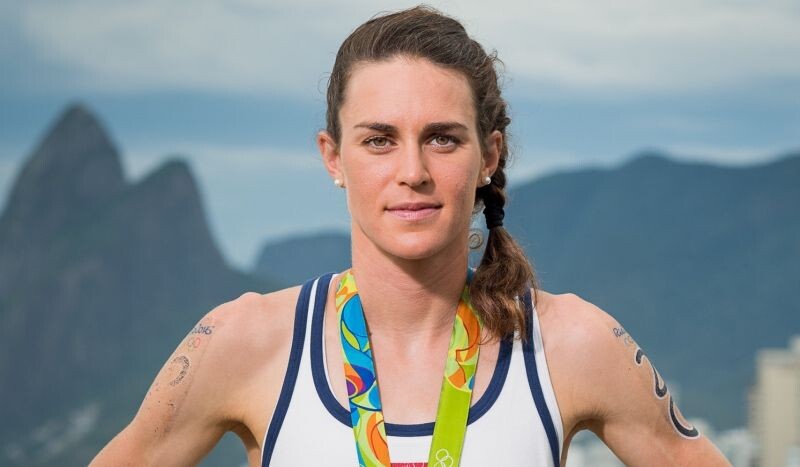
The men’s field will be led by two-time Olympic medalist and eight-time national champion Paul Chelimo and Rio 2016 Olympic gold medalist and seven-time national champion Matthew Centrowitz. Chelimo, who won an Olympic 5,000-meter silver in 2016 and bronze in 2021, won the 2018 USATF 5K Championships in New York in a course-record time of 13:45. They will be challenged by 2021 national champions Eric Avila (mile), Sam Chelanga (10K), and Biya Simbassa (10 mile and 25K).
“I learned a lot in my experience racing in NYC at the Fifth Avenue Mile earlier this fall, but the 5K is my event, and as the course-record holder at the Abbott Dash to the Finish Line 5K the way I see it, all these other guys are coming into my house,” Chelimo said. “I look forward to the challenge and will run my heart out for another USATF 5K title. Go hard or suffer for the rest of your life!”
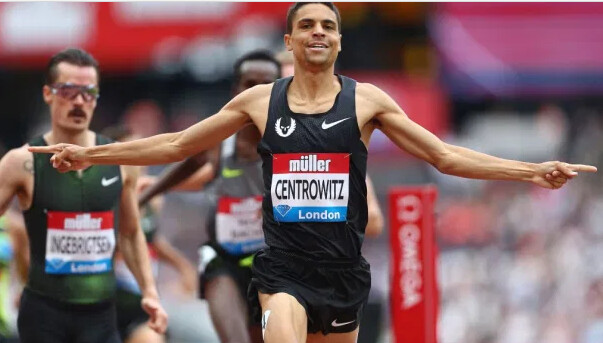
Two-time NCAA champion Weini Kelati and two-time U.S. champion Erika Kemp will headline the women’s field. They will be joined by Rio 2016 Olympic triathlon gold medalist Gwen Jorgensen, who won the Dash to the Finish Line 5K in 2014, and two-time Olympian and Team New Balance athlete Kim Conley.
“Winning the 10K for Women in Boston earlier this month gave me a huge confidence boost as I get ready for the Abbott Dash to the Finish Line 5K and USATF 5K Championships,” Kelati said. “That I broke Molly Huddle’s event record, who won the USA 5K Championships six times, makes me believe that I can compete against the very best and add my name to that list of national champions. I can’t wait to run my first New York City road race.”
Following in the footsteps of the professional athletes will be more than 7,000 runners participating in the Abbott Dash to the Finish Line 5K, including top local athletes and many runners participating in the marathon the following day.
Abbott, the title sponsor of the Abbott World Marathon Majors, will be the sponsor of the Abbott Dash to the Finish Line 5K for the fifth time. Abbott, a global healthcare company, helps people live fully with life-changing technology and celebrates what’s possible with good health.
The Abbott Dash to the Finish Line 5K annually provides TCS New York City Marathon supporters, friends and families the opportunity to join in on the thrill of marathon race week. The course begins on Manhattan’s east side by the United Nations, then takes runners along 42nd Street past historic Grand Central Terminal and up the world-famous Avenue of the Americas past Radio City Music Hall. It then passes through the rolling hills of Central Park before finishing at the iconic TCS New York City Marathon finish line.
The Abbott Dash to the Finish Line 5K and USATF 5K Championships will be broadcast live via USATF.TV. The broadcast is scheduled to begin at 8:20am ET with the first race starting at 8:30am ET.
About New York Road Runners (NYRR)
NYRR’s mission is to help and inspire people through running. Since 1958, New York Road Runners has grown from a local running club to the world’s premier community running organization. NYRR’s commitment to New York City’s five boroughs features races, virtual races, community events, free youth running initiatives and school programs, the NYRR RUNCENTER featuring the New Balance Run Hub, and training resources that provide hundreds of thousands of people each year with the motivation, know-how, and opportunity to Run for Life. NYRR’s premier event, and the largest marathon in the world, is the TCS New York City Marathon. Held annually on the first Sunday in November, the race features a wide population of runners, from the world’s top professional athletes to a vast range of competitive, recreational, and charity runners. To learn more, visit www.nyrr.org.
(10/29/2021) ⚡AMPby Running USA
Dash to the Finish Line
Be a part of the world-famous TCS New York City Marathon excitement, run through the streets of Manhattan, and finish at the famed Marathon finish line in Central Park—without running 26.2 miles! On TCS New York City Marathon Saturday, our NYRR Dash to the Finish Line 5K (3.1 miles) will take place for all runners who want to join in...
more...These Short intervals will improve your VO2 max
Your VO2 max, which is the maximum amount of oxygen your body can use during dynamic exercise, is an important measure of aerobic fitness. While it isn’t the only factor that determines athletic performance, improving your VO2 max can help you get faster.
This 30-15 workout is a tough, effective way to increase your rate of oxygen consumption while you’re running to help you grab a personal best in your next race.
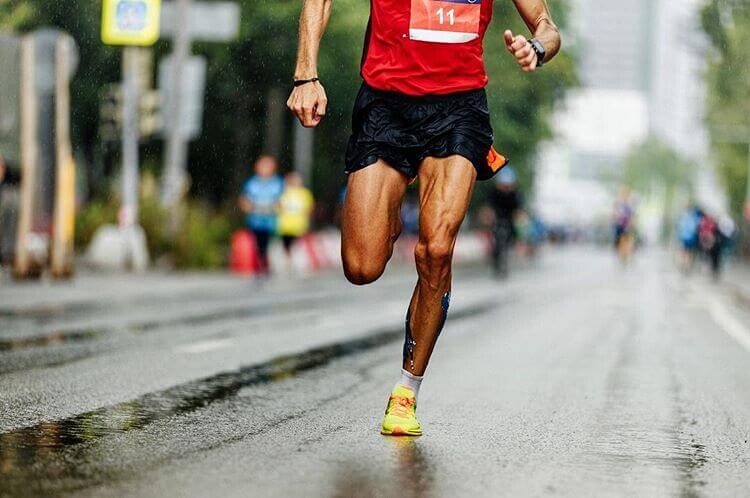
The workout
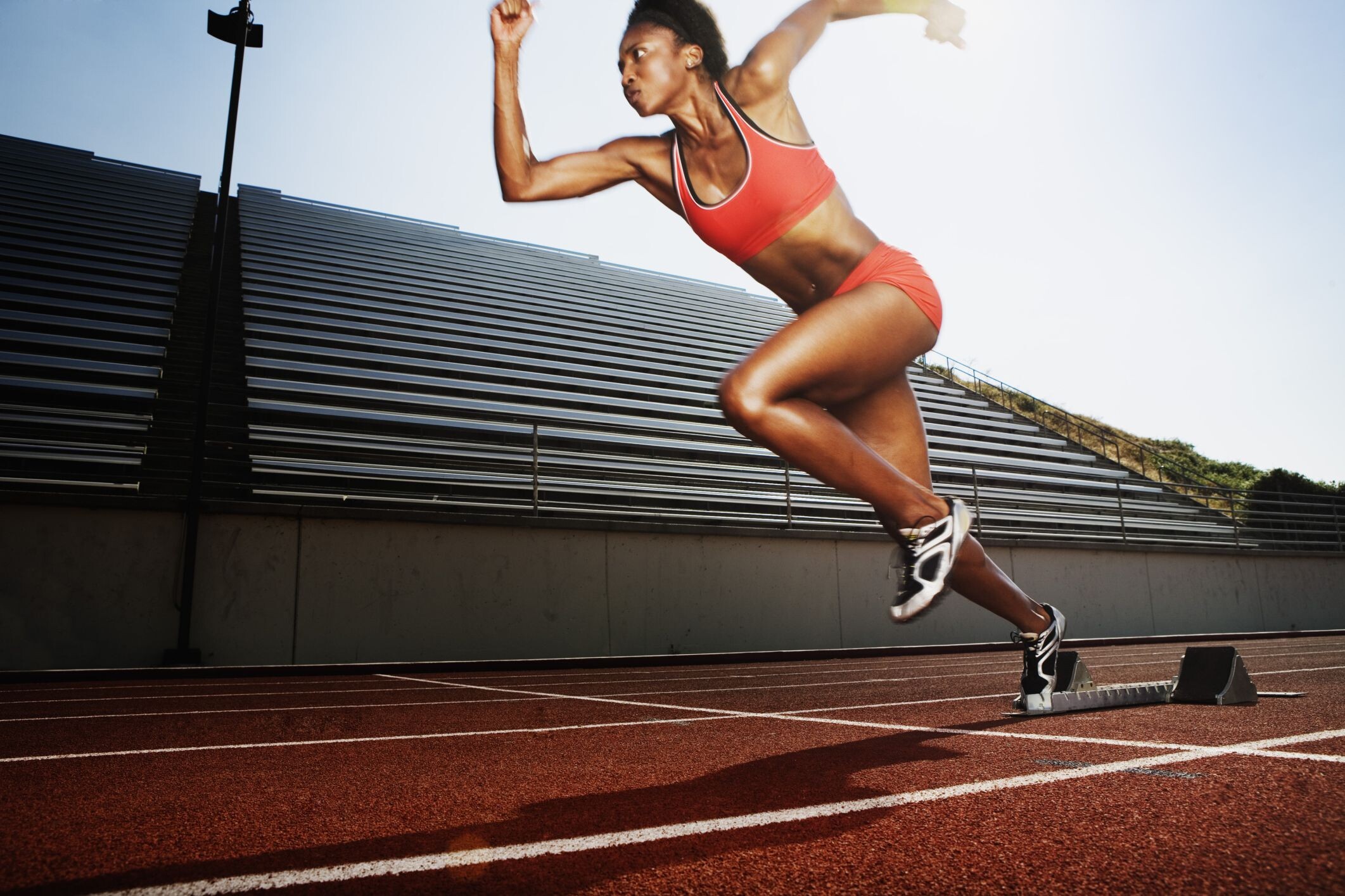
This workout is made up of multiple 30-second intervals with very short active recoveries to keep oxygen consumption high throughout the entire session. The first few intervals likely won’t feel too taxing, but the intervals will quickly start to add up so you’ll feel spent by the time the workout is complete.
Warmup: 10-15 minutes easy jog, followed by form drills and strides
Workout: 2-3 x (12 x 30 sec. with 15 sec. jog rest); 3 minutes jog rest between each set.
Cooldown: 10-15 minutes easy jog, followed by light stretching.
(10/29/2021) ⚡AMPby Brittany Hambleton
Cape Cod Marathon has been cancelled because of damage caused by the latest storms
Because of damage caused by the nor'easter, race officials decided to cancel the Mayflower Wind Cape Cod Marathon.
Events that were scheduled throughout the upcoming Halloween weekend are being cancelled.

"The town of Falmouth has experienced a major storm that resulted in severe loss of power, down trees and flooding," race officials wrote in a statement. "After discussion with town officials, it was determined for the safety of everyone involved that we cancel all events for the Mayflower Wind Cape Cod Marathon Weekend."
The organizers of the race chose to give away 200 gallons of soup they had ordered for the approximately 4,000 runners anticipated.
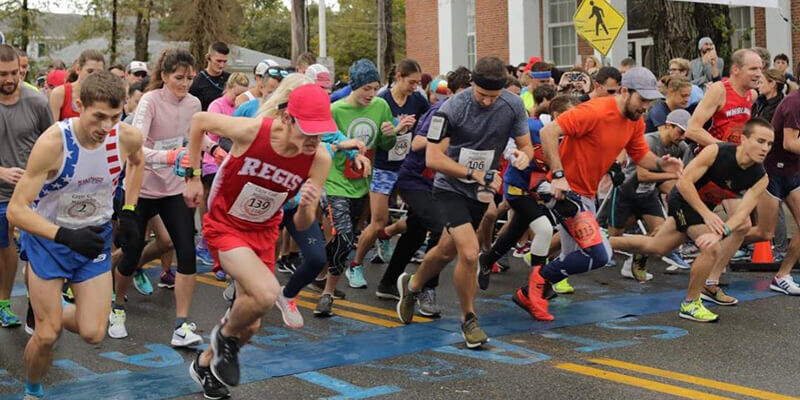
The unexpected giveaway at the Falmouth recreation center was a bright spot on a chilly day. "A lot of people don’t have power. On a cold day like this, honored to give out hot soup," one of the volunteers said.
"This is the first hot thing I’ve had all day," one of the recipients said.
Officials have not yet decided whether the events will be rescheduled.
"We have started discussions on what options runners will have and will let you as soon as possible," the statement also said.
(10/29/2021) ⚡AMPCape Cod Marathon
The one-loop course begins and ends at the Village Green in Falmouth center on Main Street, Falmouth, MA. The one-loop course begins and ends at the Village Green in Falmouth center. The first part is easy, the latter is a test. The people who do well on this course follow the following formula: Go out easy, take plenty... The first...
more...Jamaican athletics superstar Shelly Ann Fraser-Pryce has revealed she is eyeing Paris 2024
Jamaican athletics superstar Shelly Ann Fraser-Pryce has revealed that she is not done yet.
A string of sprinting successes in 2021 including a silver in the women’s 100m and a gold in the 4x100m at Tokyo 2020 have shown the 34-year-old that when it comes to competing, she’s still got more to give.

After following up her stint in Japan with a new personal best time of 10.60 posted at the Diamond League meeting in Lausanne Fraser-Pryce says she is not ruling out a run at Paris 2024:
"Before I counted it (Paris 2024) out, but then after the season and just the progress, you kind of know there's more," she told Sky Sports. “I’m looking forward to defending my (world) title at 2022 in Oregon."
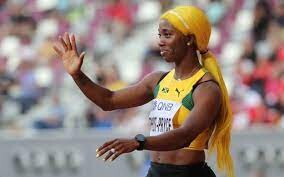
"After that season, you look again and you’re still feeling good then why not give it a shot? Paris 2024, I could definitely see it as a thing."
“I definitely think 10.50 is possible,” the eight-time Olympic medallist added. “I’m at the peak of my career.”
Though Florence Griffith-Joyner’s 100m world record of 10.49 seconds from 1988 still stands, there is a growing sense that it might soon be broken.
Reigning Olympic champion Elaine Thompson-Herah, like Fraser-Pryce, came close to the time at the Eugene Diamond League in late August. The double-double winning Jamaican clocked 10.54.
(10/28/2021) ⚡AMPby Chloe Merrell
Paris 2024 Olympic Games
For this historic event, the City of Light is thinking big! Visitors will be able to watch events at top sporting venues in Paris and the Paris region, as well as at emblematic monuments in the capital visited by several millions of tourists each year. The promise of exceptional moments to experience in an exceptional setting! A great way to...
more...Do’s and Don’ts of running in the dark
As the days get shorter, runners across the country will be spending an increasing amount of time running in the dark. This holds true whether you’re an early riser or if you prefer to put your miles in after work. Whether you’re hitting the streets before the sun comes up or after it goes down, there are a number of safety precautions you should take when running at times with limited daylight. Here are the do’s and don’ts of running in the dark.
Run against traffic: yes, you should be doing this all the time, but in the dark when it’s harder for drivers to see you, it becomes even more important for you to see them.
Run in well-lit areas: Running in areas without adequate street lights make it harder for others to see you, and more difficult for you to see obstacles that could cause you to fall and hurt yourself. Yes, the well-lit streets may be busier, but that also means they’re safer.
Wear bright or reflective clothing: Now is not the time to be wearing all black. Invest in a few bright shirts (think yellow, green, light blue and orange), wear a reflective vest or have at least one item of clothing that has reflective strips on it to make you more visible to drivers.
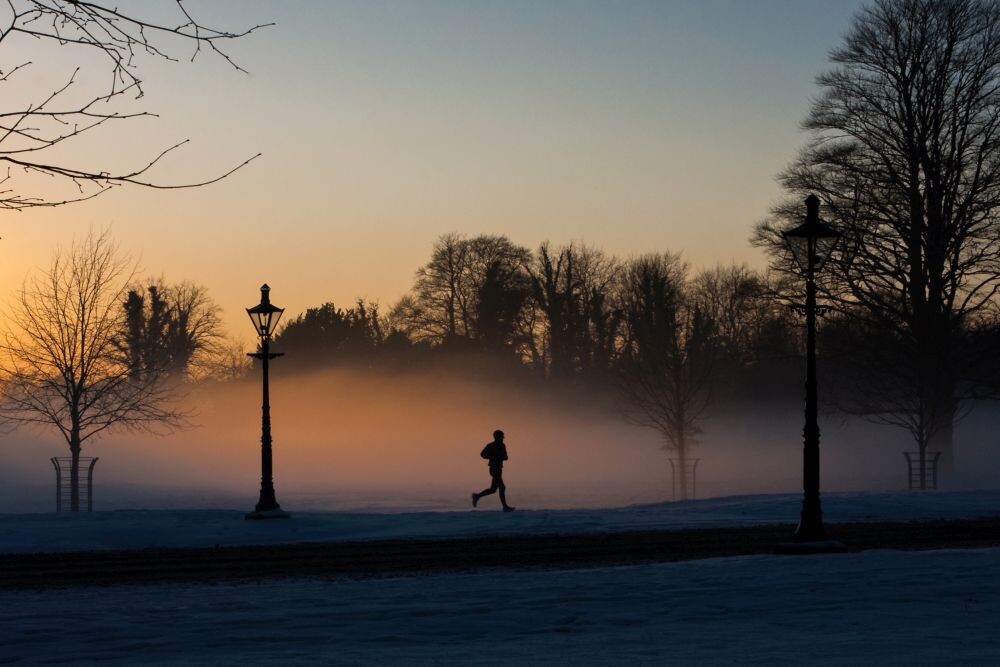
Use a headlamp or flashlight: No, they don’t look cool, but a headlamp or flashlight can save you from tripping on that crack in the sidewalk or slipping on the patch of ice you wouldn’t have otherwise seen.
Run with a friend: The other danger of running at night is that you’re more vulnerable to potentially dangerous or predatory individuals. There is safety in numbers, so now is a great time to join a running group or plan to run with a friend.
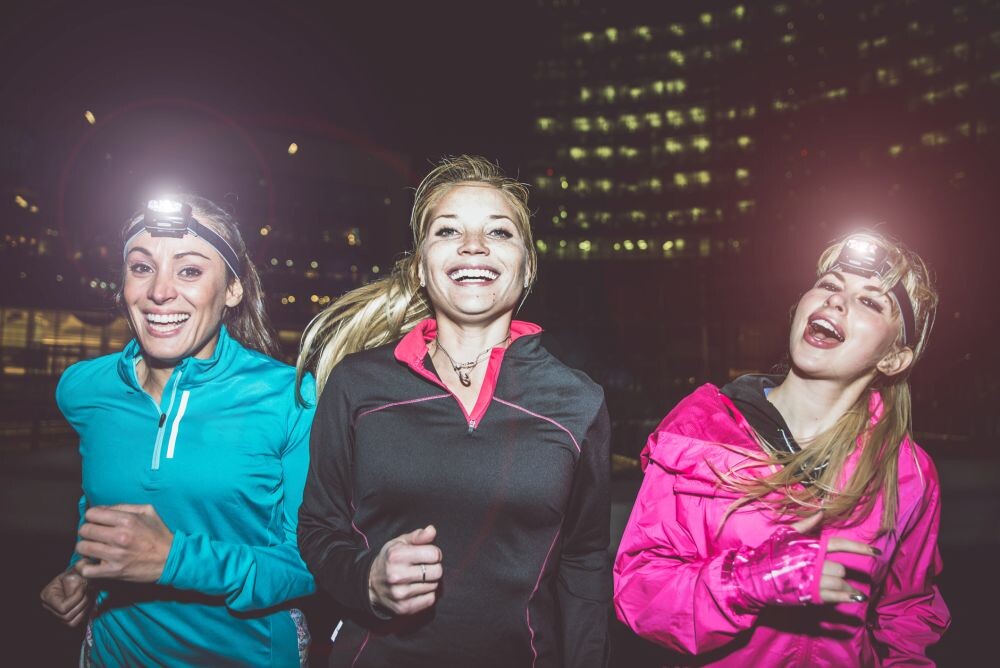
Ditch the tunes: Yes, music can be a great motivator and it’s hard to take the headphones off, but when it’s dark outside, it’s even more important that you’re aware of your surroundings so you can hear cars, bikes and other people coming. If you absolutely can’t run without music, make sure you keep the volume as low as possible so it doesn’t drown out everything else.
Don’t
Don’t run trails and other poorly-lit areas: Running alone on a quiet trail or side street may sound peaceful, but it’s not a great idea when it’s dark out. It’ll be more difficult to see roots or cracks in the pavement that could trip you up, and if something does happen, there is less of a chance that someone will be around to help you.
Don’t wear all black: See above.
Don’t choose an unfamiliar route: Exploring a new neighbourhood on your run is fun, but in the dark, you’re more likely to get lost or end up in unsafe areas. Stick to the routes you know well when it’s dark, and save the exploring for the weekends when you can head out in the daylight.
Don’t run in unpopulated areas: For the same reason as avoiding trails and poorly-lit areas, running where there are people around is safer in the early hours of the morning or in the evening.
Don’t not tell people where you’re going: It’s always a good idea to let at least one person know where you’re going before heading out for a run no matter the time of day, but particularly when you’re heading out in the dark.
Don’t leave your phone at home: Some of us like to use their runs as a chance to unplug and leave the tech at home, but when you’re going out in the dark, it’s best to take your phone with you, in case you run into trouble and need to call someone to come and get you.
(10/28/2021) ⚡AMPby Brittany Hambleton
Niagara elementary teacher, Jonathan Bradnam is a two-time cancer survivor running the New York Marathon
Jonathan Bradnam is no stranger to physical and mental adversity. The 34-year-old elementary school teacher from Welland, Ont. has beaten cancer not once, but twice, and returned to running the day after receiving radioactive iodine treatment for thyroid cancer. Since then, he has completed several marathons and is inspiring his students to get out and run, too. To celebrate the positive impact he’s had on his community, he was selected by TCS Canada to join five other teachers on Team TCS Teachers to run the New York Marathon on November 7th.
Bradnam ran off-and-on for several years but fell out of the habit when school, life and family commitments began to take over. In 2016, Bradnam was playing soccer when he noticed some discomfort. A visit to the doctor revealed that he had aggressive testicular cancer, and he had surgery the very next day. A follow-up scan one month later discovered that the cancer had spread into his abdomen, at which point he was sent to Princess Margaret Hospital in Toronto for treatment. He underwent three rounds of chemotherapy, after which the doctors declared him cancer-free and he was able to return to normal life with his wife and two children.
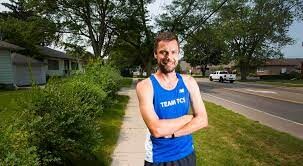
Two years later, at one of his routine check-ups, the doctors noticed a tumor in his throat, which turned out to be thyroid cancer. Bradnam had surgery in June 2018 to remove the tumour, followed by radioactive iodine treatment to kill any remaining cancer cells. He decided to get back into running there and then, and the very next day, he laced up his shoes.
“I saw a poster for a local race and decided to see if I could get back into some form of fitness,” he says. “I wanted to see if I could get back under 20 minutes for 5K, which at that point, I thought was a pretty lofty goal.”
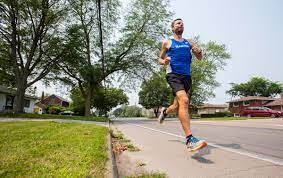
To his surprise, he accomplished that goal and began to gradually work his way up to longer distances. His first marathon was the 2020 That Dam Hill in London, Ont., where he won in an impressive 2:39:31, setting a new course record. This achievement is made even more remarkable by the fact that for several months during cancer treatment, neuropathy in his feet made it difficult for Bradnam to walk, let alone run.
“When your health is kind of taken away from you, you realize what you’re able to do and you stop taking your health for granted,” says Bradnam.
Bradnam is now an ambassador for the Rankin Cancer Run, and shares story and his passion for running with his students. He organizes a running club at school where he routinely has around 70 students arrive 45 minutes before school starts to run laps around the field, during which time they talk about building healthy habits and the benefits of regular physical activity.
In less than two weeks’ time, Bradnam will be standing on the start line of the 2021 TCS New York City Marathon, alongside five other Canadian teachers as a part of Team TCS Teachers. He was the top Canadian finisher last year in the virtual New York Marathon, and although he’s dealt with a few more aches and pains throughout his training this year, he’s excited to test himself at the in-person race.
“I definitely channel some of the negative experiences that I’ve had health-wise,” says Bradnam. “I tell myself ‘you’re suffering now but you’ve suffered a lot more in the past’. The suffering is going to be temporary, and I channel that to do things that I might not be able to do otherwise.”
(10/28/2021) ⚡AMPby Brittany Hambleton
TCS New York City Marathon
The first New York City Marathon, organized in 1970 by Fred Lebow and Vince Chiappetta, was held entirely in Central Park. Of 127 entrants, only 55 men finished; the sole female entrant dropped out due to illness. Winners were given inexpensive wristwatches and recycled baseball and bowling trophies. The entry fee was $1 and the total event budget...
more...Women´s 2018 flying Pig Marathon winner Caitlin Keen is the 2021 favorite
If all goes according to plan, the women's winner of the Cincinnati Flying Pig Marathon will celebrate with a cold beer and a burger at Zip's Cafe in Mount Lookout.
Sometime around 10:30 a.m. Sunday, after hurrying by the Halloween harriers, 29-year-old Caitlin Keen hopes to join the exclusive club of two-time winners of Porkoplis pride.
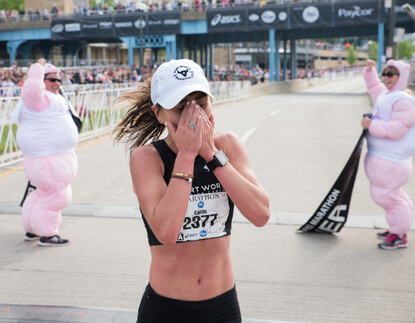
Keen, who spent her elementary school years in Hyde Park (St. Mary's), has been training in sweltering Fort Worth, Texas, and is looking forward to a Sunday morning start with a chill in the air.
She breezed to her first Flying Pig win in 2018, then was outkicked at the end of the 2019 race by Anne Flower to finish second the last time this race was run. Where most participants are happy to finish, Keen's eye is on the prize, even though her last marathon was in Feb. 2020 at the Olympic Trials.
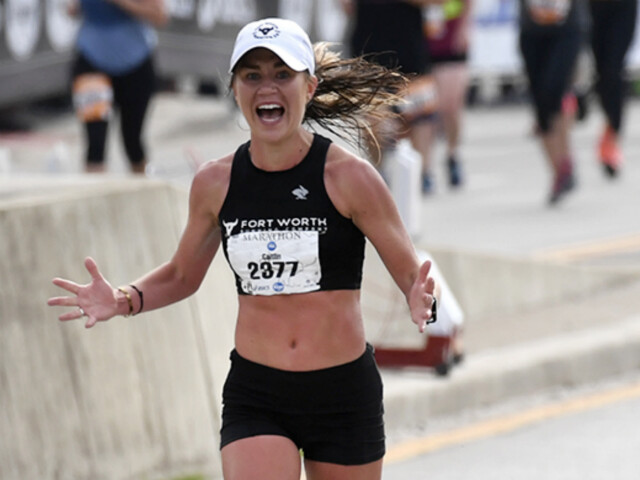
"I'm coming off of a lot of running without racing," Keen said. "I've been training all summer when it was hot. You're just dragging yourself through it, picking yourself up every day. I think it's probably going to be for my benefit. The weather looks pretty good."
In the previous 22 trots of 26.2 miles, there has only been a trio of female winners who have crossed "The Finish Swine" as champion twice. In the second and third years of the race, Becky Gallaher won in 2000 and 2001 back-to-back. Amy Robillard also went back-to-back in 2014 and 2015. Flower, the 2019 champ, is the most recent.
No autumn Flower
On a whim, Anne Flower put in a month's worth of training while working as an emergency room resident and won in 2016. The Anderson Township native, now a full-fledged doctor, repeated in 2019, which technically makes her defending champ since the coronavirus pandemic halted the "live" race in 2020.
Flower is skipping this year's Pig and running in a marathon in Indianapolis the following week. That leaves Keen, now a Fort Worth resident, as a heavy favorite.
Flower, who is hoping to get a PR on a fast course at Indy Nov. 6, is gravitating toward longer races having recently competed out west in events at Moab, Crested Butte and Pike's Peak.
"I've started running ultra marathons in the past few years and have had similar success," Flower said. "Marathon distance is starting to feel too short and fast for me to keep up!"
She plans on cheering this weekend and points toward Keen, whom she outdueled in 2019 as a runner to watch.
"Caitlin Keen is super fast!" Flower said. "Cincinnatus Elite and Columbus Running Company Elite also have very talented teams. Of course, there are always the 'not yet known' runners who could perform well and finish first."
(10/28/2021) ⚡AMPby Scott Springer
Cincinnati Flying Pig Marathon
This beloved race found it's name from Cincinnati's pork history which dates back to the early 1800's. Cincinnati is also known as "Porkopolis."Our weekend line up of events are designed to welcome athletes of all abilities from the Diaper Dash to the full Marathon and everything in-between, we truly have something for everyone. We even added a dog race several...
more...Running Doesn’t Wear Down Your Cartilage, It Strengthens Your Joints
Numerous studies have shown that, contrary to what your sedentary friends may sometimes argue, running does not cause arthritis. New research shows, in fact, that running may actually help strengthen your joints against future wear and tear, says Jean-Francois Esculier, leader of research and development for The Running Clinic (headquartered near Montreal, Canada) and a medical professor at the University of British Columbia.
In a Sept. 3 paper in Sports Medicine, Esculier’s team examined 43 studies that had used MRI to measure the effect of running on cartilage.

One major finding of these studies, he says, was that the impact from running squeezes water out of cartilage and into the underlying bone. That means that an MRI taken immediately after running will show a decrease in cartilage thickness.
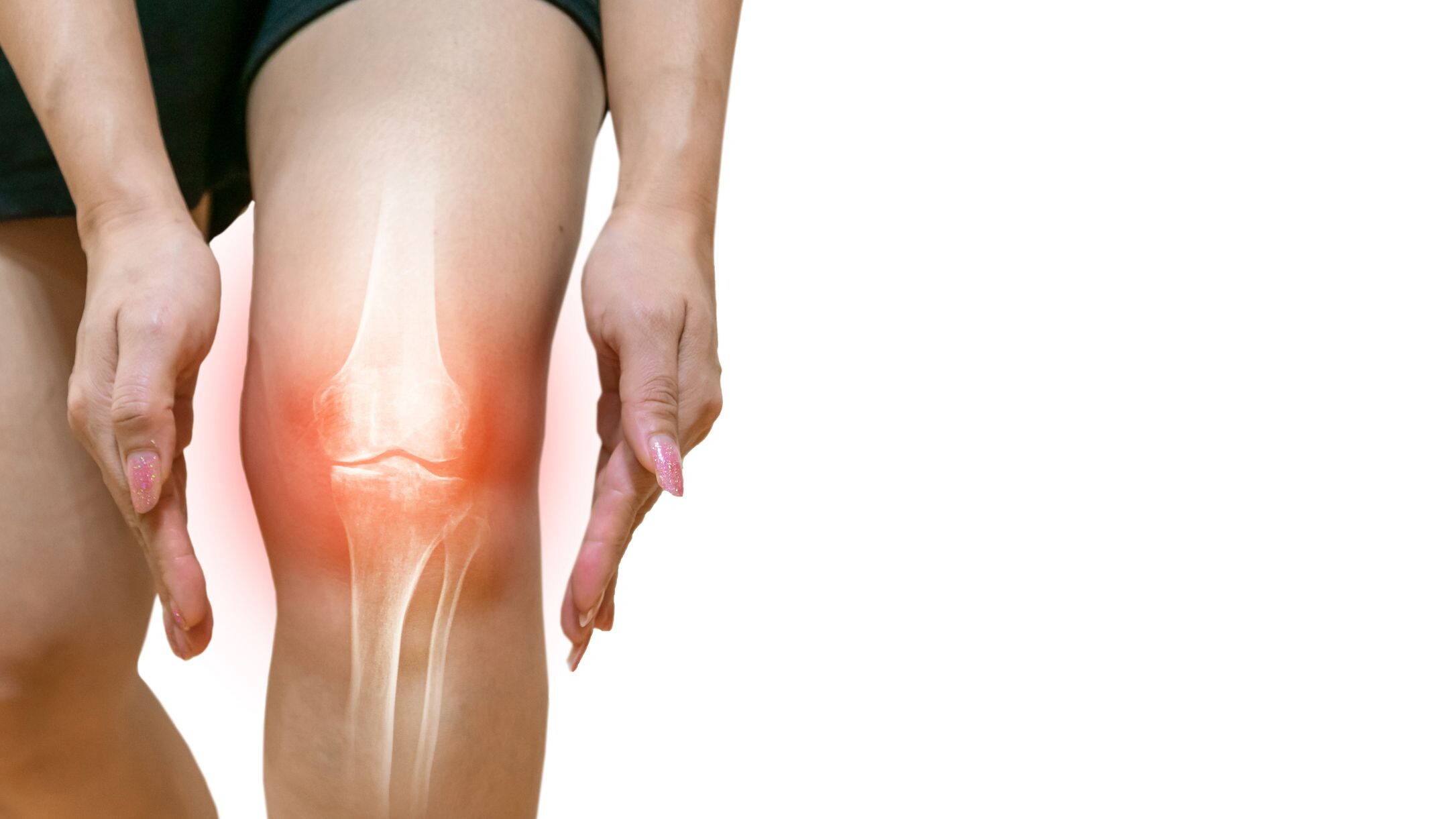
So, Esculier says, “If you want to say running is bad, you can show a study that shows it reduces the thickness of the cartilage.”
But the effect is transient and harmless, he says, because the moment you finish your run, the cartilage begins to reabsorb water and expand back to normal. “It only takes an hour,” he says.
In fact, he says, running may actually be beneficial.
Historically, Esculier says, doctors, researchers, and runners were taught that cartilage simply is what it is, and won’t respond to training.
“But we now know that cartilage can adapt,” he says. “Even with novice runners, after only 10 weeks, you see changes in cartilage so that it can actually tolerate more load.”
What’s happening, he says, is a side-effect of having fluid squeezed out of the cartilage into the underlying bone. When it comes back, he says, it brings with it nutrients that feed the cartilage and make it stronger.
“So not only is running not bad for your joints, it’s actually good for your joints,” he says.
It isn’t just beginners whose joints can strengthen with use. Studies of more experienced runners, he says, suggest that they have developed cartilage that is more resistant to the type of impacts seen in running than that of non-runners.
One of the more dramatic studies looked at competitors in the TransEurope FootRace, a 4,486-kilometer mountain run (2,787 miles) that went from Sicily to northern Scandinavia in 64 days. A team of scientists followed the runners, using a portable MRI to assess them every 900 kilometers or so. Amazingly, Esculier says, they found not only that the competitors didn’t have cartilage damage, but that their cartilage adapted during the race.
“So, even with highly experienced trail runners and lots of volume, we shouldn’t be scared, because the body can adapt very well,” he says.
Cartilage Strengthening Caveats
There are, of course, caveats for those whose joints are already damaged, whether by traumatic injury or bad genetics.
The biggest caveat is that there is very little research on what people with existing arthritis should or shouldn’t do. “Our group is the only group so far that has conducted a study in people with arthritis,” Esculier says. And even that research is only preliminary, with final results not expected for several years.
Meanwhile, his preliminary work has examined women runners in their mid-fifties, some with arthritic knees and some without, using MRI to see how their cartilage reacts and recovers. The main finding so far Esculier says, is that you need to listen to your body. If it hurts, adjust your recovery time accordingly.
What do “if it hurts” and “adjust your recovery time accordingly” mean? Unfortunately, there’s no easy answer. Physical therapist Jay Dicharry says that you can run if pain stays between a 1 to 3 on a 10-point scale, and you have zero increase in swelling, and no limp. “You can try that for a few weeks and then bump up slightly,” he says “And then maybe add in some speed or hills run and see how it does.” But you still need to be aware of situations that will put undue stress on your joints. Dicharry says, for example, “I’d for sure limit downhill running in someone with advanced or even moderate osteoarthritis until they earn the joint control needed to ensure the loads on the knee are inside the healthy range.”
Laura Matesen Ko, an orthopedic surgeon and triathlete from Seattle, Washington, says that she has often seen runners, cyclists, “and even stair-climbing champions” who have managed not just to keep going, but to slow the progression of their arthritis enough to retard what would normally be the need for a hip or knee replacement. She too tells them to listen to their bodies, vague as that recommendation might seem. If your body says “maybe not today,” you really need to listen to it.
Supporting Strength
Matsen Ko adds that it’s also important to work on strengthening the muscles supporting your knee (or any other arthritic joint). Dicharry is adamant on this point as a prerequisite for creating the conditions for cartilage rebuilding.
“You need to find out what type of pain-free range exists, and then work to use your pain-free range as a way to compress/decompress/glide your surfaces,” he says. “That may be through targeted exercises. It may be through more advanced exercises. And once a joint can tolerate the positions it will see with running, you need to increase the speed of loading to ensure the fast loading times seen in running are ok. And then, yes…..you can compress/decompress/glide joints through running.”
Matsen Ko adds, it might help to prioritize your running to emphasize quality, rather than quantity. “Do the track and tempo work,” she says, “but perhaps do the ‘junk miles’ on an elliptical or in the pool, instead of in running shoes.”
To help the strengthening process work, Esculier adds, you should also go sparingly on ibuprofen or other anti-inflammatory medications. The inflammation that causes pain is part of what signals the body to repair, rebuild, and (hopefully) strengthen, so shutting it off prematurely also shuts down the strengthening process.
Not that any of this is a guarantee of an outcome like Seibel’s. Esculier’s larger follow-up study won’t be finished for another 3-4 years.
But, he told me, “If you ask me clinically what I would do with patients like you, I’d tell them they have two choices.” One is to do as my orthopedist suggested and limit running as much as possible. The other is to cautiously see what you can do, in the hope of not only having a bit of running fun, but making the remaining cartilage stronger.
(10/27/2021) ⚡AMPby Richard A. Lovett
Remembering Dos Pueblos High’s 24-Hour Relay Record
In 1972, 10 Distance Runners Completed 1,106 Laps, or 276 Miles
Starting at 10 a.m. on June 9, 1972, Gil Rocha ran a mile, four laps around Dos Pueblos High’s 440-yard track, in five minutes and four seconds. He carried a baton that he handed to Tom Phillips, who also ran a mile, in 4:53. The baton was passed to eight more runners — Dale Nickel, Joe Szerwo, Joe Lambert, Tom Kelsey, Craig Bjorkman, Carl Udesen, Mark Pruner and Doug Hopwood, who finished his mile at 10:49 a.m.
Then it was Rocha’s turn to run again, starting another cycle of miles by the 10 DP distance runners. And so it went for the rest of the day and through the night — with Phillips and Lambert consistently cranking out sub-5:00 miles — until exactly 10 a.m. the next day, as Nickel was rounding the final turn of the team’s 1,106th lap.
The Chargers had run 276 miles, 769 yards — the distance from Goleta to San Jose — breaking the high school record in the Runner’s World 24-Hour Relay. The previous record was 271 miles, 1,217 yards — established in 1971 by a DP team that included nine of the boys who ran in 1972.
“It was the hardest thing we’d ever done,” Hopwood said, “and we did it again.”
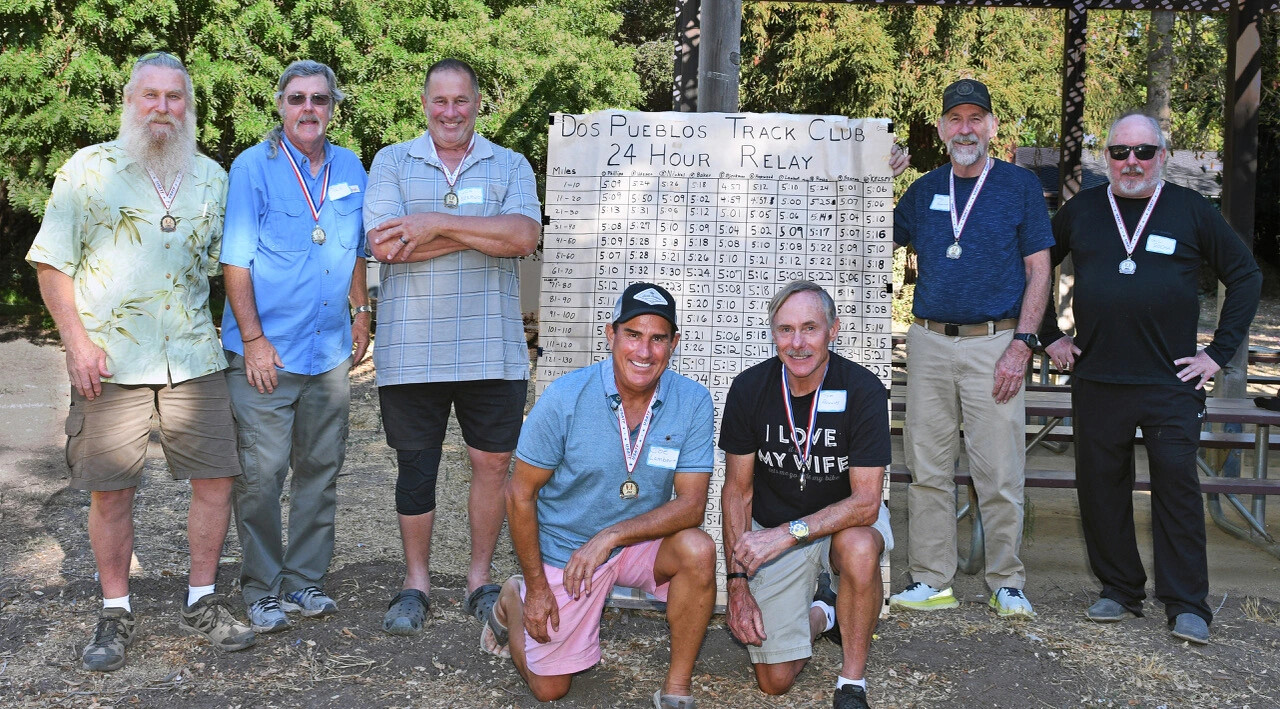
Kelsey read about the 24-hour relay in Runner’s World magazine and convinced his teammates that they should go for the prep record at the end of the school year when all were in shape from the track season. They were well trained by their coach, Gordon McClenathen. (The 24 Hour Relay was created by RW founder Bob Anderson. Teams from around the world ran the relay.)
“He taught us all about commitment, hard work that pays off, and so much more,” Phillips said. “I know that I speak for all of us when I say that those life lessons we got from Gordon have gone with each and every one of us as we went our separate ways, and made us the men we are today.”
Assistant coach Bill Trimble arranged a reunion of the men with McClenathen, a runner himself for most of his 87 years, at Stow Grove Park last month. Phillips said the event “rekindled the comradeship we had 50 years ago.”
It also brought back memories of those long, sleepless days and nights of running in circles. “It seemed like my eyes were closed for five minutes before I had to go out again,” Rocha said. Bjorkman recalled that after the 1971 relay, which went from noon to noon, “I went to bed at 2 p.m. and woke up at 8 the next morning” — an 18-hour nap.
Parent shone headlights on the track at night. To Nickel, the uneven track was like a moonscape. “I saw the tops of asphalt bumps,” he said. McClenathen timed every mile while also massaging cramps out of the runners’ legs. June 10, 1972, was the last day of school, and that morning the track was lined by students and teachers who shouted encouragement to the tiring runners, most of whom put in 28 miles. “I’m sure that contributed to the adrenaline they needed to finish the relay,” Trimble said.
The Dos Pueblos record still stands, as far as anyone knows. The 24-hour relay proved too daunting to engender repeated attempts. It has gone the way of the Pony Express, a heroic endeavor from another time.
(Photos) THEN AND NOW: Ten runners from Dos Pueblos High posed after setting a national 24-hour relay record in 1971 (top photo). Standing: Dale Nickel, Craig Bjorkman, Joe Szerwo, Doug Hopwood, Terry Baker, and Gil Rocha. Kneeling: Tom Kelsey, Joe Lambert, Tom Phillips, and Carl Udesen. They set a new national record a year later. Seven of them got together recently for the 50th anniversary of their feat (left to right): Nickel, Kelsey, Szerwo, Lambert, Phillips, Hopwood, and Rocha. |Credit: Paul Shanklin
(The third photo was added to this story by MBR. "I put together the 24-Hour Relay Handback in August 1970," says Bob Andetson. "0ur team ran the first one in 1970 at Foothill College in Los Altos Hills California. My editor, Joe Henderson also was on our team. It was such an amazing experience. One I will never forget."
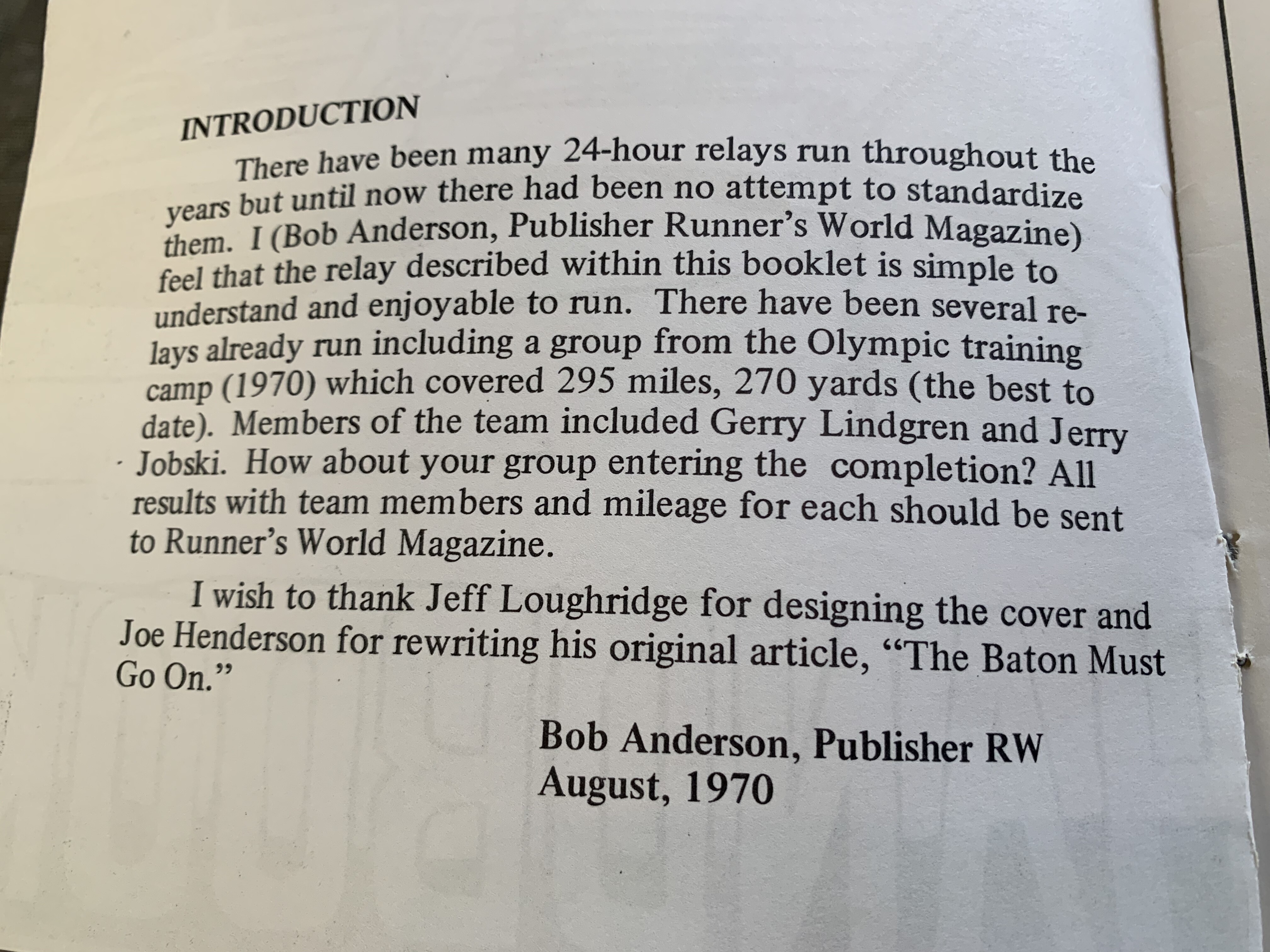
The official rules are simple: 2-10 person teams. Each person has to run one mile on track and pass the baton to the next person. Order must be maintained. A person can drop out but not return. Distance of last runner after 24 hours is measured.
(10/27/2021) ⚡AMPby John Zant (Independent.com)
Celebrities running 2021 TCS New York Marathon
New York Road Runners (NYRR) has announced its celebrity lineup for the 50th running of the TCS New York City Marathon on November 7. The marathon annually attracts big names across sports, entertainment, music, fashion and lifestyle.
The marathon’s golden celebration will bring together former US Women’s National Soccer Team teammates with Olympic gold medalists Abby Wambach, Lauren Holiday, Kate Markgraf and Leslie Osborne running and supporting the JLH Fund. Other leading athletes include New York Giants former running back Tiki Barber, returning for his seventh New York City Marathon.

Many renowned and recognized luminaries run to support and raise funds for charitable causes. Mumford & Sons band member Marcus Mumford will run for Children in Conflict and his bandmate Ben Lovett will support the Robin Hood Foundation.
Tony-award winning and Grammy-nominated actress Kelli O’Hara will also support a meaningful cause by running for Cancer Support Community. Additionally, she will perform the US National Anthem prior to the men’s open professional race.
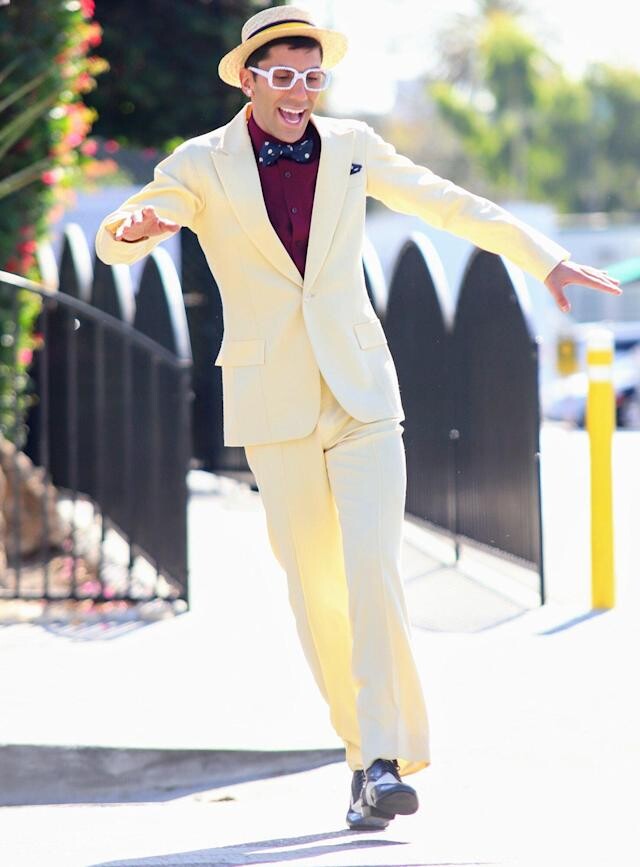
Television anchors and personalities will take on the 26.2-mile course including TODAY Show and Morning Joe co-host Willie Geist running in support of the Michael J Fox Foundation and Good Morning America’s Will Reeve running in support of the Reeve Foundation. In addition, producer and host of MTV’s Catfish: The TV Show Nev Schulman will run in his fourth New York City Marathon.
Many stars of Bachelor Nation will hit the streets including friends Matt James and Tyler Cameron who will be running together for the Andrea Cameron Foundation. The Bachelorette’s Tayshia Adams will run in her first-ever marathon after her fiancé, Zac Clark, introduced her and shared his love of running as he takes on his seventh New York City Marathon on behalf of Release Recovery.
Legendary fashion model Christy Turlington will make her return 10 years after running in her first New York City Marathon, representing her charity, Every Mother Counts. Additionally, Shoe4Africa will have model and actress Kristine Froseth running to support its worthy cause.
The full list of notable runners in this year’s marathon includes:
Abby Wambach – Olympic gold medalist and FIFA World Cup champion; supporting JLH Fund
Ben Lovett – Mumford & Sons; supporting Robin Hood Foundation
Christy Turlington – Model; supporting founder of Every Mother Counts
CJ Hobgood – ASP World Championship surfer
Daniel Humm – Chef and owner of Eleven Madison Park/Make It Nice
Kate Markgraf – Olympic gold medalist and general manager of U.S. Women’s National Soccer Team; supporting JLH Fund
Kelli O’Hara – Broadway and Tony award-winning actress; supporting Cancer Support Community
Kristine Froseth – Model and actress; supporting Shoe4Africa
Lauren Holiday – Olympic gold medalist and FIFA World Cup champion; supporting JLH Fund
Leslie Osborne – Olympic gold medalist; supporting JLH Fund
Marcus Mumford – Mumford & Sons; supporting Children in Conflict
Matt James – The Bachelor; supporting ABC Food Tours and Andrea Cameron Foundation
Nev Schulman – Host of MTV’s Catfish: The TV Show; supporting NYRR Team for Kids
Nicole Briscoe – ESPN SportsCenter anchor
Ryan Briscoe – Professional race car driver
Tayshia Adams – The Bachelorette; supporting World Vision
Tiki Barber – NY Giants legend, host of Tiki & Tierney; supporting NYRR Team for Kids
Tyler Cameron – The Bachelorette; supporting Andrea Cameron Foundation
Will Reeve – Good Morning America; supporting Reeve Foundation
Willie Geist – TODAY Show, Morning Joe co-host; supporting Michael J. Fox Foundation
Zac Clark – The Bachelorette; supporting Release Recovery.
(10/27/2021) ⚡AMPby AIMS
TCS New York City Marathon
The first New York City Marathon, organized in 1970 by Fred Lebow and Vince Chiappetta, was held entirely in Central Park. Of 127 entrants, only 55 men finished; the sole female entrant dropped out due to illness. Winners were given inexpensive wristwatches and recycled baseball and bowling trophies. The entry fee was $1 and the total event budget...
more...Pacers of Flying Pig Marathon are ready to help participants reach their goals
Thousands of people will be running the Flying Pig Marathon this weekend and will have help available to help them reach their race goals.
“The Pig is my favorite race in the whole world,” explains ultra-marathon runner and Flying Pig pacer Harvey Lewis, “Honestly it is an iconic event. Where else do pigs fly? And you’ve got all these people out cheering people along.”
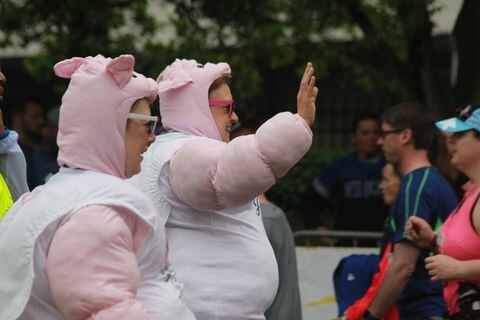
Lewis is one of the famous Flying Pig Marathon streakers which means he has run every Flying Pig Marathon dating back to the first in 1999.
Lewis is also part of the pace team, coordinated by Chris Cavanaugh.
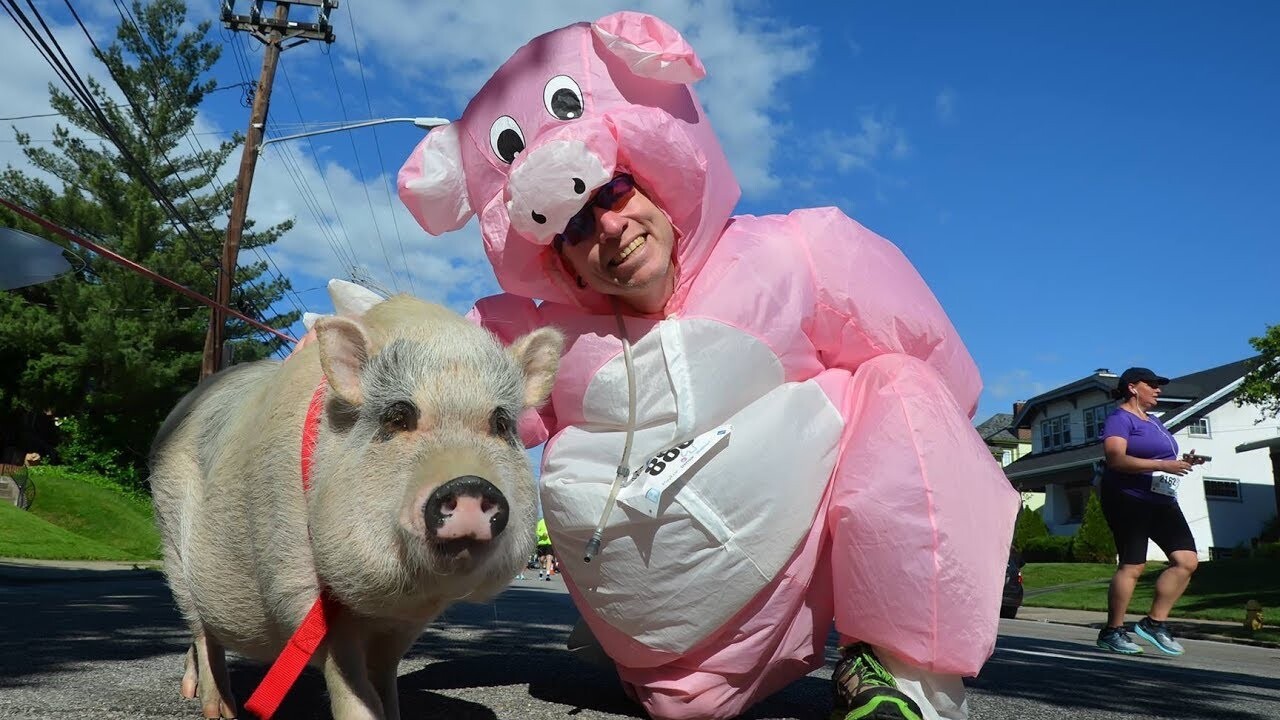
“Our job is to help you execute a smart race,” explains Cavanaugh. “We’ve made all the mistakes already, so if you want to run a smartly executed race, you have a time goal for four hours, three and a half hours, link up with one of our teams and they’ll kind of help take you through it. There’s enough stress in a race already, you put in all the work, and you want to execute, and we can help you do that.”
“I’m psyched about the opportunity,” says Lewis who is leading the 4:45 marathon group, “Having a chance to share that with others. I get so much more from this race, by doing that, than I would by racing at my very fastest.”
Cavanaugh will also run the Flying Pig Marathon just 20 days after he ran the Boston Marathon.
In an unusual year, that is normal.
The Boston Marathon is traditionally the third Monday in April, and the Flying Pig Marathon is the first Sunday in May.
“The Pig is kind of a celebratory run,” explains Cavanaugh, “You’ve done the work so as long as you can recover fairly well, you’ve got a couple of weeks to do that, and you can turn around and do both.”
Lewis, a Cincinnati School for Creative and Performing Arts school teacher, is back from breaking a world record at the Big Dog’s Backyard Ultra Run in Tennessee.
Lewis received many hand-written notes of support from his students at the Cincinnati School for Creative and Performing Arts.
Now, it’s his turn to pay it forward and help the runners on Sunday reach their own goals.
You will have a chance to meet the pacers at the Flying Pig Marathon expo Friday and Saturday.
The hours are 12 p.m. to 7 p.m. on Friday and 10 a.m. to 4 p.m. on Saturday.
On race day, just look for the pink balloons and big signs that say what time the pacers are representing.
(10/27/2021) ⚡AMPby Ashley Smth
Cincinnati Flying Pig Marathon
This beloved race found it's name from Cincinnati's pork history which dates back to the early 1800's. Cincinnati is also known as "Porkopolis."Our weekend line up of events are designed to welcome athletes of all abilities from the Diaper Dash to the full Marathon and everything in-between, we truly have something for everyone. We even added a dog race several...
more...Build pain tolerance and discomfort with stretch intervals
You may have heard others say that running never gets easier, you just get better and can therefore push yourself harder. For this reason, one of the cornerstones of improving running performance is learning how to handle discomfort. Building pain tolerance is just as mental as it is physical, and there are many ways to improve it.
Stretch intervals challenge you to pay close attention to your effort level and the gradual increase in pace builds pain tolerance by forcing you to speed up as fatigue starts to set in.
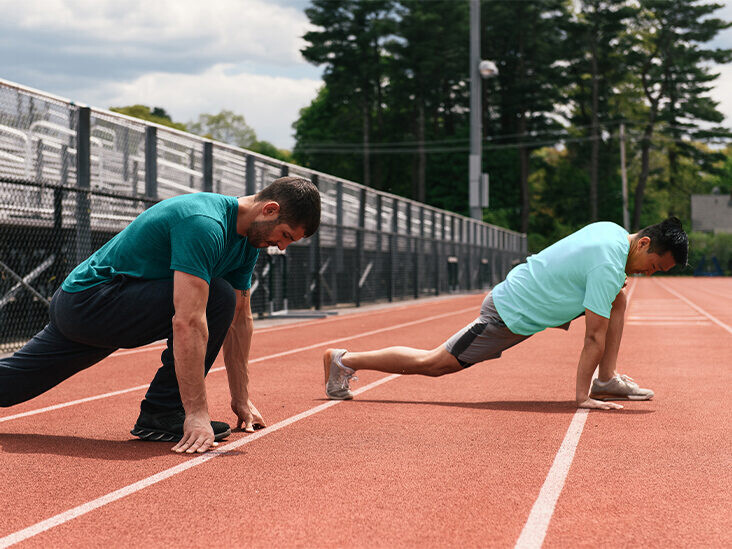
What are stretch intervals?
Stretch intervals can be applied to almost any workout, and the concept is simple: run a series of fast intervals, trying to cover a little more distance with each interval. This means you have to choose your pace wisely at the beginning of the workout: if you start out at your top speed, you have nowhere to go from there. On the other hand, you don’t want to start out too slow because this defeats the purpose of the workout. To do this session properly, your first interval should be hard, and your last one or two should be an all-out effort.
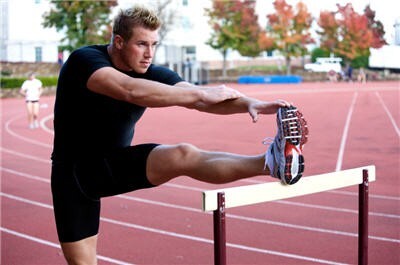
Stretch intervals work really well as a hill workout or any interval session that can be completed on straight, flat road or even a track. A GPS watch will help you determine how much ground you’re covering with each interval, but for a less high-tech approach, you could simply bring markers to drop and pick up as you jog back to the starting point. Here are a couple of examples:
Interval workout
Warmup: 10-15 minutes easy jog, followed by form drills and strides
Workout: 5-6 x 2 minutes, progressively getting faster, with 3-4 minutes rest (as you jog back to your starting point)
Cooldown: 10-15 minutes easy jog, followed by light stretching.
Hill workout
For this workout, find a hill with a moderate incline that you can run up for at least a couple of minutes. Carry two easily visible markers, like brightly coloured socks or mittens, and on your first interval, drop one marker when you reach the end of the interval to mark your spot. Jog back to the bottom and repeat, dropping the second marker when you reach the end of the second interval, and pick up the first as you jog back to the bottom to use for the next one. Continue this process for the duration of the workout.
Warmup: 10-15 minutes easy jog, followed by form drills and strides
Workout: 8-10 x 1 minute, gradually increasing the pace; jog back down the hill as your rest (about 2 minutes)
Cooldown: 10-15 minutes easy jog, followed by light stretching.
(10/27/2021) ⚡AMPby Brittany Hambleton
Nairobi Marathon introduces virtual run event
The week-long virtual run kicked off on Monday ahead of the Standard Chartered Nairobi Marathon proper this Sunday on Nairobi's Southern Bypass.
Thika, Kisumu, Kakamega, Nakuru, Kitale, Siaya, Eldoret, Kericho, Mombasa, Meruand Nanyuki are among the towns segmented for participants to join other runners for the virtual run.
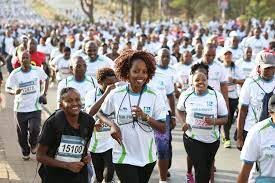
In Nairobi, participants are expected to converge in the green spaces including Sanctuary, Karura and Arboretum.
The virtual marathon targets 13,500 participants as organisers seek to encourage active lifestyles while the physical marathon will be limited to 2,500 elite runners.
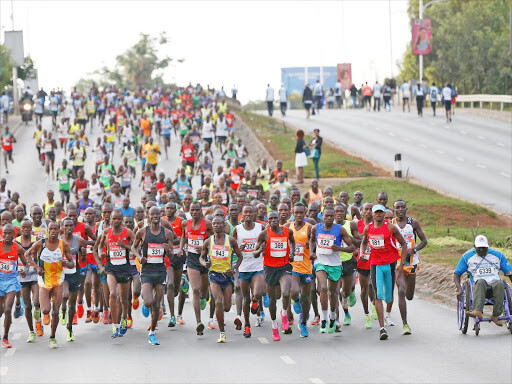
Standard Chartered Bank-Kenya CEO Kariuki Ngari, said: “We are excited to be running here today for the virtual marathon.
"The registration is still open, and I urge Kenyans to register and be part of the marathon.
"They can participate virtually at their own space and time and be part of physical marathon dependent with their qualification time.”
Participants will be required to sign up for the challenge either in 5Km, 10km, 21km, 42km or 42km relay.
The chairman of the Local Organizing Committee Peter Gitau said: “The kit collection exercise is still ongoing. For participants in Nairobi, they can pick their kit at KICC.
"For the ones across the country, they will be delivered at our offices across the country. For the international participants, we have partnered with DHL to have them delivered."
(10/26/2021) ⚡AMPby Evans Ousuru
NAIROBI MARATHON
Nairobi Marathon is an annual road running competition over the marathon distance held in October in Nairobi, Kenya. First held in 2003, the competition expanded and now includes a half marathon race along with the main race. It was part of "The Greatest Race on Earth", fully sponsored by Standard Chartered Bank....
more...The 2021 ASICS Falmouth Road Race Raised $4.75M for Charity
Organizers of the 49th annual ASICS Falmouth Road Race, one of America’s premier running events, helped over 160 nonprofits to raise $4.75 million at its August race for Massachusetts-based nonprofit organizations — including $486,113 for eight Falmouth-based nonprofits — through its Numbers for Nonprofits program (NFNP).
“We’re incredibly proud of our charity program,” said Scott Ghelfi, president of the Falmouth Road Race board of directors. “Despite this year’s limited in-person field capacity, the program still delivered in a big way thanks to both those charity runners who participated in-person and in the At-Home Edition, the virtual component of the race. It’s awesome when you think of all the good work the road race is able to facilitate.”
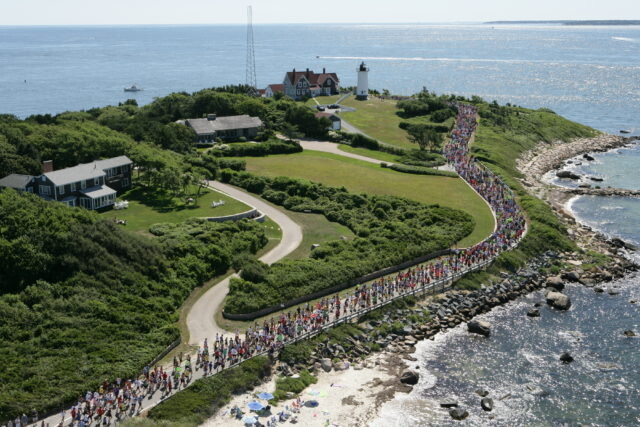
Compassionate Care ALS (CCALS), the top Falmouth-based fundraising team, employed a unique approach for their fundraising in 2021. Survivor Fans vs. Bachelor Fans were encouraged to choose a side to compete on to raise funds for the organization that supports those who are diagnosed with ALS, their families, health care providers, and communities as they navigate the complexities associated with the disease. Former runner-up Chris Lambton from Season 6 of The Bachelorette – whose mother Marjorie received help from CCALS – headed up The Bachelor squad, while three-time Survivor contestant Jonathan Penner led the Survivor side in honor of his wife Stacy who recently passed away from ALS in January 2021. The CCALS fundraising results were the best to date: 111 runners raised $355,581 to benefit the organization’s mission.
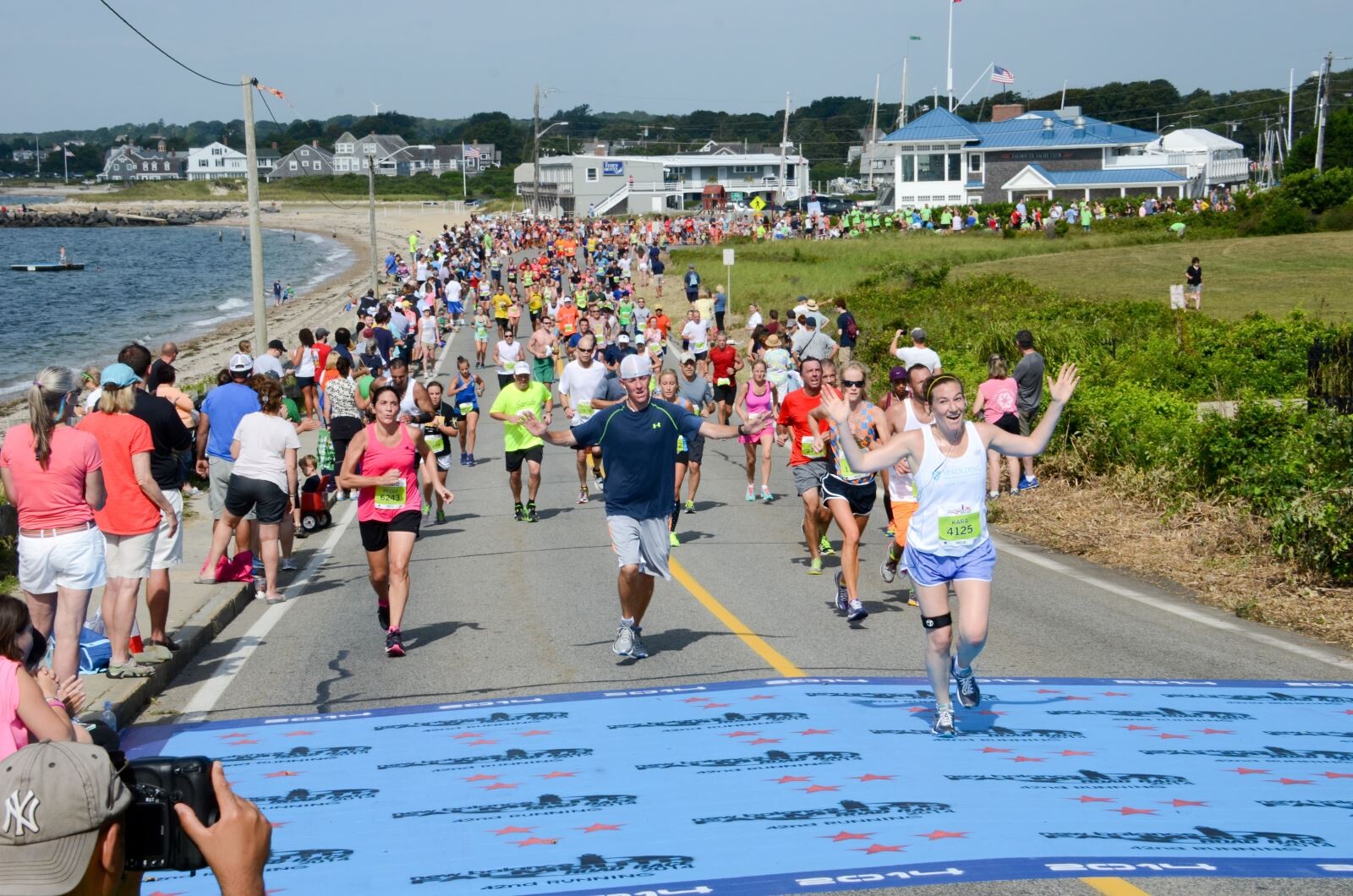
Funds raised in 2021 brings the NFNP total to $50 million raised since the program’s inception in 2000.
For more information or to apply for a spot in the 2022 NFNP program, visit www.falmouthroadrace.com. Follow us on Facebook or at @falmouthroadrace on Instagram. The 2022 application closes on October 31, 2021.
About the Numbers for Nonprofits program: the Numbers for Nonprofits has grown exponentially over the years to include more than 300 different MA-based charity teams since 2000 and over 3,000 runners per year who commit to fundraise and then run the 7-mile course. Each year, the race provides guaranteed entries, with an extended registration deadline, to select Massachusetts-based charities. The charities then recruit runners who solicit donations for them.
About Falmouth Road Race, Inc.: The Falmouth Road Race was established in 1973 and has become one of the premier running events of the summer season. Each year the race draws an international field of Olympians, elites, and recreational runners to enjoy the iconic 7-mile seaside course. The non-profit Falmouth Road Race organization is committed to promoting health and fitness through community programs and philanthropic giving.
(10/26/2021) ⚡AMPby Running USA
Falmouth Road Race
The Falmouth Road Race was established in 1973 and has become one of the premier running events of the summer season. Each year the race draws an international field of Olympians, elite runners and recreational runners out to enjoy the scenic 7-mile seaside course. The non-profit Falmouth Road Race organization is dedicated to promoting health and fitness for all in...
more...The do’s and don’ts of post-marathon recovery
With just a few races left on the calendar, the fall marathon season is beginning to wind down. Runners across the country have spent the last few months training for their goal races and now there’s one thing left to do: recover.
What you do (and don’t do) in the hours and days after your marathon is just as important as your training to ensure you can recover properly to avoid injuries and of course, to do it all again! If you’ve already finished your goal marathon, keep these do’s and don’ts in mind for next time, and if yours is still upcoming, follow this advice to ensure you recover well after your big effort.
Do’s

Hydrate: This should be your first priority when you cross the finish line. After a marathon, you need to not only drink water, but to replace the electrolytes you lost during the race. In fact, most experts suggest consuming 24 ounces (700ml) of liquid for every pound of body weight lost, and one gram of sodium for every litre of water you drink. So if you lose one pound during your marathon, you’ll need 700ml of water and 700mg of sodium.
Eat a recovery meal: You may not feel like eating immediately after you cross the finish line, but it’s important to at least have something small as soon as possible. Once your stomach has settled, you should aim to eat a well-balanced meal that contains a mixture of carbohydrates, fat, protein and micronutrients.
Walk: Or do some other form of gentle activity. As tempting as it is to just sit down and not move, you’re better off doing some light, easy movement, like a slow walk, for about 30 minutes after the race to allow your heart rate to return to normal and to keep your blood flowing through your muscles to help clear lactic acid and kick-start the recovery process.

Don’ts
Drink too much: Alcohol, that is. Of course, you’re going to want to celebrate your accomplishment, but alcohol can negatively impact your muscles’ recovery process. On top of that, many runners make the mistake of switching to beer before they’ve fully rehydrated after the race. Since alcohol is a diuretic, drinking too much before you’ve had enough water and electrolytes can dehydrate you even further. This doesn’t mean you can’t have a couple of cold ones to celebrate, but make sure you prioritize proper hydration and post-race nutrition first, then drink in moderation after.
Limit your food intake: You’ll be taking some time off running after your marathon is complete, but this doesn’t mean you should be cutting back on how much you’re eating. Your body is going to be in recovery mode for several days or even weeks, and it needs calories and nutrition in order to repair itself. If you find your appetite is suppressed in the days following a marathon, make sure you take advantage of the times when you are hungry and eat. As much as possible, try to make sure the food you’re eating are nutrient-dense, too.
Return to activity too soon: After a marathon, you should take your time with the comeback. Your body will be stressed after months of marathon training, and the only way to bring it back to normal is through rest, so don’t rush it. Opt for low-intensity activities, like walking or yoga, for at least a couple of weeks before you attempt to run again. For some runners, this can be a frustrating time, but do your best to embrace the downtime and be patient: if you allow yourself to fully recover, you’ll be able to start your next training cycle off stronger and healthier.
(10/26/2021) ⚡AMPby Brittany Hambleton
Hong Kong Marathon ordered that tattoos must be covered up, or would not be permitted to run
On Sunday, runners who were registered for the Standard Chartered Hong Kong Marathon were ordered to cover up political slogans and all tattoos on their bodies before being allowed to compete. Fifteen-thousand runners took part in the Hong Kong marathon, which marked the first race on the island since the start of the pandemic.
According to the South China Morning Post, the runners were told to cover up tattoos and political statements or they would not be permitted to run. This rule was created after the 2019 protests in Hong Kong as a way to discourage anti-government and pro-democracy demonstrations that have been running for the last year.
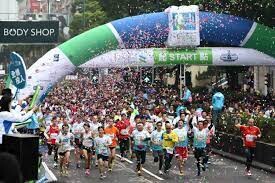
Organizers warned participants during registration to avoid wearing any items of political expression.

“Anyone who uses the Hong Kong marathon as a platform for conveying and promoting political messages will face consequences,” organizers said in a press release. “This is a zero-tolerance approach.” Law enforcement was prepared heavily for the marathon, with police deploying counter-terrorism units on the race route.
The South China Morning Post reported that one runner was escorted to a changing room by police during a security check, and was told to change her shorts because of a printed political slogan on the side. Another man with a tattoo on his calf faced being kicked out of the marathon unless he covered it with a bandage, which he did.
2021 also marked the first year that the race banned costumes that cover the face for security reasons. A runner was told that he couldn’t run in his spiderman costume for personal identification purposes.
(10/26/2021) ⚡AMPby Marley Dickinson
HONG KONG MARATHON
The Hong Kong Marathon, sponsored by Standard Chartered Bank, is an annual marathon race held in January or February in Hong Kong. In addition to the full marathon, a 10 km run and a half marathon are also held. Around 70,000 runners take part each year across all events. High levels of humidity and a difficult course make finishing times...
more...Are the thicker shoes faster?
The recent disqualification of the Derara Hurisa from the Vienna marathon was the first high-profile disqualification of an athlete for a violation of the new footwear rules from World Athletics on the roads.
Hurisa’s shoe, the Adidas Adizero Prime X, had all the ingredients of a super shoe, including better foam with rigid pieces embedded. But it had one distinctive quality: It was thicker than the current regulations allow.
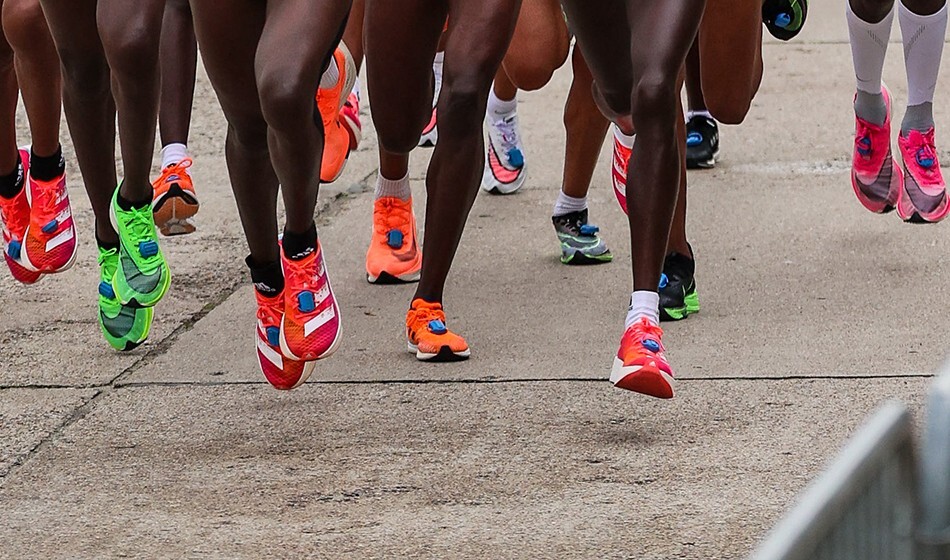
This revisits the classic question around the rules: Are thicker shoes faster?

The answer is nuanced, but it boils down to this: Faster shoes are thick, but thicker shoes aren’t necessarily faster.
The shoes of today that are helping athletes run faster do so from the interaction between more perfect foam (lighter, softer, and more resilient polymers) and rigid architectural pieces (curved and embedded stiff plates and rods). In 2020, World Athletics put regulations in place to manage the potential performance advantages by limiting the thickness of the shoes and the extent of those architectural features. For a detailed look at the rationale for the sole thickness regulation strategy, Adding more of the foam to the bottom of runners’ feet is likely to be beneficial for two reasons.
First, its greater compliance (softer cushioning) and its higher resiliency (greater energy return) help the runner to run more efficiently by wasting less energy step-to-step and recycling more energy underfoot. If the foam is functioning like a spring, a longer and longer softer, more perfect spring can store more and more energy and give more and more of it back.
Second, the foam provides a three-dimensional matrix within which to put the aforementioned rigid pieces. The specific mechanisms of how and the extent to which the rigid pieces (e.g., curved carbon fiber plates or rods) are beneficial are still being elucidated, but it’s likely helping the body both use the benefits of that foam—the foam on its own it may be too soft or unstable—and and by subtly manipulating the runner’s mechanics to more efficiently move through foot strike. These benefits are great, in theory, as they allow us to augment the runner’s legs with elements that ostensibly function better than the human body’s own elastic structures without fatiguing.
(10/25/2021) ⚡AMPby Colorado Runner
Eliud Kipchoge has been named best male athlete of Tokyo 2020 Olympics
Kenya's Eliud Kipchoge on Sunday won the Best Male Athlete accolade during the 2021 Association of National Olympic Committees (ANOC) Awards held in Greece.
Kipchoge delivered a masterclass in marathon running, breaking away at the 30-kilometre mark and never looking back to retain his Olympic title in two hours, eight minutes and 38 seconds during the Tokyo Olympics in August.
He became only the third man to defend the Olympic men’s marathon title after Ethiopia’s Abebe Bikila (1960 and 1964) and East Germany’s Waldemar Cierpinski (1976 and 1980).
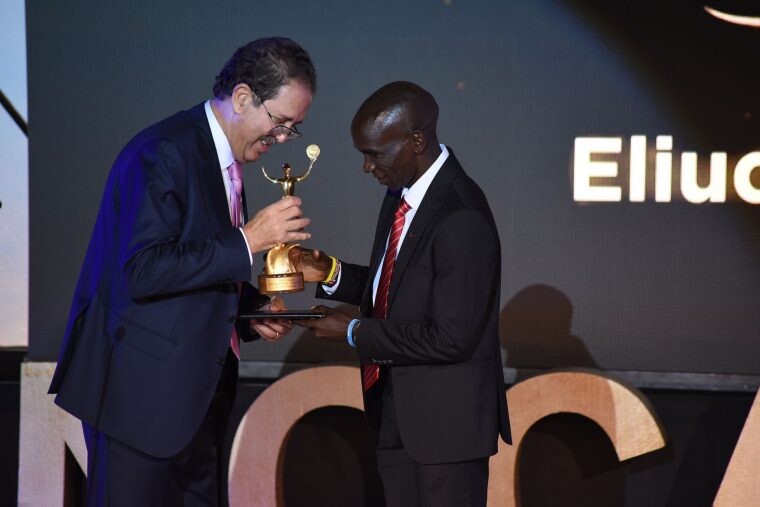
The victory at the Tokyo 2020 Olympics was Kipchoge’s 13th success in the 15 marathons he has raced in since 2013. He broke the world record in 2018 when he timed 2:01.39 in the Berlin Marathon.
On October 12, 2019, Kipchoge timed 1:59.40 at the Ineos 1:59 Challenge in Vienna, Austria. But the time did not count as a new marathon record since standard competition rules were not followed.
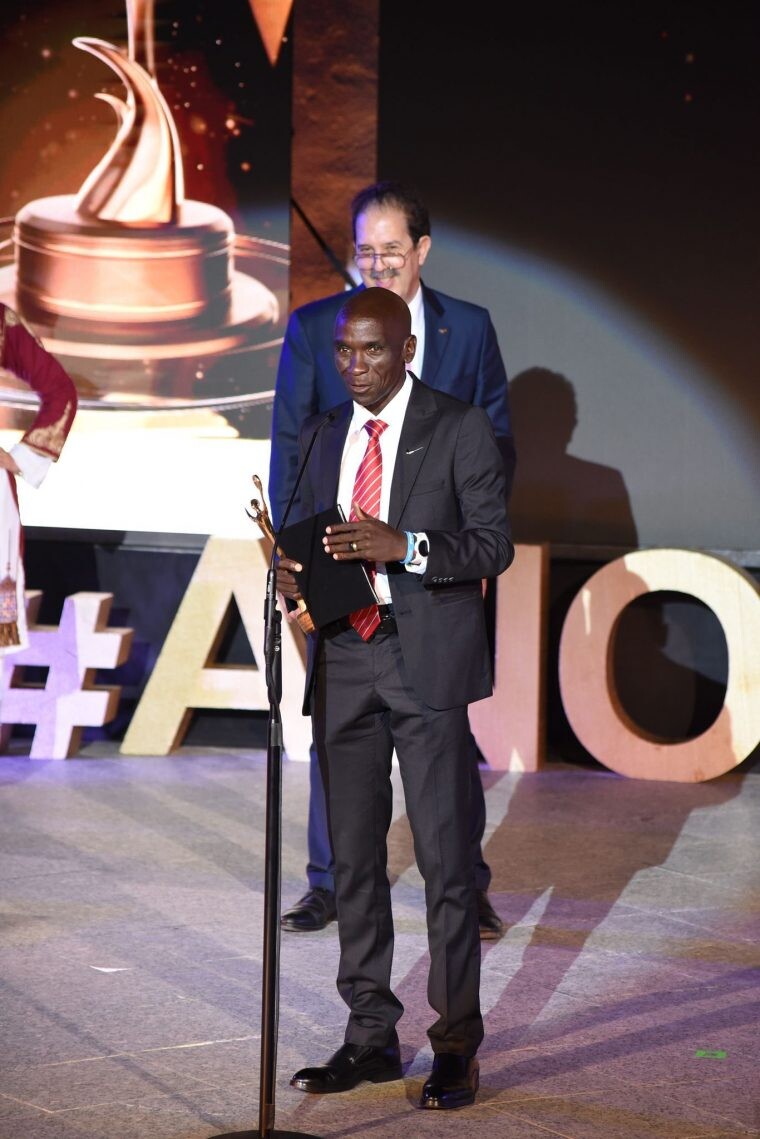
"It is an honor to win the ANOC Award for the Best Male Athlete at the Tokyo Olympics. With so many beautiful performances by so many athletes, I am proud to be the recipient of this award. Thank you all for your great support," the world record holder said.
He received his award from the president of Association of National Olympics Committee of Africa Mustapha Berraf at the Open Air Theatre of the Creta Maris Beach Hotel, in Greece.
The awards were organized by ANOC to celebrate the achievements of athletes at the Tokyo Games.
(10/25/2021) ⚡AMPby Brian Yonga
200m World bronze medalist Alex Quiñonez murdered in Ecuador
News broke on Saturday that world 200m bronze medalist, Alex Quiñonez, was murdered in his native Ecuador in the city of Guayaquil.
The 32-year-old was reportedly shot multiple times by unknown assailants along with his friend, Jogyro Alcala.
Quiñonez finished third in the 200m in Doha two years ago, becoming the first Ecuadorian athlete to win a world medal at a track event. He ran his personal best of 19.87 in the 200m in 2019 in Lausanne, Switzerland, setting a new national record for Ecuador, and was also the national record-holder in the 100m and the 400m.
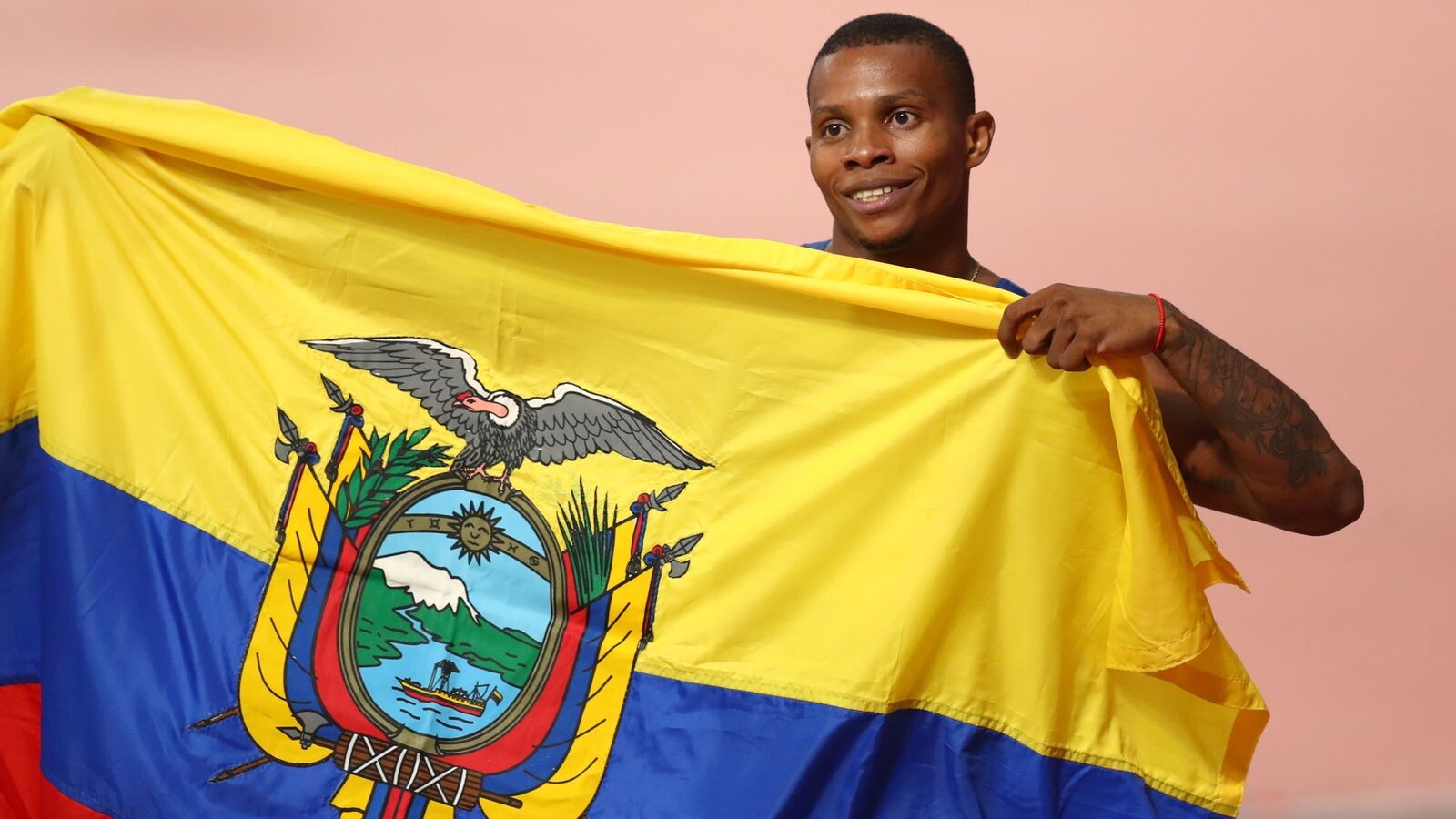
Unfortunately, Quiñonez was unable to participate in the Tokyo Olympic Games after he was suspended for violating the rules of whereabouts information.
“Today we lost a great athlete, someone who made us dream, made us excited. With deep pain, we confirm the murder of our athlete Alex Quiñonez in the city of Guayaquil,” the Ecuadorian Ministry of Sports said in a statement on Twitter.

Quiñonez is not the first athlete this month who has been murdered. Two-time world 10,000m bronze medalist, Agnes Tirop of Kenya was killed earlier this month by her husband, Ibrahim Rotich, who has now been arrested and taken into custody.
The exact circumstances surrounding Quiñonez’ death are still unknown, and an investigation into his murder is still ongoing. The news has sparked an outpouring of grief across the country, with many calling on the Ecuadorian police to take action against the recent surge in violence throughout the nation.
(10/25/2021) ⚡AMPby Brittany Hambleton
2021 Beijing Marathon cancelled as city experiences Covid spike
Beijing Marathon, scheduled for October 31, has been cancelled due to a recent bout of coronavirus cases in the city.
Domestic tour groups have been identified as the source of 133 infections of the delta variant spread across 11 provinces.
Although 75% of the population has now been vaccinated Government policy is still to vigorously suppress any outbreaks that occur – this last being the most significant since August.
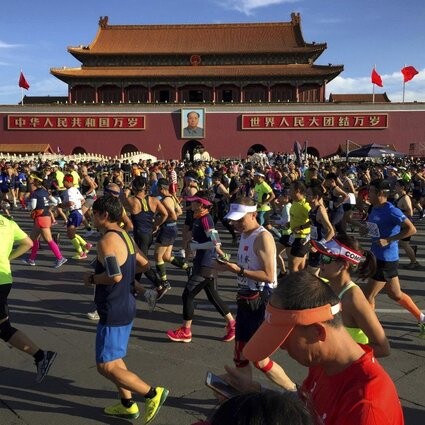
Cases occurring in Beijing are particularly worrying for the authorities with the 2022 Winter Olympic Games due to be hosted in the city from February 4-20.
(10/25/2021) ⚡AMPby AIMS
Beijing Marathon
The Beijing Marathon is an annual marathon held in Beijing, People's Republic of China. The race was first held in 1981 and has been held every year since. The race begins at Tiananmen Square and finishes at the National Olympic SportsCenter stadium. Beijing Marathon is now a full marathon only marathon race. At the 2009 edition of the race, 4897...
more...Abdi wins Rotterdam Marathon in European record of 2:03:36
Competing in his first race since taking bronze at the Olympic Games, Belgium’s Bashir Abdi broke the European record to win the NN Rotterdam Marathon on Sunday (24), clocking 2:03:36 at the World Athletics Elite Label road race.
At one point the 32-year-old had looked to be out of contention after two-time Rotterdam winner and course record-holder Marius Kipserem opened up a significant gap with less than 10km to go. But Abdi finished strongly to overtake the Kenyan in the closing stages before going on to win by 28 seconds.

Meanwhile, Kenya’s Stella Barsosio produced a solo effort to win the women’s race in a lifetime best of 2:22:08, improving on her runner-up finish in this race two years ago.
Most of the big contenders in the men’s race ran as a group in the early stages, passing through 10km in 29:17 before reaching the half-way point in 1:01:57, suggesting Kipserem’s course record of 2:04:11 was under threat.
Soon after reaching 25km in 1:13:33, Kipserem forged ahead and broke up the lead pack, hitting 30km with a 12-second lead over Ethiopia’s Dawit Wolde with Abdi a further five seconds in arrears.
But Abdi and Wolde caught up with Kipserem again by 35km, reached in 1:42:33, while Kenya’s Titus Kipruto was 20 seconds adrift of the lead trio.
Soon after, Abdi made his decisive move and broke away from his remaining opponents before going on to win in 2:03:36. His winning time took 40 seconds off the previous European record, set by Turkey’s Kaan Kigen Ozbilen in Valencia two years ago, and places Abdi 14th on the world all-time list.
Kipserem held on for second place in a PB of 2:04:04, inside his former course record, while Wolde took third place in 2:04:27, almost a minute ahead of Kipruto (2:05:22).
In contrast to the men’s race, the women’s contest was essentially a solo effort from Stella Barsosio. The Kenyan had opened up an 18-second lead over compatriot Bornes Kitur by 5km (16:29), which grew to more than a minute by 15km (49:27).
Barsosio’s half-way split of 1:09:33 suggested a sub-2:20 finishing time, but with no competitors to help push her, the 28-year-old’s pace dropped slightly in the second half. Nevertheless, her lead continued to grow and she had a margin of almost four minutes by the time she reached 30km in 1:39:02. Further back, Ukraine’s Natalya Lehonkova was closing on Kitur, who was starting to fade.
Barsosio went on to win comfortably in 2:22:08. Lehonkova overtook Kitur in the closing stages to take the runner-up spot in 2:30:28 while Kitur held on for third place in 2:30:41.
(10/24/2021) ⚡AMPNN Rotterdam Marathon
The marathon has been the biggest one-day sporting event in the Netherlands for many years in a row with over 35000 athletes professionals inclusive. The world's top athletes will at the start on the bustling coolsingel, alongside thousands of other runners who will also triumph,each in their own way.The marathon weekend is a wonderful blend of top sport and festival. ...
more...Gidey smashes world half marathon record in Valencia
Ethiopia’s Letesenbet Gidey smashed the world record* at the Valencia Half Marathon Trinidad Alfonso EDP, clocking 1:02:52 on her debut at the distance at the World Athletics Elite Label road race on Sunday (24).
Competing in the same Spanish city where she broke the world 5000m record last year, Gidey took 70 seconds off the previous world record of 1:04:02 set by world marathon champion Ruth Chepngetich earlier this year.

In doing so, 23-year-old Gidey becomes the first woman to officially break the 64 and 63-minute barriers. She’s also the first debutante to set a world record for the distance.
Perfectly paced by her compatriot Mebrahtu Kiros, Gidey went through the opening 5km in 15:00, well inside world record pace, with her compatriot Yalemzerf Yehualaw running five metres down. Yehualaw, whose recent 1:03:44 clocking in Larne could not be ratified as a world record due to the course being too short, drifted further back over the next few kilometres as Gidey reached 10km in 29:45 – the third-fastest clocking in history for the distance and just seven seconds shy of the world record set just a few weeks ago by Kalkidan Gezahegne.
While Yehualaw began to lose ground shortly afterwards, Gidey maintained her relentless rhythm to cover the next 5km segment in 14:44, reaching the 15km point in 44:29, barely nine seconds slower than her own world best for the distance.
Although her pace dropped very slightly in the last quarter of the race, Gidey had done more than enough to ensure victory in a world record time. She crossed the line in 1:02:52, adding a third world record to her name to go alongside the marks she owns for 5000m (14:06.62) and 10,000m (29:01.03).
Underscoring the quality of Gidey’s performance, she crossed the finish line alongside Spain’s Javier Guerra, a 2:07:27 marathon runner.
“I knew I could run this kind of time as my training sessions in the altitude of Addis Abeba have gone very well,” said an ecstatic Gidey, the Olympic bronze medallist and world silver medallist over 10,000m. “In future I’m thinking of competing at the marathon distance but I’m not sure that will come before the Paris 2024 Olympic Games or later.”
Yehualaw finished second in 1:03:51, also inside the previous world record. Kenya’s Sheila Chepkirui bettered her lifetime best by 45 seconds to complete the podium in 1:04:54.
The men’s race may not have witnessed a world record, but it still had record depth with an unprecedented seven men covering the distance within 59 minutes.
The leading group went through the opening 5km in 13:45, right on schedule for a 58-minute finishing time. Kenya’s world 10km record holder Rhonex Kipruto ran comfortably close to the pacemakers alongside compatriots Abel Kipchumba, Philemon Kiplimo, Felix Kipkoech, Daniel Mateiko and Kennedy Kimutai plus Ethiopia’s world 5000m champion Muktar Edris.
Surprisingly, the three pacemakers – Josphat Kiptoo Chumo, Emmanuel Maru and Evans Kipkemei Kurui – dropped out before the seventh kilometre and from then on the main favourites took turns in the lead to keep a swift pace. The 10km checkpoint was reached in 27:35, slightly outside their target, with Kipruto and 58:48 world leader Kipchumba making most of the pacing duties alongside the surprise package Mateiko, whose career best was 59:25 set in Copenhagen last month. At that point, 10 men still remained in the lead pack.
The first serious move came in the 12th kilometre when Mateiko, a training partner of Eliud Kipchoge, tried to break away from the rest but he was soon reeled in by the main contenders, who were now running in single file.
Shortly after reaching 15km in 41:16, Kipchumba moved to the front and only Kipruto could live with his pace. With about half a kilometre to go, Kipruto surged and gained a few metres on Kipchumba, but the latter never gave up and overtook Kipruto in the closing stages to win in a world-leading 58:07 with Kipruto taking second place in 58:09.
Kipchumba’s winning time elevates him to sixth on the world all-time list. Mateiko set a huge PB of 58:24 to secure a Kenyan sweep of the podium places.
(10/24/2021) ⚡AMP
by Emeterio Valiente for World Athletics
Valencia Half Marathon
The Trinidad Alfonso Valencia Half Marathon has become one of the top running events in the world. Valencia is one of the fastest half marathon in the world. The race, organized by SD Correcaminos Athletics Club, celebrated its silver anniversary in style with record participation, record crowd numbers, Silver label IAAF accreditation and an atmosphere that you will not find...
more...Kenyan Marius Kipserem will be targeting hattrick of titles at Rotterdam marathon
Two-time champion Marius Kipserem will be the man to beat as he chases hattrick of victories at the Rotterdam Marathon on Sunday
Kipserem clinched the 2016 event winning in 2:06:11 and setting the course record two years ago when he posted 2:04:11.
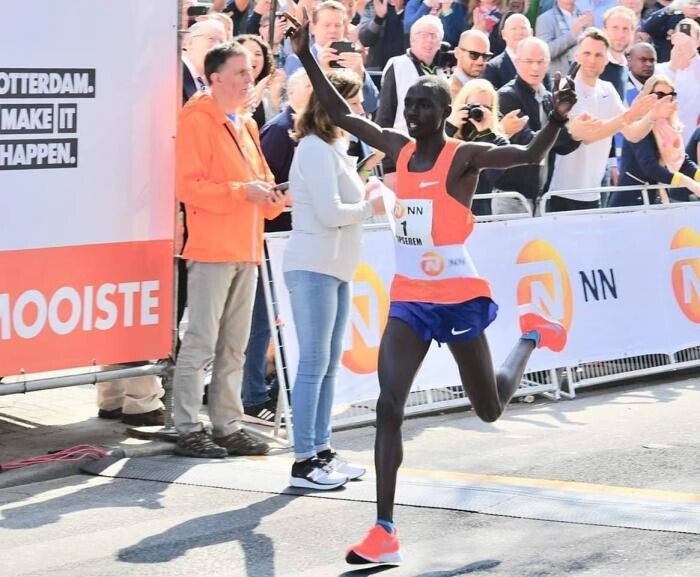
He will have five Kenyans for company in the event, including Emmanuel Saina (2:05:02), Gideon Kipketer (2:05:51), John Langat (2:07.11) Cyrus Mutua (2:10:28) and Titus Kipruto (2:12.43).
The Kenyan contingent faces a herculean task with five Ethiopian athletes in contention. They include Solomon Deksisa, who has a personal best of 2:04:40 alongside Kebebe Wami Tulu (2:06:32), Getachew Yizenagwa (2:06:47), Dawit Wolde (2:06:18) and Asefa Tefera (2:07.47)
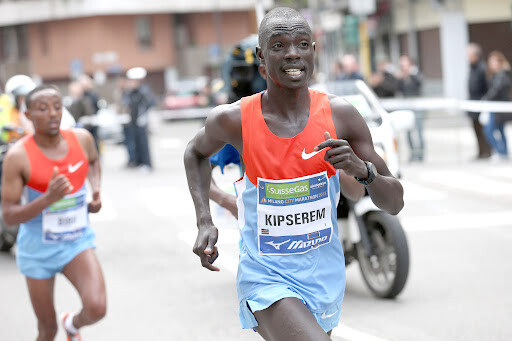
Olympic bronze medalist Bashir Abdi of Belgium (2:04:16) will be seeking to break the European marathon record of 2:04:11.
The men's field looks very impressive with ten men holding PB's inside 2:08 with three having run sub 2:05.
In the women's category, Kenya will be led by Bornes Kitur (2:21:26) and Stella Barsosio (2:23:36).
Other contenders are Nataliya Lehonkova of Ukraine (2:28:58), Norway’s Runa Skrove Falch (2:33:52), and Sweden’s Louise Wiker (2:36:29). Moreover, debutantes Marijke Visser and Jacelyn Gruppen (2:52:17) are expected to run a good marathon.
A second group of 15 athletes will be setting off at a slower pace. These runners include Dutchmen Roy Hoornweg and Floris Willeboordse.
Hoornweg has already made a name for himself as a rabbit and is now making his official marathon debut. Willeboordse is keen to improve his 2:30:01 (New York, 2019).
Abdi Nageeye, who ‘flew’ over the fast Rotterdam course to grab the Dutch record of 2:06:11 in 2019, has opted for the New York marathon this year after his Olympic silver medal.
Nageeye also stood out in Japan by literally and figuratively piloting his Flemish friend Bashir Abdi to grab bronze. However, Bashir will be coming to the Coolsingel.
(10/23/2021) ⚡AMPby William Njuguna
NN Rotterdam Marathon
The marathon has been the biggest one-day sporting event in the Netherlands for many years in a row with over 35000 athletes professionals inclusive. The world's top athletes will at the start on the bustling coolsingel, alongside thousands of other runners who will also triumph,each in their own way.The marathon weekend is a wonderful blend of top sport and festival. ...
more...Ethiopians Letesenbet Gidey and Yalemzerf Yehualaw target world half marathon record in Valencia
The Valencia Half Marathon Trinidad Alfonso EDP witnessed a men’s world record last year as Kibiwott Kandie ran a stunning 57:32. This time the women’s world record is the target and organisers have assembled a star-studded line-up for the World Athletics Elite Label road race on Sunday (24).
Ethiopians Letesenbet Gidey and Yalemzerf Yehualaw will clash in a long-awaited showdown. Gidey is the world 5000m and 10,000m record-holder, while Yehualaw ran 1:03:44 in August, and although that time will not be ratified as a world half marathon record the two athletes will now go head-to-head in Valencia as they target the 1:04:02 run by Ruth Chepngetich in Istanbul in April, a mark which is pending world record ratification.
The 23-year-old Gidey has competed sparingly this year but managed to set a world 10,000m record by running 29:01.03 in Hengelo before claiming bronze at the Tokyo Olympics. While the diminutive Yehualaw is an accomplished half marathon specialist, with nine outings over the last three seasons, Gidey will tackle the distance for the first time but her impressive 44:20 world best for the 15km set in Nijmegen in 2019 suggests she might become the first debutante to set a world record for the distance.

Reportedly, each of the Ethiopian aces will be joined by their respective pacemakers – Mebrahtu Kiros and Genetu Molalign – in a battle which promises to be fierce, while the organisers will provide an official pacemaker for the rest of the elite targeting a 1:05 clocking.
That second group looks set to be led by Ethiopia’s Senbere Teferi, the winner in 2019 thanks to a 1:05:32 time; her compatriot Hawi Feysa, fresh from a 1:05:41 PB in Copenhagen last month; Sheila Chepkirui, runner-up last year in a career best of 1:05:39; and her fellow Kenyan Brenda Jepleting, a 1:06:52 performer.
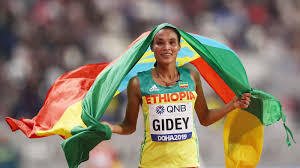
After last year’s climax, when no fewer than four men ran inside the then world record of 58:01, one of them – Rhonex Kipruto – will be the marquee athlete this time. The Kenyan star, who clocked a 57:49 debut last year, also excelled in Valencia in January 2020 when he set the world 10km record of 26:24. He couldn’t place higher than ninth at the Tokyo Olympics over 10,000m but proved to be in top form in September when he recorded 26:43 at a 10km road race in Herzogenaurach.
While a men’s world record assault is not planned on this occasion, the pacemakers are set to go through the opening 10km in 27:30 on the hunt for a sub-58:00 finish time.
In addition to Kipruto, Sunday’s field includes another four Kenyan athletes with PBs under 59 minutes: Philemon Kiplimo, who was fifth last year in Valencia in a career best of 58:11, plus Kelvin Kiptum (58:42), Abel Kipchumba (58:48) and Felix Kipkoech (58:57).
Yet Kipruto’s toughest opposition might come from the two-time world 5000m champion Muktar Edris. The 27-year-old Ethiopian posted a promising debut over the distance last November by clocking 59:04 in New Delhi and should play a key role on Sunday, while the European challenge will be headed by Norway’s Sondre Moen and Spain’s Carlos Mayo.
Weather forecasters predict an ideal morning for running, with a 13ºC temperature and a very slight breeze. After the four records set in Valencia last year – the men’s 10km, half marathon and 10,000m, plus the women’s 5000m – the city could witness another world best on Sunday.
(10/23/2021) ⚡AMPby World Athletics
Valencia Half Marathon
The Trinidad Alfonso Valencia Half Marathon has become one of the top running events in the world. Valencia is one of the fastest half marathon in the world. The race, organized by SD Correcaminos Athletics Club, celebrated its silver anniversary in style with record participation, record crowd numbers, Silver label IAAF accreditation and an atmosphere that you will not find...
more...When It Comes to Cancer Prevention, Here’s How Much Exercise You May Need Each Week
Any amount of movement is beneficial, but research indicates there may be a sweet spot.
At least five hours of moderate-intensity activity per week may prevent certain types of cancers related to the breast, colon, stomach, kidney, bladder, and esophagus, new research suggests.
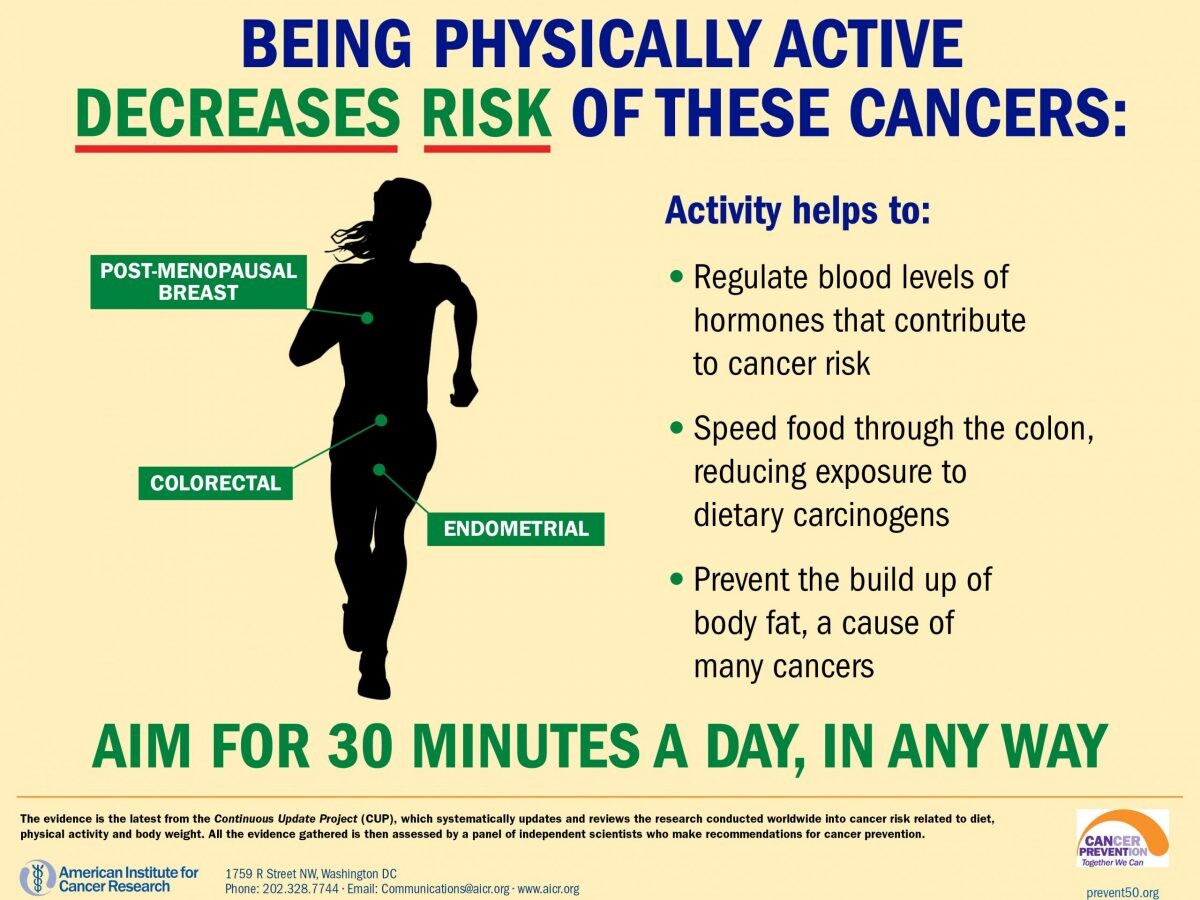
Exercise has been shown to address some causes of cancer, such as obesity and inflammation.
Of course, exercise alone won’t eliminate your risk since there are many factors that go into that equation, including genetics, environmental exposure, smoking and alcohol use, age, diet, and hormones.
When it comes to cancer prevention, lifestyle habits make an enormous difference, and exercise is a major part of that, according to a new study in the journal Medicine & Science in Sports & Exercise.
Researchers looked at state-level data on cancer incidence as well as physical activity by state (in people age 30 or older) and found a strong connection between reduced cancer prevalence and more exercise. That was particularly true for cancers related to the breast, colon, stomach, kidney, bladder, and esophagus.
They noted that more than 46,000 cancer cases in the U.S. annually could be prevented if people followed the guideline of getting at least five hours of moderate-intensity activity per week. For all cancer cases in adults between 2013 and 2016, about 3 percent were attributable to physical inactivity, they suggested. That incidence was higher in women than in men, researchers added.
States with the highest proportion of cancers attributed to sedentary behavior were in the South, such as Kentucky, West Virginia, Tennessee, Louisiana, and Mississippi. Those with the lowest proportion were in Western states like Montana, Utah, and Wyoming.
Of course, exercise alone won’t eliminate your cancer risk since there are many factors that go into that equation, including genetics, environmental exposure, obesity, chronic inflammation, smoking and alcohol use, age, diet, and hormones.
However, exercise has been shown in the past to address some of those factors, such as obesity and inflammation. With the latter, more intense physical activity can actually increase inflammation in the short term, but research indicates it brings the level down overall, and one study noted that as little as 20 minutes of exercise could kick off this effect.
“Continuous inflammation stresses your entire body, including lowering your immune system response, damaging your DNA, and affecting your gut health,” William Li, M.D., author of Eat to Beat Disease: The New Science of How Your Body Can Heal Itself, told Runner’s World. “All of those can contribute toward cancer development, as well as raise your risk of type 2 diabetes and other chronic conditions, especially if it comes with weight gain.”
Building muscle through strength training or endurance exercise—like running—can be helpful for reducing inflammation, Li said, particularly if you adopt a diet rich in anti-inflammatory foods, like fruits and vegetables.
(10/23/2021) ⚡AMP
by Runner’s World
Harvey Lewis Breaks the Big’s Backyard Ultra Record By Running More Than 350 Miles in 85 Hours
He ran a 4.1667-mile loop every hour for 85 hours.
The third time was the charm for Ohio’s Harvey Lewis at the 2021 Big’s Backyard Ultra. After finishing as the assist in 2017 and 2020 (meaning, he is the second-to-last runner left in the race), the 45-year-old was finally the last runner standing in Bell Buckle, Tennessee. In total, Lewis ran 350.0028 miles in 85 hours/laps, making him the undisputed backyard ultra world-record holder.
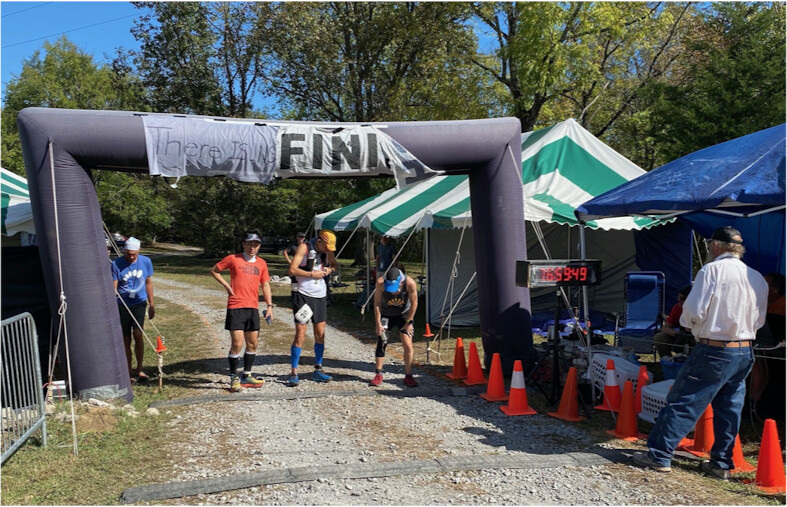
The backyard racing format has grown in popularity recently, with pop-up races happening all over the world. The rules, put simply, are: run a 4.167-mile loop at the top of every hour until one runner has done at least one more lap than the second-to-last runner. If both runners stop at the same time, then no winner is declared. At Big’s, runners complete a trail loop during the day, and a road loop at night.
The 2020 race was a virtual event, with runners in more than 20 countries competing simultaneously in standalone races. As a result, the 2021 race was anticipated to be one of the most stacked fields in race history. While some international runners were still unable to make the trip due to pandemic-related travel restrictions and concerns, several top runners made it to the start line. This included 2019 champion Maggie Guterl, 2020 champion Courtney Dauwalter, Big’s regular Dave Proctor, Michael Wardian, and Steve Slaby.
The race started at 6 a.m. ET on Saturday, October 16, and only three runners of 35 starters total dropped out within the first 24 hours (100 miles). But after that, runners seemed to drop almost every hour. Nine completed 48 hours, a large pack for reaching the third day of the race.
Lewis’s Big’s experience paid off as he and his crew chief Judd Poindexter troubleshooted any issues that arose. He fueled well and got five- to 10-minute naps when he could during the night, a big change from not sleeping at all in 2017.
One the race hit the 72-hour mark, it headed into uncharted territory with just three runners still standing: Lewis, Missouri’s Chris Roberts, and Japan’s Treumuchi “Mori” Morishita. Only two known backyard races in the world have hit the fabled fourth day before. This was the first time it had ever happened at Big’s.
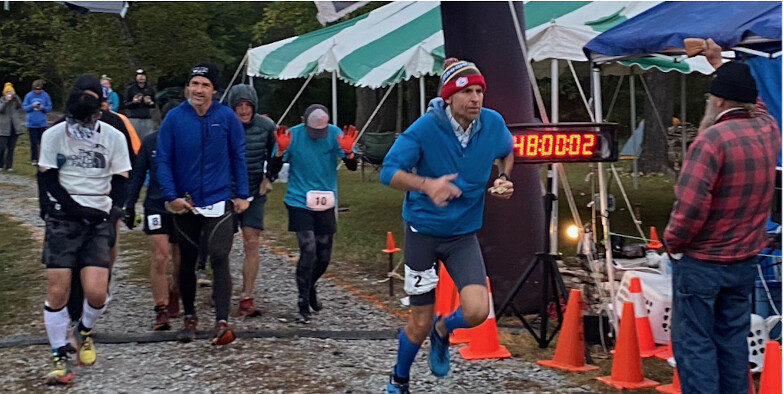
“We all wanted it so bad,” Lewis told Runner’s World. “We had lasted so long out there, which takes incredible willpower. It definitely helped. I wouldn’t have been out there without a reason to keep going, so I really enjoyed the challenge of running with them for so long together.”
The trio battled from lap 63 on, all quietly competing against one another. Each runner had their own style; Lewis and Morishita would sprint out of the corral at the start of some laps, which was a fan favorite.
“At the start and in certain areas, we just started sprinting,” Lewis said. “Morishita would sprint through the woods and yell, and then I would sprint through the woods and yell. It was a good move, so I hope Morishita didn’t mind I was doing it as well.”
Roberts struggled a lot before dawn, fighting off an injury that had him leaning sideways and coming in with few minutes to spare on laps. But as the sun rose, he recovered for a strong day.
Issues arose late in the game for Lewis and Morishita. Both runners fell on lap 81, which caused Morishita to miss the cutoff by 30 seconds, ending his day and leaving just Lewis and Roberts in the race. Lewis fell on the final hill and left him with an unknown (at the time) hand injury. Because his legs were okay, he ignored it and kept moving.
“As we got to the night, I thought for sure we’d be going to 400 [miles], so I mentally prepared myself for that,” Lewis said.
Many anticipated another complete night—that is, until lap 85, when Roberts surprisingly returned to camp soon after starting. Lewis, still on his loop, didn’t know this. Even though he didn’t see Roberts on the way back, he still wasn’t convinced he won until he got back to camp.
There, Lewis was greeted to roaring applause from the crowd that was still there. Lewis was finally a Big’s champion, capping off an incredible year of winning three major races: Badwater 135, Ohio’s Backyard Ultra, and now Big’s. He also earned the undisputed world record for most yards ever completed in a backyard race, taking the title from John Stocker who ran 81 yards with his assist, Matt Blackburn at the Suffolk Backyard Ultra in June 2021.
“It was an incredible experience,” Lewis said. “It has been one of my dreams to win this race, and to have it come to fruition was pretty mind-blowing for sure. I was super psyched.”
Lewis was so overcome with joy and exhaustion that he spent little time enjoying his win, opting to head to his tent shortly after finishing.
“When I finished, whatever armor I developed in my mind that told me I wasn’t going to submit went away,” he said. “I was really tired. I didn’t care where I slept. There was a cot in my tent 40 meters away, and it felt like the Taj Mahal. I fell asleep with half a plate of rice and beans on me.”
The next day, Lewis got a ride back to Cincinnati. When he arrived around 11 p.m., he kept his run streak alive by getting a mile in with minutes to spare. Then, a friend instructed him to go get his hand checked out in the emergency room after midnight. Harvey was diagnosed with a clean break in the fourth metacarpal of his right hand, and he was told should heal in a few weeks with just a splint.
Lewis told Runner’s World that he got a few hours of sleep in the ER before going home briefly and run commuting to work—he’s a social studies teacher at School for Creative and Performing Arts. Lewis wasn’t supposed to work because he had taken the day off. However, because of a shortage of substitute teachers at the moment, he literally ran in teach anyways.
“A couple times a year, I’ll take off to recuperate,” he said. “As long as I’m not hurting myself, I do the commute with human power.”
Big’s is likely the last race of the year for Lewis, though he plans to run the Flying Pig Marathon easy on October 30. His next big adventure will be the Barkley Marathons in 2022, which he now has entry to because of his Big’s win. Cantrell let Lewis know his thoughts on that.
“My biggest memory was turning to [Big’s and Barkley Marathons creator Gary ‘Lazarus Lake’ Cantrell] at the end and saying, ‘The winner gets an entry to Barkleys,’” Lewis said. “He couldn’t say no, so he went along with it. The next day, he told me that I’d be the sacrificial lamb.”
(10/23/2021) ⚡AMP
by Runner’s World
Caught in blasting snow ultrarunners stuck together for safety, all 87 participants were rescued in the mountains of Utah
When snowflakes started falling a few miles into a 50-mile ultramarathon through the Utah mountains, Annie Macdonald was not worried. As an experienced long-distance runner, she had expected some snow.
But then the stray flakes turned into a near whiteout, lashing participants of Saturday’s DC Peaks 50 race with winds of up to 40 miles per hour and erasing the path through the desolate terrain. The temperature dropped and Macdonald, who wore a rain jacket over a shirt, with tights, mittens and running shoes, became “just miserably, miserably cold.”
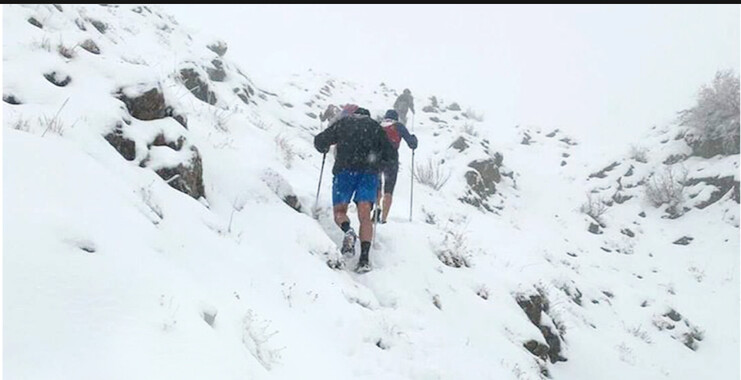
The race was in its first year as a new arrival to the increasingly popular ultramarathon scene. Ultramarathons stretch longer than the 26.2 miles of a marathon, covering grueling distances of 50 miles or more.
At about seven miles into the race and six miles from the first station, there was little choice for Macdonald but to keep going. With the path gone and the snow blasting into her face, she could only follow the footfalls of the runner ahead of her, pushing on nearly five hours to the station.
“I just kept thinking, okay, be smart. Don’t get injured, because if you get injured, then you can’t keep moving, and you have got to keep moving,” Macdonald said in an interview on Sunday. “And so that was what I kept telling myself. But even then, it was still scary for me, because I’ve never been that cold. And you just think, how can I be this cold?”
The 46-year-old, a friend of the race organizers who lives in the last house outside the canyon where the ultramarathon began, was one of 87 runners caught in the rugged mountains of northern Utah when extreme weather brought on up to 18 inches of snowfall. All were rescued in an hours-long operation that included the Davis County Sheriff’s Office, first responders, search and rescue volunteers and the organizers of the ultramarathon, who called off the event once they grasped the extreme conditions.
Rescuers “covered the entire course on foot, as well as with 4x4s and snowmobiles, for several hours to assist runners off the mountain,” the sheriff’s office said. A few were treated for hypothermia and one for a minor injury from a fall. They were released at the scene.
“It certainly, without a doubt, could have ended up much worse for many of those participants,” said Davis County Sheriff Kelly V. Sparks said. “We had serious concerns … if somebody hadn’t been able to get to them quickly and get them rewarmed, they could have been in great jeopardy.”
Unlike marathons that send runners across big city streets, ultramarathons typically start in small towns and carve through lengthy trails. They usually draw smaller groups of runners, although ultrarunning has been growing in popularity in recent years. The extreme activity saw tragedy in May, when 21 people died in the cold during an ultramarathon in China.
The Utah race was plotted to take runners on a “tough course” that was more than 70 percent trails and 24 percent service roads, up peaks and through canyons with 12,000 feet of vertical gain. Organizers promised adventure and impressive views of the Utah landscape.
Jake Kilgore, one of the race directors, is himself an ultramarathoner who said that he lives five miles from the trailhead. He said that he and fellow race director Mick Garrison started planning the event two years ago and initially considered July. “As ultra athletes, we would never ask our runners to do something we would never do,” he said. He and Garrison live a mile a part, and “run on these trails every day,” and so in July 2020, Garrison ran the course with Kilgore to test it out. “It was nearly 100 degrees that day, 95 to 100 degrees … It was unbearably hot and he could not go any further at mile 40,” he said. “So we went back to the drawing board.”
They ended up choosing October. The course traversed five cities, and he checked forecasts for those locations, and other areas along the course such as Francis Peak. “Everybody knew it was going to be raining, some snow … an inch or two max,” he said. Sparks said that at 7,000 feet, snow was not unexpected. At that elevation, there was a “storm cell that had been active for a couple of days, so it was not a quick moving storm or anything.”
The race featured live technology meant to predict and track the runners’ locations and provide a stream of the course, Kilgore said. Most runners started at 5:30 a.m., with about 20 runners beginning at an early 4:30 a.m. After 7:30 a.m., when the live feed came online from the first aid station — located at Francis Peak at just over 9,000 feet, 13.5 miles into the race — “that’s when we saw truly how bad it was,” Kilgore said. There were cross winds of up to 40 miles per hour and 18 inches of snow.
That is when Kilgore and Garrison called off the race. The decision was relayed to all the aid stations, and volunteers were told to head to the first station to wait for runners and get them off the mountain.
Up on the course, Macdonald said, runners decided to stay in groups to reach safety. She said they slowed to a walking speed, unable to continue running. Icicles hung from her jacket and from the long hair of a fellow runner. Macdonald could no longer feel her face. “We were just yelling to each other making sure everybody was still with us and that we didn’t drop anybody,” she said. The trip, she said, “felt like forever.”
Kilgore said he ran home to put on ski goggles, gloves and gear. He shuttled up as high onto the mountain as he could to get onto the course and help get runners down. He said contingency and safety plans allowed them to jump into action, with the help from more than 100 volunteers who were stationed throughout the course, to get everyone to safety.
By 2:45 p.m., about five hours after organizers called the sheriff’s office for assistance, all of the runners had been accounted for. By about 7 p.m., all the rescuers — a team made up of the volunteers who work and train with the county — had also made their way down the mountain.
The sheriff said authorities plan to speak with the organizers: “Our goal being to educate them and help them understand better how to get better information and better contact with us before a race begins.”
But Macdonald credited the race organizers with helping to prevent a dire situation that could have been “incredibly tragic for people.” Without quick work to account for all the racers and shuttle them down the mountain, the tough race day could have ended differently, Macdonald said.
Instead, Macdonald welcomed a crowd of runners into her home, where they sipped hot chocolate and traded stories. She said she has frostbite on her legs, yet plans to run the race again next year given the chance.
“As soon as I can sign up, I’ll do it,” she said. “I’ve got to finish it.”
(10/23/2021) ⚡AMP
Check out this greenhouse track in Japan
A high school in Japan came up with a creative solution for dealing with their winter weather. Instead of building an indoor track, they built a greenhouse around a 330m outdoor track where their athletes can escape the cold and snow.
The track was built for Asahikawa Ryukoku High School in Japan’s Hokkaido Prefecture, whose athletes are currently training for the Hokkaido Prefecture High School Girls Ekiden on October 23. The team is hoping for their sixth straight win, and their coach is hoping this new track will help get them there.

The Hokkaido Prefecture is known for heavy snowfall and temperatures that can drop as low as -20 C. In years past, the school’s Ekiden team has continued to train outside in the winter or had to travel to Sapporo to train on inside domed stadiums, a four-hour round trip from the school.
The special track was built on a 1,650 metre campus where the high school is being relocated next summer. The greenhouse structure is coated in durable vinyl, ranges from 5.4 m to 7.2 m in width and stands four metres high at its maximum point. Currently, the four-lane track is made of dirt, but in the future, two lanes will be covered with artificial turf and one lane will have a 100 m segment coated with standard all-weather track surface material. The facility is heated so it can be used throughout the year.
A few of the athletes have already tested out the new track and given it good reviews, including senior captain Sakura Ishibashi. “This will be a great place to train without having to worry about wind or snow,” Ishibashi told Japan Running News. “We’re all super grateful and want to show our thanks by succeeding.”
The track will also be available to the community and will be a great sports facility for the masses during the cold, snowy winter months.
(10/23/2021) ⚡AMPby Running Magazine
5 Marathons Down, One to Go: Takeaways From Shalane Flanagan’s Fall “Eclipse”
The retired 2017 New York City Marathon champion takes inventory of how her attempt to complete six marathons in seven weeks has gone so far (October 18).
Shalane Flanagan has 131 miles worth of World Marathon Majors down since September 26 and 26.2 miles to go on November 7, at the New York City Marathon, to complete all six races this fall. So far? She’s still in one piece and in good spirits, she said.
This fall, Flanagan embarked on what she dubbed “the eclipse,” what we all hope is a once-in-a-lifetime opportunity to run all the major marathons in one season—and, in fact, just seven weeks—due to the rescheduling of big events during the pandemic. On Monday, Flanagan ran her own version of a Tokyo Marathon, the only in-person event that was canceled due to COVID-19, on a 12.4-mile looped flat course near her home in Portland, Oregon. She feared it might be the hardest one, lacking the energy and enthusiasm of the crowds, but she finished in 2:35:14—far from the “slow” time she predicted three days beforehand.
“I think this one is going to be the toughest to really get after it,” she said on Friday. “I’m going to guess that this will be my slowest one, though it will be fun with some friends and family out there.”
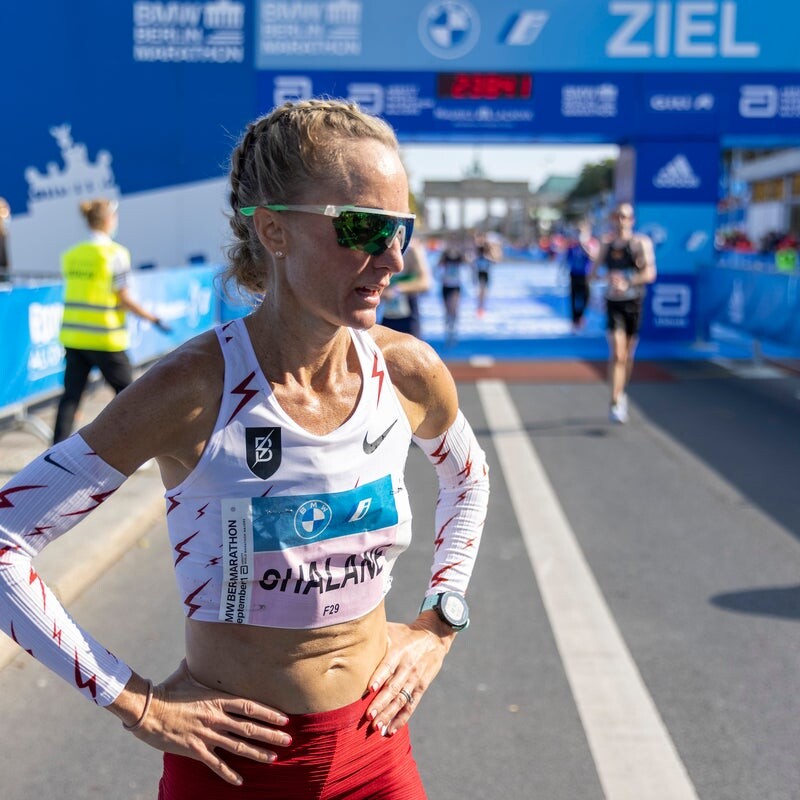
Flanagan, 40, retired from pro running in 2019, but she hasn’t retired from challenging goals, hoping to not just finish the 26.2-mile courses, but clock sub-three-hours on all of them. In addition to her race on Monday, she ran Boston on October 11 in 2:40:34, the day after she had clocked 2:46:39 in Chicago. Prior to that, Flanagan ran 2:35:04 on October 3 at the London Marathon and 2:38:32 on September 26 in Berlin.
Flanagan spoke with Women’s Running on Friday by phone to talk about how she’s measuring her effort, recovering, and learning valuable strategies along the way. Here are a few takeaways before she takes on the grand finale on November 7, at the New York City Marathon, a race she won in 2017.
You can let the pace come to you.
Flanagan has never experienced racing that is solely dictated by how she feels at the starting line. When it was her job to compete, the strategy was not always up to her—it was largely guided by the field.
“It’s fun because we figure out how hard we want to work each day—when you’re an elite, the race and other people are influencing how you run,” she said. “It’s now up to me on the day, how much I want to suffer. It’s a completely different dynamic. It’s like a different sport to me.”
The result? After racing the Boston Marathon five times, 2021 was the most enjoyable one yet. And the recreational athletes running around her are equally thrilled. One even pulled out a phone to FaceTime a friend to show he was racing with Flanagan.
“Normally I never feel in control at Boston. I get to mile 17 and I feel like trash. I never feel full of running, with the exception of maybe my first Boston because it was a kind of slow race. But the other times, the wheels were coming off and I didn’t enjoy it,” Flanagan said. “This was just a completely different experience and it was so fun and refreshing to have that.”
To decide on pace, Flanagan said she’s been looking at the weather, considering if she has a friend to run with that day, and how she feels when she starts. Then she lets the pace reveal itself.
“What feels sustainable, knowing that I’m not going max effort in any one of these?” she said. “Where’s that fine line that I can still recover as fast as possible but still dip my toe into that uncomfortable-ness that I’m craving?”
But even seasoned pros make rookie mistakes.
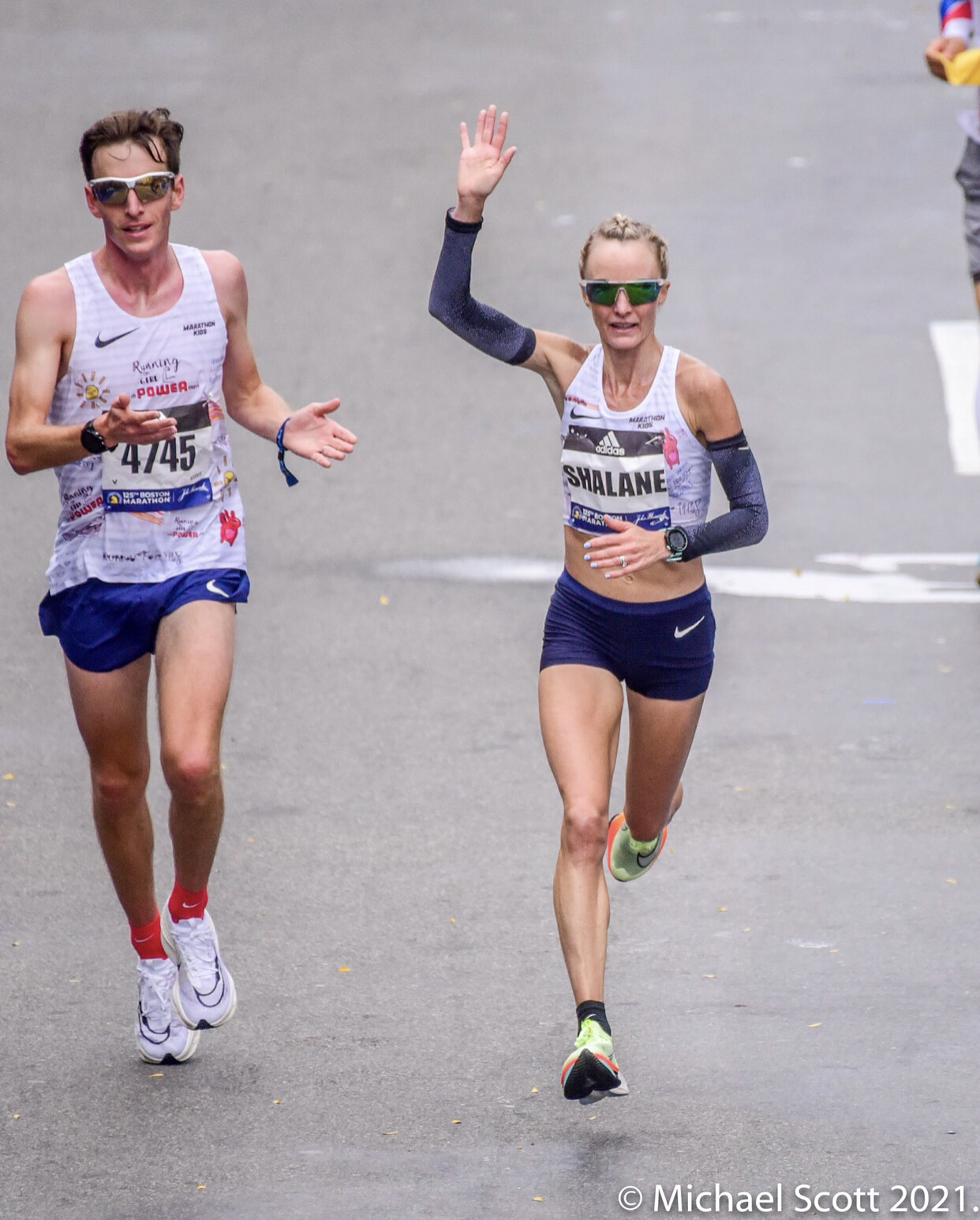
Although London was only her second race, it took a lot out of Flanagan, mostly because she made a mistake all of us can relate to: she went out too fast. She still finished in 2:35:04, but suffered during the second half (she ran 1:15:04 in the first 13.1 miles and 1:20:00 for the second).
“I had a cold and ran way too hard. That was the low so far,” Flanagan said. “I thought I maybe got myself in a pickle, with the [swollen] ankle, the cold, and all the travel, I was a little bit nervous about the whole thing. But now I can sniff the barn. I’ve physically rebounded.”
It was also the one race that she didn’t have a friend to run with, so she started in the wave with the sub-elite men.
“There was this vibe of competitiveness and of course I’m a competitive person so I fed off of it,” she said. “Then I got to 20 miles and I was like, ‘Uh-oh, You shouldn’t have done that.’ It backfired big for me. I learned my lesson on that one. That’s not the point of what I’m doing.”
Recovery is the name of the game.
Between the marathons, Flanagan pulls out all the old recovery tricks she’s learned along the way. Although unconvinced that ice baths make a big difference, she still did one between the back-to-back Chicago and Boston marathons. The travel and the running produce a lot of inflammation. She gets massages and physical therapy work twice a week after having no body work since stepping away from competition.
During her preparation before the attempt began in Berlin, she tried back-to-back long runs, including a 21-miler on a flat course at 6:40 pace followed by a hilly 21-miler at 6:20 pace the next day. When it came to the real-life scenario, she ended up feeling better in Boston than she did the day before in Chicago (“Which is kind of weird and kind of blew my mind,” she said.)
“I did a really good job hydrating, knowing those two were both going to be pretty humid marathons,” she said. “I think that’s why I came back well in Boston, because I did such a good job fueling and hydrating in Chicago, but I’ve been nonstop hungry since then.”
Reconstructed knees can take it, so far.
After retirement from competition in 2019, Flanagan had surgery on both of her knees and a long rehabilitation period afterward. So far, she hasn’t felt any pain and she’s worked with the Nike Sports Research Lab to have scans of her tendons and knees to monitor any damage through her training a racing.
“When I get back from each segment, they scan them to make sure the tissue in my knees is OK,” Flanagan said. “Anecdotally, I feel nothing and we’re actually seeing a strengthening of my quads—there’s no breakdown, which is incredible. My knees actually feel better than they did a year ago.”
The only hiccups so far occurred after the London Marathon, when she caught a cold and had a bit of an ankle flair up. It looked like she rolled the ankle, but she didn’t.
“London by far was the hardest for me. I didn’t pace myself well, so I had to stop and walk,” Flanagan said. “I was really tentative between London and Chicago. I didn’t run very much. The ankle was a low-level irritation. Maybe I tied my shoes too tight and got a tendon irritation? I have no idea what I would have done, but my physical therapist has been taping it to give it more stabilization.”
The super shoes help.
While the runner still needs to power the body over 26.2 miles, it’s no great secret that the newest models of shoes, like the Nike AlphaFly, can help ease the wear and tear on the legs, absorbing more of the shock as we pound the pavement day in and day out. Flanagan believes that the technology is a nice tool to have to reach her audacious goal.
“I think the foam is definitely a game changer in terms of shock absorption,” she said. “It’s been to my benefit to be able to come back. But at the end of the day, if you still aren’t fit enough to keep up with the shoes, you can still walk like I did in London. But typically my quads are sore after Boston. I have some other soreness but the shoe allows a quicker recovery.”
The New York City Marathon finish line will be a special place, once again.
When Flanagan won the 2017 New York City Marathon, it was the victory of her career. She had always believed she had the ability to win a World Marathon Major but as she edged toward the end of her competitive days, she started losing hope that it might be a box she would leave unchecked.
When she approached the finish line that year, with a fist pump and a “f*ck yes!” the stretch of Central Park by Tavern on the Green instantly became sacred ground. But after completing six marathons in seven weeks, will it be doubly so?
“I think any time people set hard goals and achieve them, yeah I think it’ll be a big celebration with my team who’s helped me do this. We’ve had so much fun and I’ll be sad that it’s over, to a degree because I’ve formed a really great team around me to do this and we’ve had a blast,” Flanagan said. “But it’ll be fun to dream up another adventure. There’s great phases in life to have these crazy things going on and then it’ll be nice to get back to some normalcy, not traveling the world running marathons.”
(10/22/2021) ⚡AMPby Erin Strout (Women’s Running)
TCS New York City Marathon app lets fans enjoy a hybrid race experience
Tata Consultancy Services a leading global IT services, consulting and business solutions organization and title sponsor of the TCS New York City Marathon, and New York Road Runners (NYRR), the world's premier community running organization, launched the official 2021 TCS New York City Marathon app. For the first time, the new version of the app allows fans to simultaneously track runners on the racecourse as well as those who are competing virtually from anywhere in the world.
The 50th running of the TCS New York City Marathon will take place on November 7 and the Virtual Marathon from October 23 to November 7.
The 2021 TCS New York City Marathon App is a true hybrid platform that enables in-person and virtual runners, along with their supporters and spectators, to share in the marathon experience. Virtual runners will appear on the marathon course map in red and in-person runners will be in blue. Elapsed time and pace will be available for all runners, every 5K of their respective races. In addition, a new Marathon City: 3D Map feature uses Augmented Reality (AR) technology to allow everyone to experience the marathon course map as never before.
Virtual runners can share their GPS location with two spectators, so they can be tracked wherever in the world they are running the marathon. All other spectators tracking virtual runners will see their location that corresponds with the distance they have covered on the TCS New York City Marathon racecourse. For example, virtual runners between miles 16 and 18 will appear to be running up First Avenue in the app.
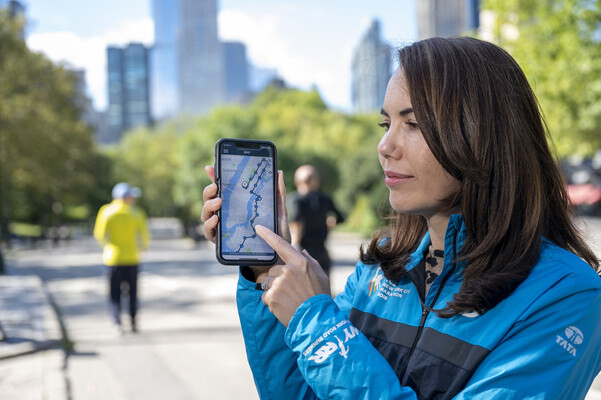
The location and estimated finishing time of in-person runners will be calculated based on performance of training runs and past marathons. This enhanced tracking capability will create the most accurate opportunities for spectators to catch runners live on the course.
"As we return to the iconic TCS New York City Marathon racecourse across the city's five boroughs, we are witnessing the race experience transform like never before," said Surya Kant, Chairman of North America, TCS. "Our 2021 Marathon App is filled with innovations that will help make this year's event a truly global experience, bringing both in-person participants as well as virtual runners across the world together on one platform."
"Together with our title partner TCS, we are looking forward to making the 50th running of the TCS New York City Marathon the most technologically advanced marathon in history," said Christine Burke, Senior Vice President, Strategic Partnerships and Runner Products, NYRR. "This will be a historic year for the event in so many ways, and as we embark on another eight years with TCS, there's no better way to have them engage with our runners than through their most innovative marathon app ever."

The TCS New York City Marathon app features additional enhancements to create a more immersive experience for virtual runners.
At numerous dedicated mile markers in the virtual marathon, the app will automatically play audio files with words of encouragement from past marathoners and iconic sounds from the in-person race. For example, all virtual marathon runners will begin their race with the sound of a cannon going off, simulating a similar experience to what in-person runners hear as their waves begin just south of the Verrazzano-Narrows Bridge.
The app will also allow virtual runners to do an unlimited number of 5K "Practice Runs" prior to their marathon journey to ensure they are comfortable using the app on race day. On race day, virtual runners can restart or pause an unlimited number of times but have 24 hours to complete the 26.2-mile race.
At the finish line, virtual runners will have access to a digital certificate and a selfie filter with an AR medal that can be shared on social media to celebrate their accomplishment.
Marathon City: 3D Map Details
Runners, spectators and fans can explore the TCS New York City Marathon course map in AR through the Marathon City: 3D Map, including:
Points of interest along and around the racecourse
Race day starting times for various groups
Elevation changes along the course
Interactive map showing the Start Village in Staten Island
This new AR experience was created by TCS in a stylized "low-poly" design similar to Marathon City: Sprint to Win and Marathon City: Spin to Win, two inclusive gaming experiences that mimic racing the last 100 meters of the TCS New York City Marathon racecourse through Central Park.
Other Key Features
Share Tracking: This feature on the Runner Details page allows users to share a link that initiates an automatic app download with a specific runner already selected to be tracked during the race.
Optimized Spectator Guides: The app's spectator guide helps fans create an itinerary to navigate New York City, so they're able to see runners on the course. The shareable guide provides a runner's estimated times of arrival, along with transportation directions and recommended viewing locations along the course.
Cheer Cards: Allows fans to support runners using the app to share messages on social media.
Live Pro Athlete Leader Board and Bios: Closely track the race day leaders in real time, as well as have access to bios, records and images of professional athletes running the race.
To download the TCS New York City Marathon App powered by Tata Consultancy Services, go to the Apple App Store or the Google Play Store.
About Tata Consultancy Services
Tata Consultancy Services is an IT services, consulting and business solutions organization that has been partnering with many of the world's largest businesses in their transformation journeys for over 50 years. TCS offers a consulting-led, cognitive powered, integrated portfolio of business, technology and engineering services and solutions. This is delivered through its unique Location Independent Agile™ delivery model, recognized as a benchmark of excellence in software development.
A part of the Tata group, India's largest multinational business group, TCS has over 528,000 of the world's best-trained consultants in 46 countries. The company generated consolidated revenues of US $22.2 billion in the fiscal year ended March 31, 2021 and is listed on the BSE (formerly Bombay Stock Exchange) and the NSE (National Stock Exchange) in India. TCS' proactive stance on climate change and award-winning work with communities across the world have earned it a place in leading sustainability indices such as the MSCI Global Sustainability Index and the FTSE4Good Emerging Index. For more information, visit www.tcs.com.
(10/22/2021) ⚡AMPTCS New York City Marathon
The first New York City Marathon, organized in 1970 by Fred Lebow and Vince Chiappetta, was held entirely in Central Park. Of 127 entrants, only 55 men finished; the sole female entrant dropped out due to illness. Winners were given inexpensive wristwatches and recycled baseball and bowling trophies. The entry fee was $1 and the total event budget...
more...The 2022 edition of Lagos City Marathon will return to full capacity
Organizers of the Access Bank Lagos City Marathon have confirmed the Silver Label race will be returning to full capacity for its next edition billed for February 12, 2022.
This development means the event will join other elite races across the world to return as a full race with about 80,000 to 100,000 runners expected to participate in the full marathon and the 10km fun run.
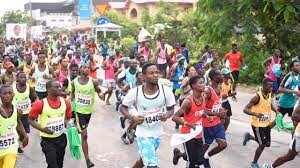
This was revealed by Yussuf Alli, the General Manager, Access Bank Lagos City Marathon, in an official press statement.
The 2021 edition of the Access Bank Lagos City was an elites only race because of COVID-, with only 300 athletes participating.
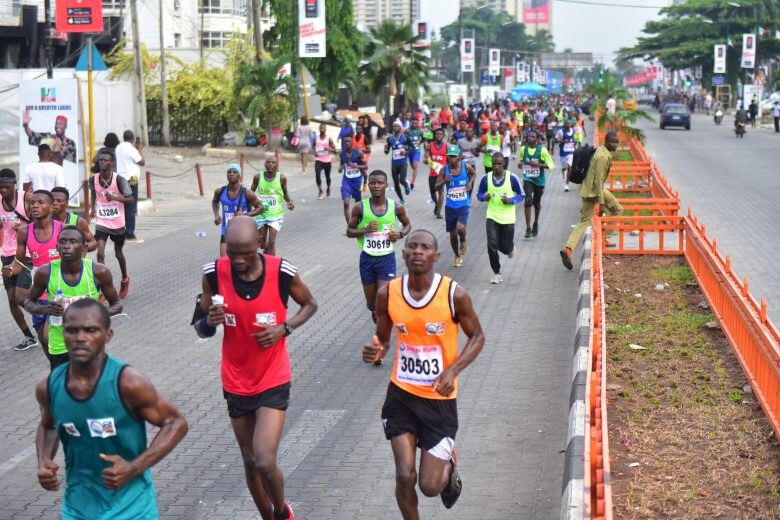
Other elite races like London, Tokyo, and others were also elites only races, while many races were outrightly cancelled.
But since September 2021, label races that were elites only in 2021 or were cancelled, have returned as full races, with thousands of runners.
These include the Berlin Marathon, London Marathon, Chicago Marathon, Boston Marathon, and others.
New York Marathon is slated for November 7, while other races are slated for the latter part of the year. Early in 2022 will be the Amsterdam Marathon, Dubai Tokyo, Paris, Houston, and others.
Mr Alli revealed that the World Athletics and Association of International Marathons and Distance Races (AIMS) are excited that the Access Bank Lagos City Marathon will return as a full race.
“I also want to use this medium to assure our numerous runners, especially the 10km fun runners who came to our office or contacted us on phone, emails, and via our website that on February 12, 2022, we will have a full race and that it will include the 10km race. I appeal to intending runners to step up their training”.
The General Manager also said there will be a world press conference the first week of November 2021 to unveil plans for the 2022 Access Bank Lagos City Marathon.
“This is our 7th edition. We are the first marathon in Nigeria to organize the 7th edition. We are also the first race to win a World Athletics Bronze Label in Africa after two editions and the first in the world to win the prestigious Silver Label after four editions.
“Last year, World Athletics gave us the Elite Road Race Label, we are one of the most sought after elite races in the world, in terms of prize money we rank among the top 10 in the world and in the number of participants we are top five in the world, I could go and on.
“To achieve all these before our seventh edition calls for celebration and the celebration is not just for staff, sponsors and vendors but for the media and thousands of runners that love and throng our race,” added Mr Alli.
(10/22/2021) ⚡AMPby Tunde Eludini
Access Bank Lagos City Marathon
“The IAAF and AIMS have a special interest in the Access Bank Lagos City Marathon so if you see their top officials at the third edition, don’t be surprised. Lagos is one of the few marathons in the world that got an IAAF Label after just two editions. This is a rare feat. The event had over 50,000 runners at...
more...

